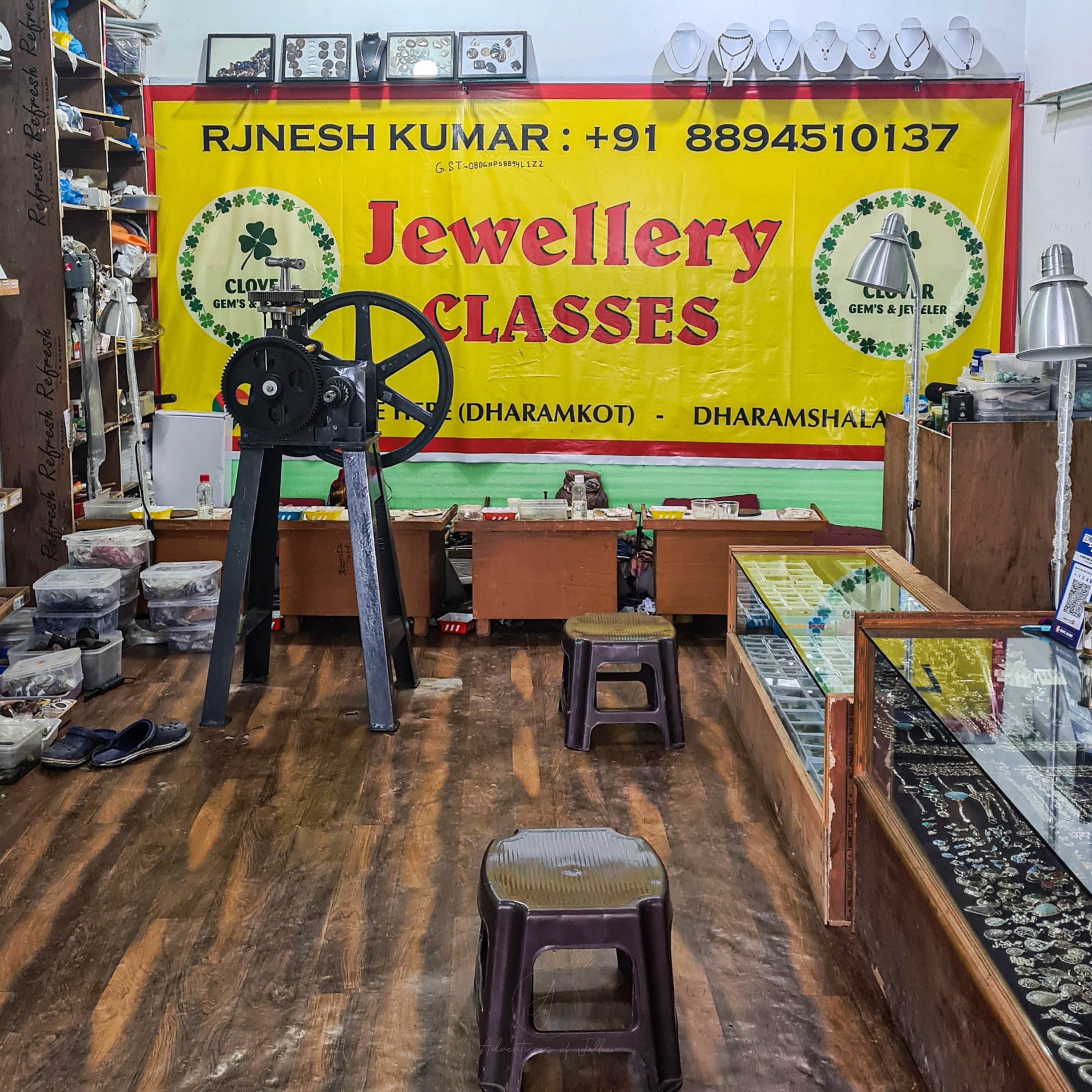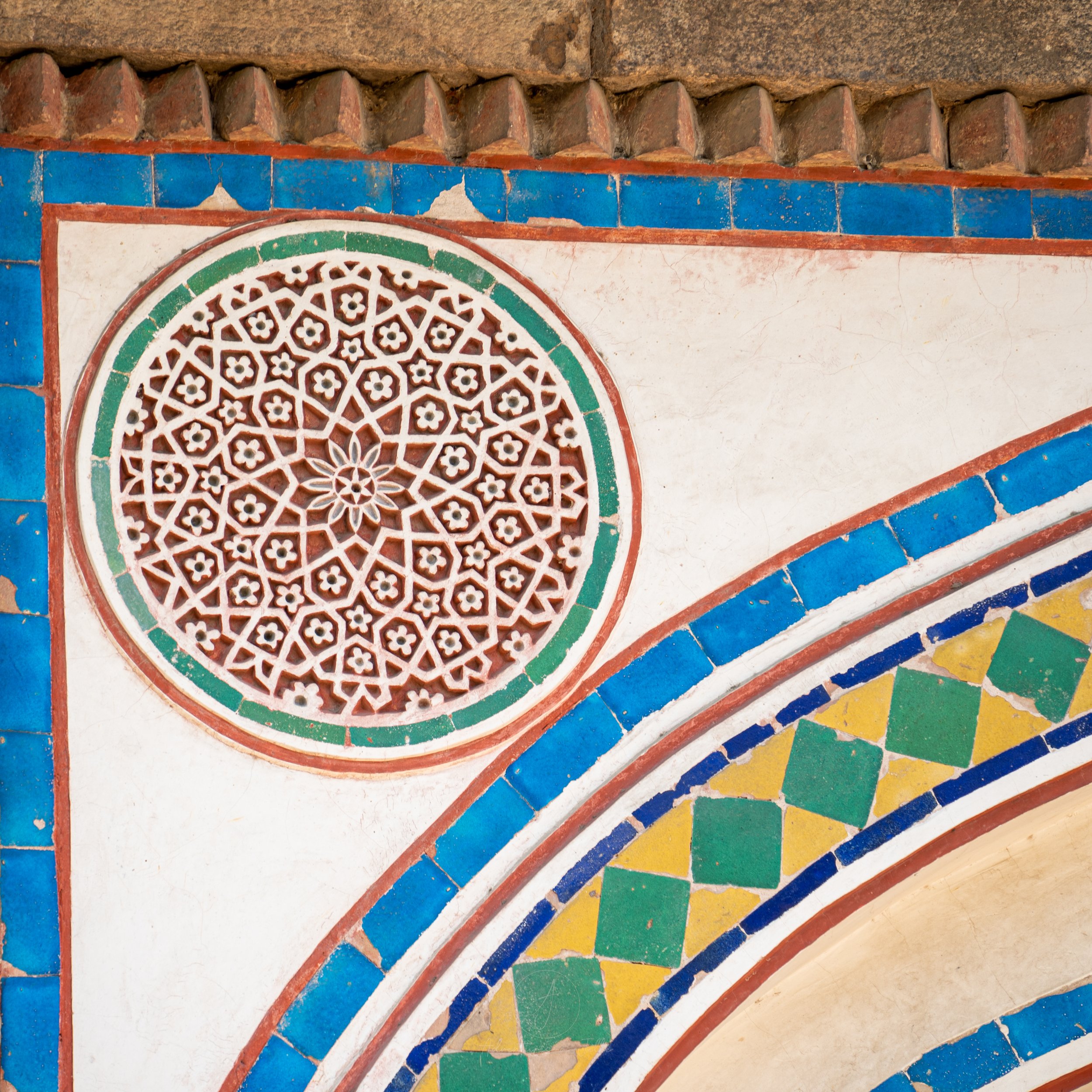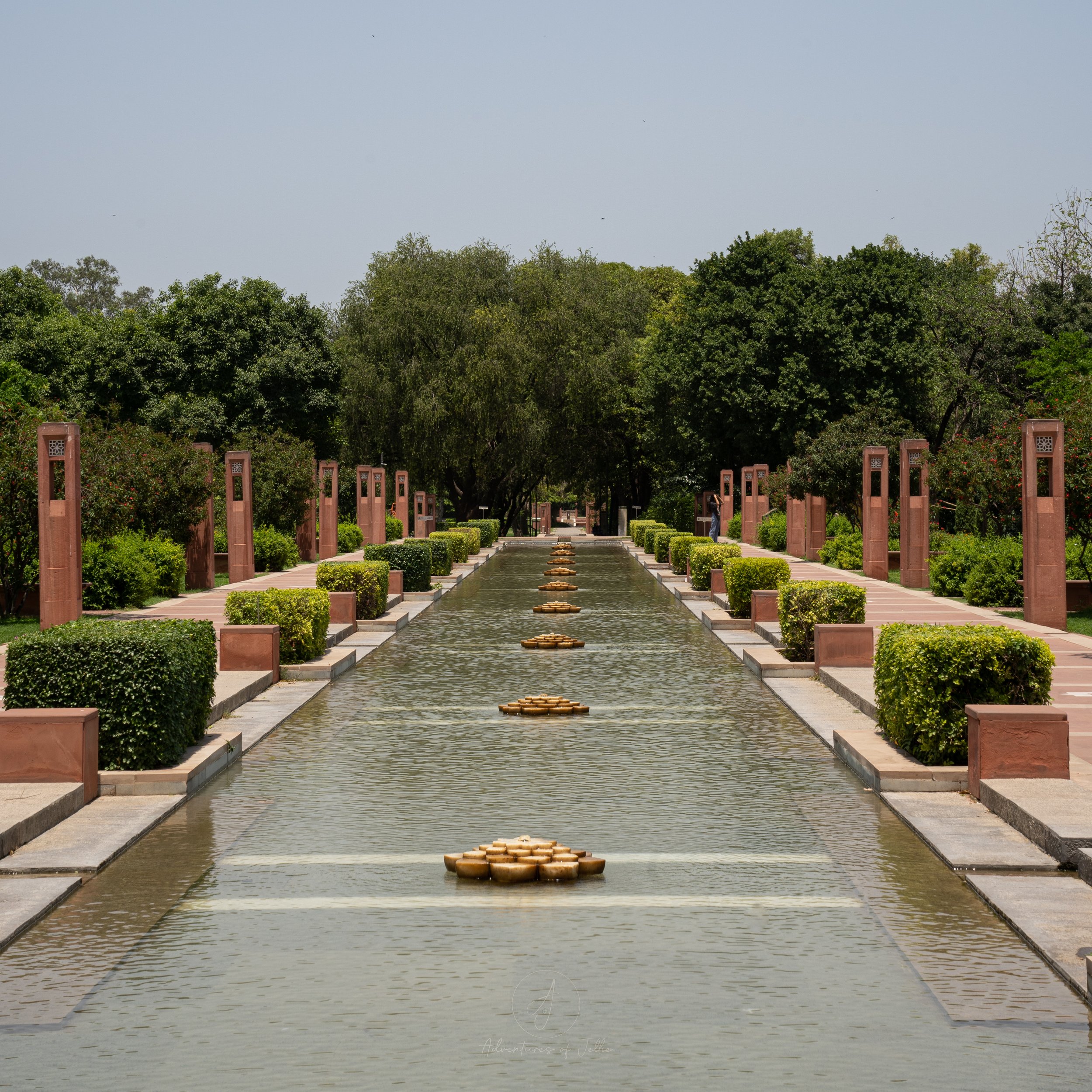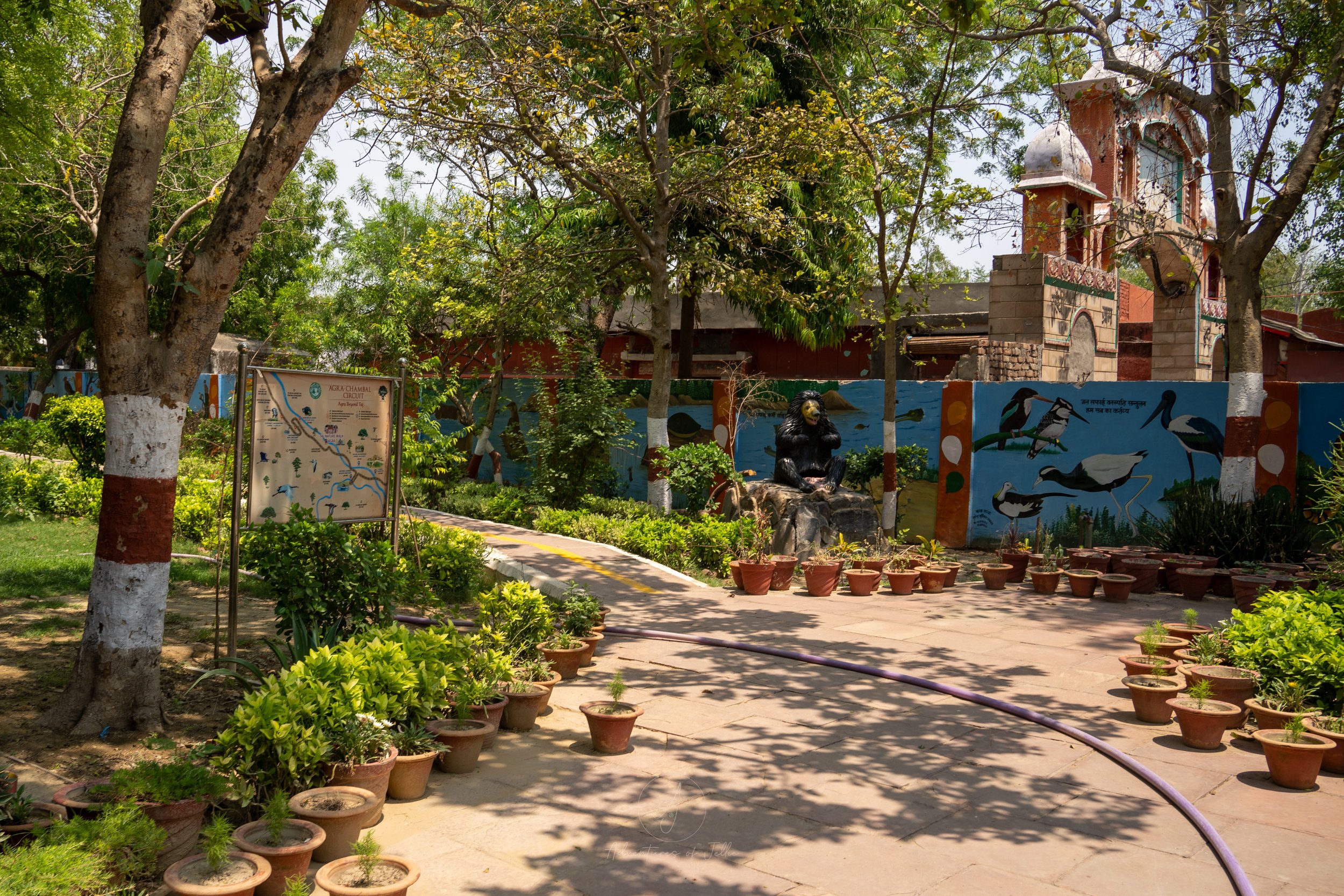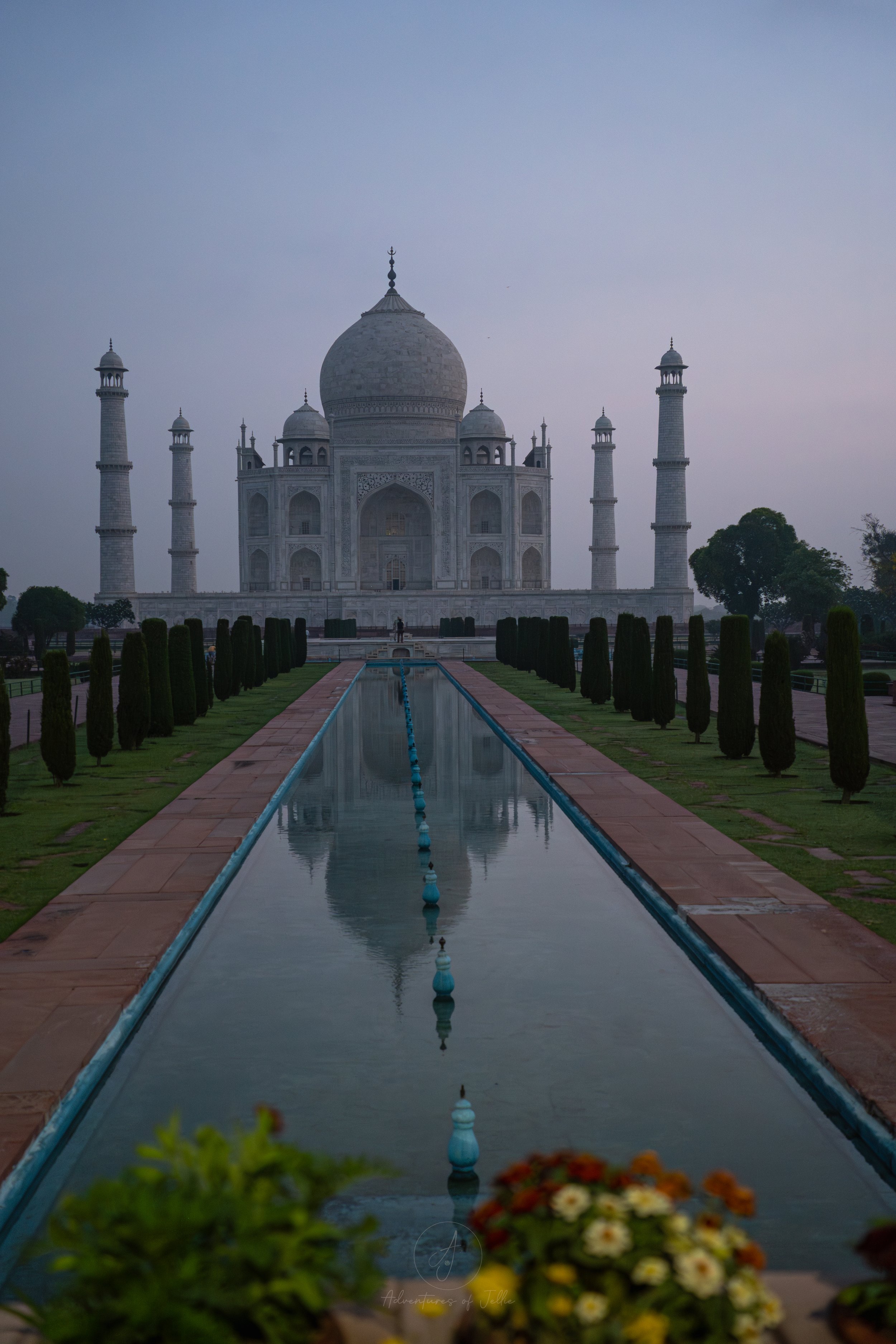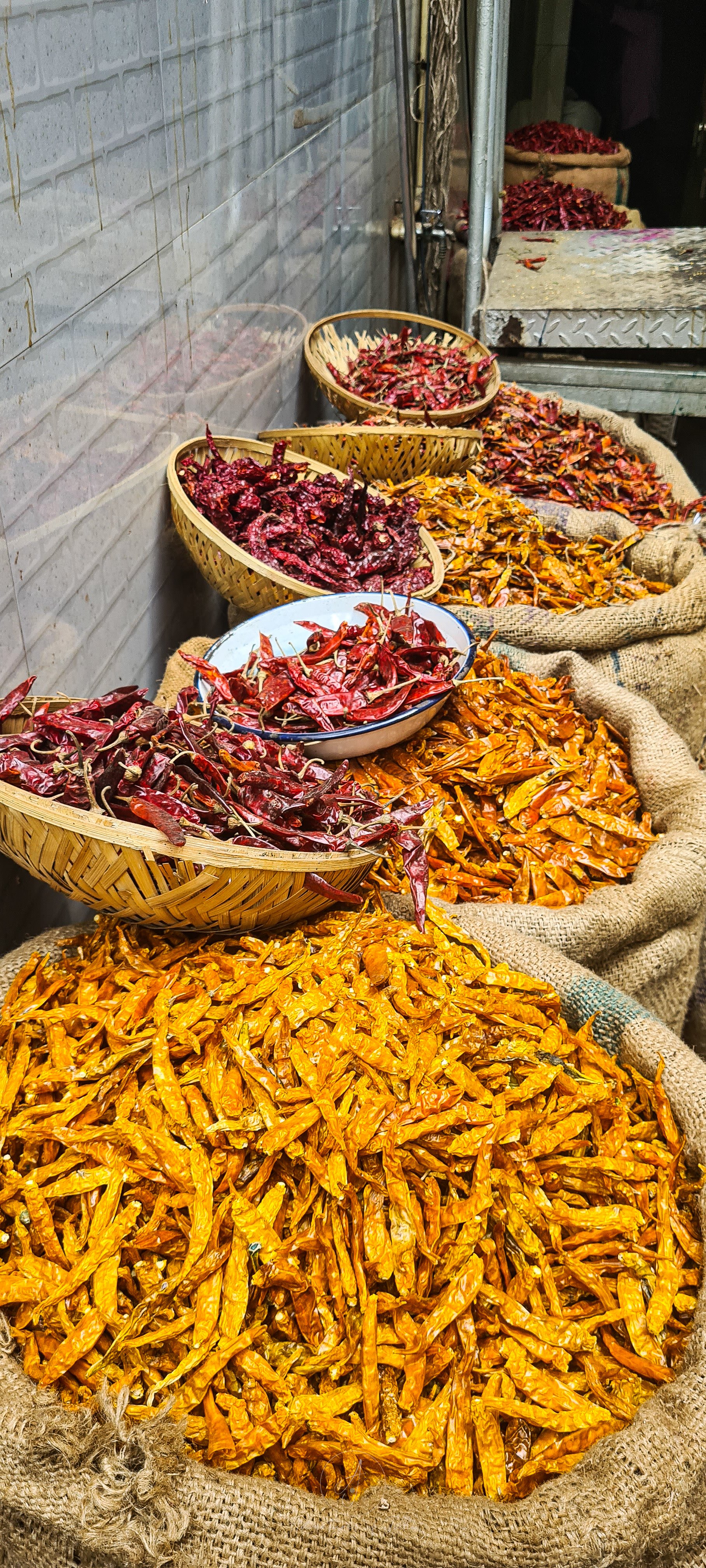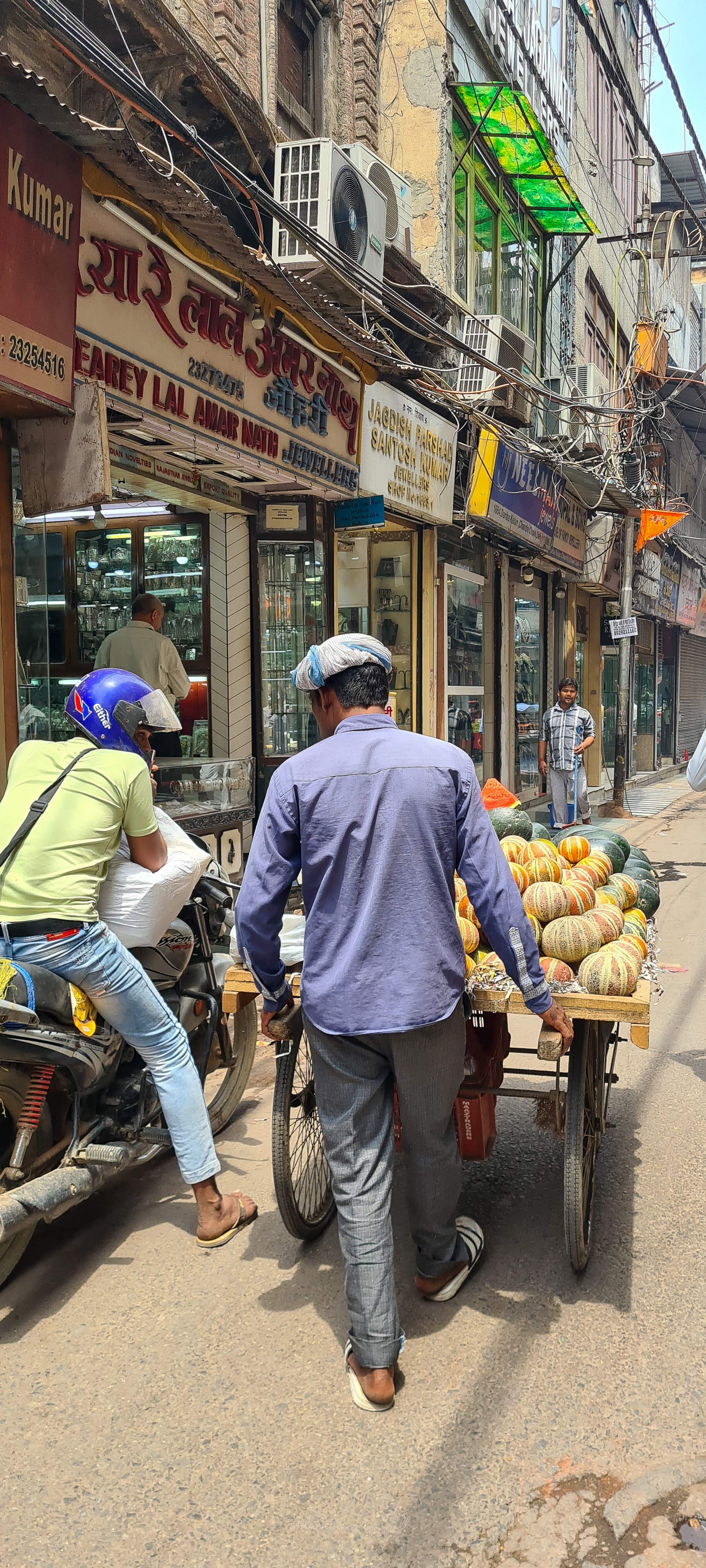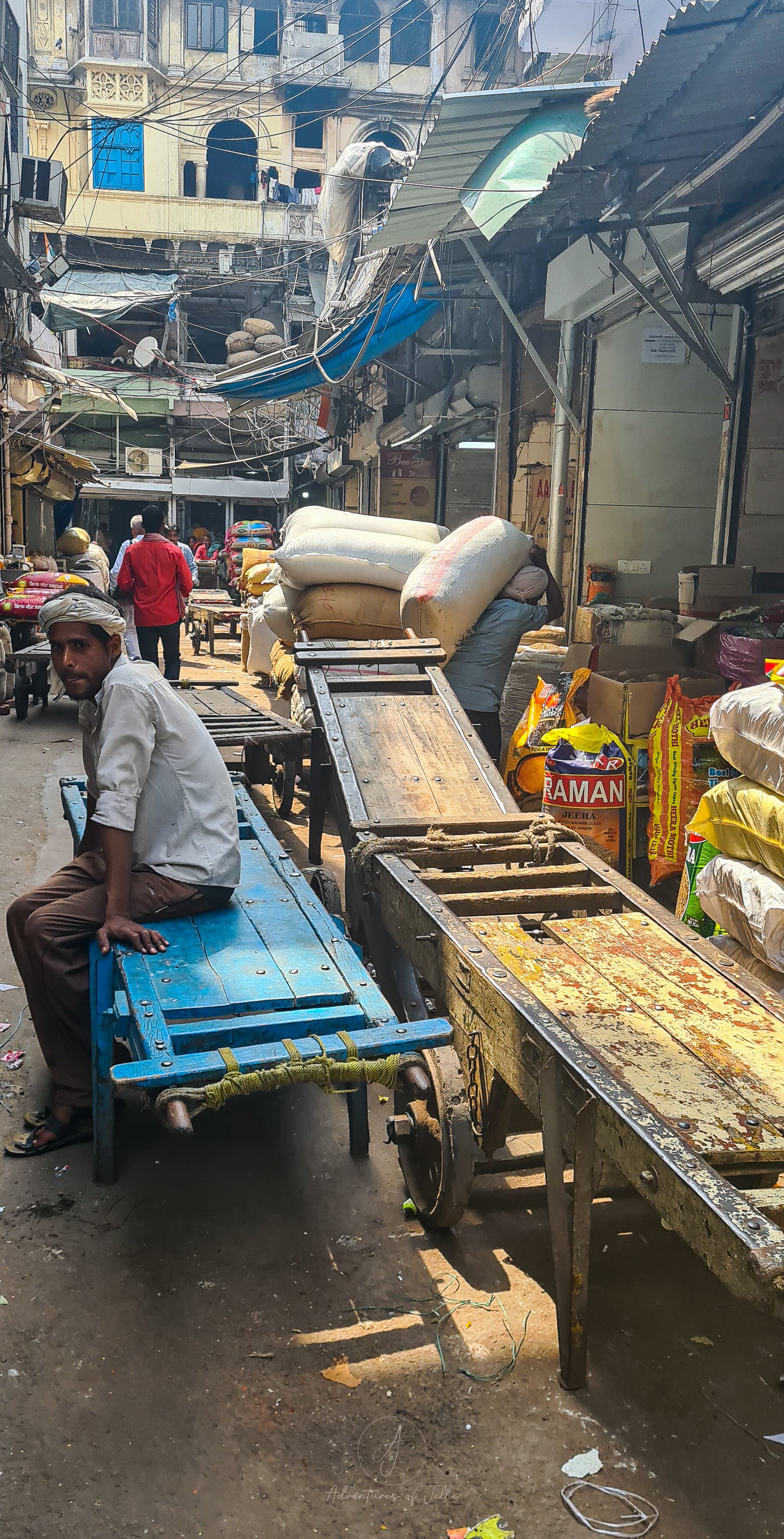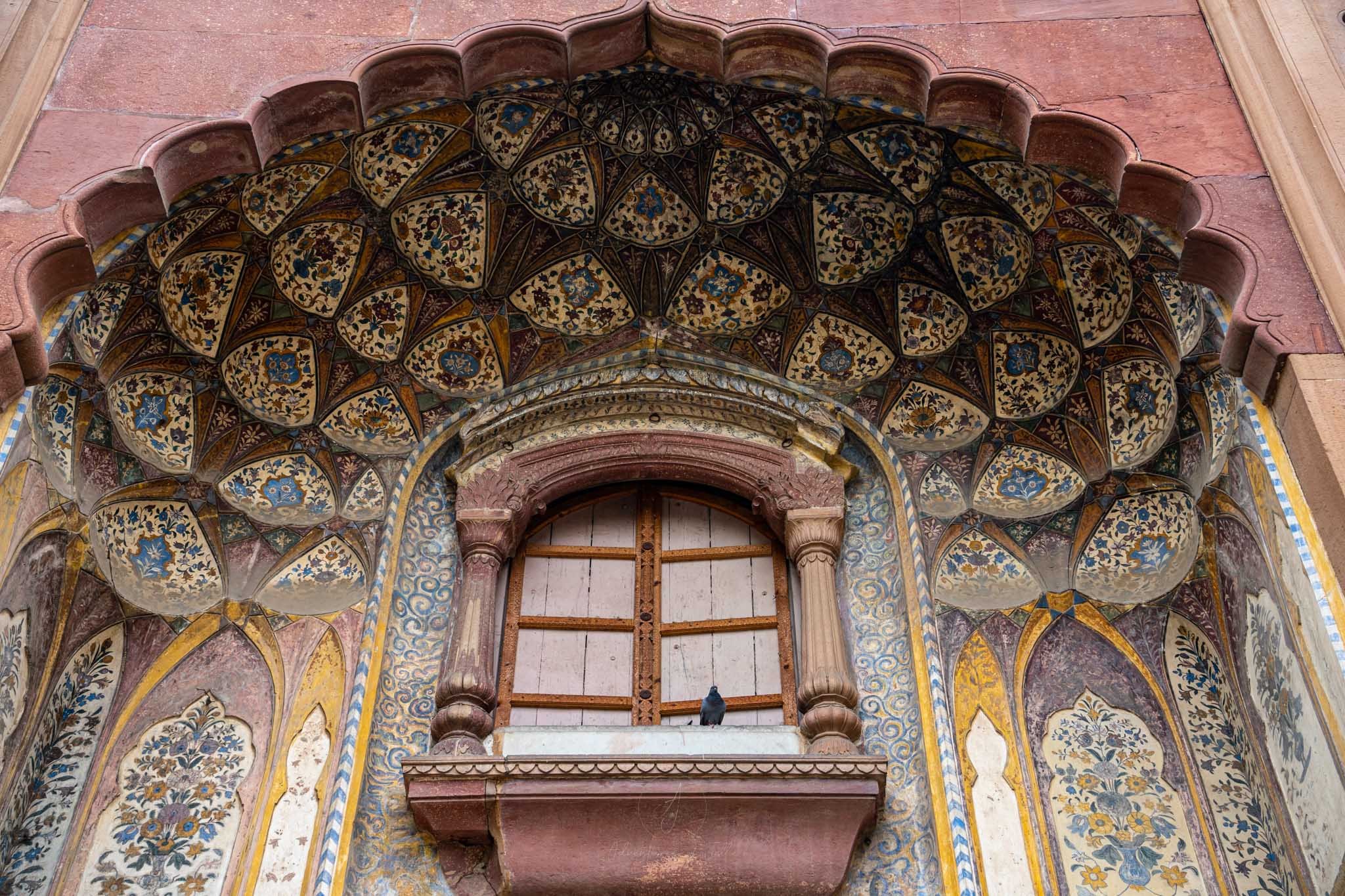Jewellery Making in the Mountains - Jewellery Classes in Dharamkot, Dharamshala
We’ve always been curious about making our own jewellery and the beautiful hillside town of Dharamkot we got our opportunity. Read our guide to what you can expect, how much it costs and how much fun you can have in a jewellery making class in the mountains of northern India!
Heading north from Dharamshala, up the mountains through Mcleod Gang, Bhagsu and Dharamkot, you can’t fail to notice the hundreds of jewellery shops, gemstone dealers, and silversmiths and many of these shops will advertise jewellery making classes. It was our engagement anniversary and we were in the market for some rings. So we thought, we’d go and check it out.
Skip to the facts here
Dharamkot is a stunningly pretty hippy/backpacker town, clinging to the mountain's edge far above Dharamshala. Colourful shop fronts line small pathways that serve as the main strip in this popular little town. There is no shortage of coffee shops, cafes or restaurants and plenty of places to buy any jewels, jewellery or gemstones that you may want.
Set somewhere in the middle of the strip is Clover Gems and Jewellers (Map Link).
We chose Clover Gems to be our jewellery sherpas after a quick Google search. They had a nice website, good reviews and responded quickly to our questions on WhatsApp. They offered us a three hour workshop at 400 rupees each (£3.76 or $4.85) plus the silver cost for whatever we made. The cost of silver seems to be uniform throughout Dharamkot and Bhagsu at 100 rupees per gram (£0.94 or $1.21). There were slots available in the morning and afternoon, starting at either 11am or 4pm. We decided to make a day of it and chose the 4pm slot.
Arriving at Clover Gems we were welcomed in and instantly surrounded by baskets of gemstones in every colour, shape and size, bloodstones to topaz, amethyst to opal and everything in between sparkled and glinted at us from the shelves. On the right hand side of the shop were trays and trays of rings, bracelets and amulets. These served as useful examples if you hadn’t arrived with a design in mind.
John had a clear idea of what he wanted from a ring and so was quickly seated by the low seated jewellers benches that lined the back wall. Before John knew quite what was going on, he had been handed a blowtorch and was instructed to put the flame to a small pile of silver scraps. Under guidance, he watched as first the scraps turned fluorescent orange, before flowing together into a lump of solid silver. A quick acid dunk and water bath later and the raw materials were ready for his ring.
We always had a helping hand when needed!
I knew I wanted a gemstone ring, but had no idea of what design or stone I wanted. I was shown rows of rings as examples and quickly came up with a combination of designs that I thought would look good. Next came the gems. I’m not ashamed to admit it felt like being a kid in a candy shop. Trays and trays of sparkly colourful gems all for me to choose from. I would like to point out here that these gems were not diamonds, emeralds or rubies (although if you were in the market, they could definitely be provided) but much cheaper stones! The stones being cheaper meant that I had free range to choose whatever I wanted and it wouldn’t break our backpacker budget. Sifting through the tray, I spotted a beautiful translucent grey blue moonstone and my choice was made. I quickly joined John behind the benches and were given a blowtorch of my own.
Choices, choices, choices!
The next few hours were spent hammering, tweezing, bending and filing under the expert tutelage of Tapa the jewellery maker. John’s ring took shape after being repeatedly blowtorched, shaped and pressed through what looked like a mangle for metal. Whereas my more dainty ring with its stone was joined together with millimetre thin bindings around a delicate housing. My ring was finished before John’s and I decided to treat myself to a pendant as well.
Again I went through the treasure boxes of gemstones and my eye was caught by a large pearlescent green teardrop stone that I thought would look perfect. The pendant took on the same process as the ring, with a silver housing that enclosed the stone, and a delicate silver loop for the chain to pass through.
The process of making our jewellery was a mix of hands on from us for the simple things, and the professionals taking over at the more complex parts. This never felt patronising and they did only take over where we could have really messed up the designs.
We had a fantastic afternoon learning all about the art of jewellery crafting as we hammered, crafted, polished and filed our bespoke jewellery pieces. We both enjoy arts and crafts and this was such a great way to spend an afternoon. Our rings came out, to our eyes at least perfect!
We now have some custom jewellery, made by us that will always remind us of our time in the mountains of Dharamshala.
John’s hammered silver ring and my elegant moonstone ring and simple pendant turned out great!
All the important information:
How much does it cost?
400 rupees each for the class (800 rupees for the two of us) for three hours.
John’s ring: 650 rupees
Ellie’s ring, pendant and two gemstones: 550 rupees
Total jewellery making session: 2150 rupees for two people plus three items of jewellery (£20.22 or $26.08)
Come on, that’s a bargain even for two long-term backpackers!
Can I make jewellery with no experience?
We have never made anything more complicated than Ikea furniture and certainly have never done any jewellery making. You could do this whatever your experience.
Where is Dharamkot? (Map Link)
Dharamkot is north of McLeod Gang and Dharamshala and just above Bhagsu. You can walk to Dharamkot from McLeod Gang or Bhagsu in under half an hour, or take a taxi. The road will only take you to either side of the village and you will have to make your own way down its pretty lanes to the shop.
Where else can I make jewellery in Dharamshala?
Pretty much everywhere. There are dozens and dozens of jewellery makers offering classes. We can’t comment on quality (as we haven’t been to them) but the prices seem fairly uniform and the gemstones on offer tend to be similarly priced. Just agree up front what kind of range you’re looking at paying for. Some stones will be more expensive than others! Just let them know your budget and they should steer you right.
Thanks for reading,
John & Ellie x
#adventuresofjellie
If you’re found this blog helpful, entertaining or you just fancy supporting us, please click the button below!
If you’ve enjoyed reading this article, why not save the pin below?
Humayun’s Tomb - A Mughal Masterpiece
Humayun’s Tomb is a UNESCO World Heritage Site in the Indian capital city of Delhi. Read our guide for the top tips and tricks for visiting this magnificent Mughal mausoleum and its beautiful grounds!
Delhi has no shortage of historic sites to visit. From the world famous Red Fort and the narrow alleyways of Chandni Chowk, to the Lodhi Gardens and the Qutub Minar in the south of the city. During our fortnight in India’s capital, amongst sampling the finest food Delhi had to offer, we made every effort to see as many of these grand monuments as possible. One of the most impressive sites we visited was the famous Humayun’s Tomb.
Humayun’s Tomb is a UNESCO World Heritage Site and was built in 1570. At the time of its construction, the tomb was the first garden tomb on the Indian subcontinent.
The grand mausoleum was designed by Mirak Mirza Ghiyas and was commissioned by Humayun’s first wife, the Empress Bega Begum 14 years after the death of her husband. The Empress was committed to making the grandest tomb in the whole empire for her late husband, a sentiment that many years on, would be echoed by Shah Jahan and the Taj Mahal. During the time of its construction, the design of Humayun’s Tomb was unlike anything that had been built before in the Indian Islamic World.
The site of the grand tomb is amongst other mausoleums including the Barber’s Tomb, the tomb of Isa Khan’s and Afsarwala Tomb. This complex of tombs now make up the grounds of Humayun’s Tomb with Humayun’s Tomb itself being known as the “Dormitory of the Mughals” as 150 Mughal family members are now interred within.
Our Experience of Humayun’s Tomb
We arrived at Humayun’s Tomb on an extremely hot day in Delhi with temperatures predicted to reach over 40 degrees celsius by midday. We arrived mid morning and well before the crowds descended and walked straight up to the ticket counter and purchased two tickets (600 rupees each - £5.78 or $7.32).
Tickets acquired, we strolled into the vast grounds. After a tree lined avenue the path splits and we took the right hand fork towards Isa Khan’s tomb.
Isa Khan’s octagonal tomb was beautiful. With colourful blue domes and ornate stone carving, set amongst green lawns and surrounded by red walls, it was a striking start to the day.
The gates to the Serai were massive!
After Isa Khan’s tomb we rejoined the main path and headed towards Humayun’s Tomb. On the way there we passed the remains of the Arab Serai. This ruined caravansary is all that remains of the market and housing for the craftsmen, artists and merchants the Empress had brought in from across the Arab world to help in the tombs construction. The huge arched gate still sits proudly on the side of the approach to Humayun’s Tomb.
As you enter the gates that mark the perimeter of the gardens surrounding Humayun’s Tomb, there is a small museum that gives information about the local area, the construction of the tomb itself and some of the archeological finds they have dug up within the vicinity. It doesn’t look like much but it is really worth a stop as the whole area surrounding the tomb is speckled with incredible historic sites, buildings and ruins. The construction of the nearby Nizamuddin Railway Station unearthed some amazing discoveries. We found during our stay in Delhi that wherever you wandered you’d frequently stumble upon ancient buildings, whether it was in the warren of Mohammadpur to the grounds of Hauz Khas or the Lodhi Gardens.
After the museum and through the gateway arch, the gardens spread out in front of us. Square pools linked by long channels of water led down in a straight line to the raised square mausoleum. The gardens are built around the Islamic concept of a “Paradise Garden”. A charbagh garden follows a square design that attempts to replicate the four paradise gardens mentioned in the Quran.
The grid of gardens is even more obvious from up high!
Sitting in the centre of the symmetrical gardens was the grand tomb of Humayun. Huge red and white stone arches support the base of the massive domed tomb. Steep stairs lead up to the mausoleum itself.
Inside, the mausoleum is austere yet beautiful. Lattice carved stone work lets in patterned light, whilst overhead the domes are ornately decorated. In keeping with the traditional style the tombs themselves are humble made of simple clean white marble.
The shaded cool mausoleum was a tranquil oasis separated into dozens of smaller rooms, each with their own tombs, carvings and intricately latticed windows. The tomb of Humayun is the first example of its type of architecture in India, and became the model of the “Mughal tomb”. You can clearly see its influence on Safdarjung Tomb as well as the iconic Taj Mahal.
In the grounds surrounding the tomb there are many more mausoleums and ruins to explore. You could easily spend most of the day here, taking in the calm atmosphere and amazing historic buildings.
We had loved our time exploring Humayun’s Tomb. We had seen photos and videos online, but nothing we had seen really gave us an idea of the scale and grandeur of the place. From the massive gardens, to the carved window screens inside, every detail of the tombs was intricate, beautiful and amazing.
How to get to Humayun’s Tomb?
Humayun’s Tomb is easily accessible via taxi or rickshaw. You can grab one from the street side, or, if you don’t feel like negotiating prices, use Uber or Ola (see our guide for other useful Delhi tips ).
Humayun’s Tomb is nearby to the Nizamuddin Railway Station and is technically walkable but we would not recommend this as it involves very busy main roads (Delhi roads are not to be underestimated!). If you do come in by train, you can just grab a quick cheap rickshaw to the entrance.
For those travelling by Metro, there are two stations nearby, Jawahar Lal Nehru (Violet Line) and Supreme Court Station (Blue Line) again you’ll need to grab a short rickshaw ride from the station to the tomb.There are also bus stops located on the main road just outside the tomb.
We would definitely recommend combining a visit to the amazing Sunder Nursery whose entrance is easily walkable from the ticket counter of Humayun’s Tomb. It was a great way to cool off and chill out after exploring the mausoleum grounds.
If you’d prefer to have everything arranged in advance and don’t mind paying for piece of mind, you can prebook transport online through 12Go.
What is the entrance fee?
Tickets cost 600 rupees for foreigners (£5.78 or $7.32).
Tickets can be bought using credit and debit cards for a discount of 10% at least that’s what the signs we saw after we had paid in cash said.
What time does Humayun’s Tomb open?
Humayun’s Tomb opens at sunrise and closes at 9pm. We’d recommend getting to the tomb early, as it is an extremely popular tourist site and so will get very busy as the day goes on.
What is the dress code?
There is no official dress code, but as this is a mausoleum and a UNESCO World Heritage Site don’t dress like an idiot. It’s a very busy site for tourists throughout India and the rest of the world, and as such, a female traveller in hot pants may get some unwanted attention!
Are there toilets available?
There are public toilets available within the grounds. We didn’t use them so best of luck to you and let us know what they are like in the comments below.
Thanks for reading,
John & Ellie x
#adventuresofjellie
Scroll through to see some more photos from our day at Humayun’s Tomb!
After you’ve finished visiting Humayun’s Tomb, why not walk over the road to the Sunder Nursery for a peaceful walk around our favourite park in Delhi!
*Prices correct at time of visiting - May 2023
If you’re found this blog helpful, entertaining or you just fancy supporting us, please click the button below!
If you’ve enjoyed reading this article, why not save the pin below?
The Sunder Nursery - Delhi’s Secret Garden
In the heart of India's chaotic capital of Delhi sits a secret oasis. Okay it's not very secret, the Sunder Nursery has been a historic garden, beauty spot and plant breeding centre for centuries. Read our guide to find why this green oasis is a must stop on your Delhi itinerary!
After a few days in India’s hectic and chaotic capital, it’s inevitable that you’ll want to seek out some peace and quiet from the frenetic streets. Located in south east Delhi and opposite the UNESCO World Heritage Site of Humayun’s Tomb, the Sunder Nursery is a perfect place to unwind, relax and breathe a breath of fresh air!
What is the Sunder Nursery?
The Sunder Nursery is a large park that was known as the Azimuth Bagh or “Great Garden” in Mughal times. Renovated in the 20th century, the nursery was used, under British rule, to propagate new plants and trees for the new capital, New Delhi.
Nowadays the Sunder Nursery is a manicured landscape garden and nursery, popular with locals and tourists alike, who wish to escape the dusty streets and unwind in a beautiful green oasis.
How much does the Sunder Nursery cost to visit?
Entry tickets for the Sunder Nursery cost 200 rupees each (£1.94 or $2.43) for non Indians.
Our experience of the Sunder Nursery
We visited the Sunder Nursery after a morning being baked by the sun at Humayun’s Tomb. The temperature was nearing the 40 degrees celsius mark and we were eager to find some shade.
We brought our tickets, along with two ice creams (we highly recommend the butterscotch Cornettos) and headed into the nursery. We had visited a few of Delhi’s parks including the lovely Lodhi Gardens and the calm Deer Park at Hauz Khas, but what we found at Sunder Nursery really was on another level.
Straight out of the entrance a long, ornamental water garden stretched away from us. With rivulets of water running through carved canals, that spiralled and curved through calligraphy and shapes. Next to the running water were hidden benches set amongst flowering green plants and jasmine trees. It really was a cool oasis, far away from the hustle of the surrounding city. When we looked at a map later, it seemed incredible that this peaceful garden effectively backed onto one of the busiest train stations in the country!
As we led away from the long water garden, the water canal expanded into an ornamental lake with fountains and overhanging trees. Dotted around the lake were little picnic spots, and not for the first time in Delhi, we wished we’d brought a packed lunch.
The whole garden was full of these secret nooks, and hidden surprises. From formal gardens, to semi wild areas, wooded dells to ruins and rose gardens, the Sunder Nursery was a treasure trove. As we explored, we felt that any turn we made could have led us straight into Frances Hodgson Burnett’s Secret Garden.
As we left the more formal gardens, and vast nurseries behind, we stumbled upon the wild gardens. The Sunder Nurseries wild garden was one of our favourite parts of the whole nursery. Artfully planted to look natural, with large trees creating shade over vast flowing brooks it was a world away from the baking, noisy maelstrom of Delhi. The path followed alongside the bubbling brook, and wound its way through foliage that wouldn’t have looked out of place in the Welsh Valleys.
In amongst the colourful flower beds and elegant walkways, are strewn a host of ruins. Many of these ruins are UNESCO World Heritage monuments in their own right, but set within the gardens they blend perfectly in with the landscaped greenery. The ruins are not cordoned off, and you were free to wander in and out of their shaded and dilapidated rooms. We saw many families using their shade to have picnics in their ruined halls.
In the grounds, butterflies whiled and peacocks wandered around, whilst cheeky chipmunks scampered from branch to branch. We even spotted a Grey Hornbill in a tree. We like to think that he was a slightly drabber cousin to the more vibrant Thai Hornbills we spotted on Koh Yao Noi.
The Sunder Nursery was unexpectedly brilliant. Perhaps we didn’t do the research, but we were utterly blown away by the gardens. They were bigger than we expected, more interesting and far, far more beautiful! As a stop we had made just to get out of the sun, the Sunder Nursery was fantastic, well worth a visit, and should certainly be included on any Delhi itinerary.
How to get to the Sunder Nursery?
For those combining a trip to the Sunder Nursery with Humayun’s Tomb, the Sunder Nursery is located within walking distance of the entrance to Humayun’s Tomb. Both the tomb and the nursery could easily be combined in one trip.
The easiest way to get to the Sunder Nursery (or Humayun’s Tomb) is via rickshaw or taxi. In Delhi, auto rickshaws can be flagged down on the street, or pre-booked online via Uber or Ola. When we visited, we booked an auto-rickshaw via Uber from our hostel, JHouse in Mohammadpur and the journey took us just twenty minutes to reach the gates of the Sunder Nursery.
The Sunder Nursery is located a short drive from Nizamuddin Railway Station. You can walk for around twenty minutes from the station, however, the walk will not be the nicest so we would recommend getting an auto rickshaw from the station to drop you off.
For those travelling by metro, the closest stations are Jawahar Lal Nehru (Violet Line) and Supreme Court Station (Blue Line). Once you have arrived at these stations you will need to hop in an auto rickshaw to get you to the entrance. We would say in support of lazy people that the auto rickshaws, at least when booked through Uber, are super cheap. The twenty minute journey from our hostel in Mohammadpur cost under £2 so would hardly break the bank.
There are bus stops just outside Humayun’s Tomb that can take you to Nizamuddin Railway Station, further south, or up north to connect you with Old Delhi.
There is also car parking available at the site.
Is there food and drink available?
Yes, there are several cafes and snack vans dotted around the nursery, however the water on sale is extremely expensive. As no plastic is allowed to be sold within the nursery, the water is all in fancy glass bottles and the price reflects this. Shamefully, the Coca Cola in a can is far cheaper!
If you’re visiting on the weekend you can also catch an organic and lifestyle market held in the grounds.
Are there toilet facilities to use?
Yes, there are toilets in the nursery, however we didn’t use them so can’t comment on how they were.
Is this a good place to bring children?
Definitely! In addition to the lawns and open spaces, there is a large adventure playground for children. We think there was a small charge for admission, but being India this was not expensive.
Thanks for reading,
John & Ellie x
#adventuresofjellie
After you have finished exploring the Sunder Nursery, why not head just over the road and explore the incredible Humayun’s Tomb!
*Prices correct at time of visiting - May 2023
If you’re found this blog helpful, entertaining or you just fancy supporting us, please click the button below!
If you’ve enjoyed reading this article, why not save the pin below?
The Taj Nature Walk - The Green Oasis of Agra
Agra is more than just the Taj Mahal. Five minutes walk from the throngs of tourists at the UNESCO World Heritage site, the Taj Nature Walk provides an oasis of calm. Filled with green spaces, wildlife and picturesque views, the Taj Nature Walk is a worthy addition to any trip to Agra!
Those who come to Agra visit for one reason - the UNESCO World Heritage Site, the Wonder of the World, the Taj Mahal. But for those who stay a little longer, Agra has some lesser known delights. A five minute walk from the East Gate of the Taj Mahal, is the Taj Nature Park.
Follow the colourfully painted trees and well paved street away from the Taj’s East Gate and you’ll soon come across the unassuming entrance to the Taj Nature Park.
This enclosed nature park offers a calm respite from Agra’s claustrophobic streets and oppressive heat.
Tickets cost 150 rupees each for foreign nationals.
Once inside the park you can follow the colourful paths as they loop and curve around rock gardens, selfie spots, ponds and gazebos.
The whole nature park undulates up and down with little hills, dells and hidden pockets all over. This creates lovely cool and private areas to sit and relax in as well as little “peaks” where you get a glimpse of the Taj Mahal.
We’d recommend taking the right hand path and not being afraid to veer off the paved paths onto the dusty mud trails that lead deeper into the nature park.
In terms of wildlife we saw tons of different birds including peacocks, hawks and eagles, as well as cheeky chipmunks everywhere and also a large group of macaques. As we got deeper and further away from the family lawn, we also discovered that this park is a popular teenage make out spot, and a lot of the pagodas seemed to be reserved for some very private canoodling!
There are refreshments available at the ticket counter and toilets dotted around the park. If you’re travelling with children, this park is great with plenty of play areas, green spaces to run around as well as swings, slides and climbing frames to play on. If you’ve dragged your child around the Taj Mahal all morning, this would be a lovely reward, this was one the most kid friendly activities we saw in Agra.
To copy the locals (we wished we had done this) pack a picnic and sit on one of the well maintained lawns, under the shade of trees and enjoy a very scenic lunch.
The Taj Nature Park is a fantastic little getaway in Agra. You get unique views of the Taj Mahal without the crowds and hectic atmosphere of downtown Agra and for the price of entry, this is a fantastic place to visit.
Thanks for reading,
John & Ellie x
#adventuresofjellie
If you’re found this blog helpful, entertaining or you just fancy supporting us, please click the button below!
If you’ve enjoyed reading this article, why not save the pin below?
Secret Rooftop views, Sunset at the Taj Mahal - Joeys Hostel and the Hippie Cafe.
Agra - home of the legendary Taj Mahal. The ancient streets have plenty of places to stay and lots of restaurants to choose from. But, if you want the best sunset views of the Taj Mahal, then you need to read our guide to the fantastic backpacker hostel and rooftop restaurant - Joeys Hostel Agra.
After a full day of exploring around Agra, there’s no better way to spend an evening than having the sun set across a fantastic view of the Taj Mahal. Watching this Wonder of the World be painted different colours by the setting sun, is a magic way to start any evening. The Hippie Cafe on the roof of Joeys Hostel in Agra, provides the perfect platform for just this.
Disclosure: This article may contain affiliate links. We will earn a small commission from any purchases made through these links. This article was written before the affiliate links were added, and is a genuine reflection on our stay.
The Hippie Cafe - Rooftop restaurant with sunset views of the Taj Mahal
Attached to the rooftop of Joey’s Hostel Agra, the Hippie Cafe boasts unbeatable views over the rooftops all the way across to the Taj Mahal itself. Photos really don’t do it justice (although we will try) as the Taj looks much closer in real life than it did through any viewfinder. The best part of the Hippie Cafe is the sunset views over the Taj Mahal. The vantage point from the cafe is amazing, it is the perfect place to watch the sun sink down behind the marble marvel of the Taj Mahal.
There are many places in Agra you can get a view of the Taj from but we really cannot imagine you can do much better than Joey’s Hostel and the Hippie Cafe. Between you and a wonder of the world is just flat roofs all teaming with local life. From the afternoon, through early evening and into the night, the flat rooftops came alive with people, action and animals.
In the evening children by the dozen congregated on the roofs to fly their kites whilst all around them monkeys dashed about, cats lounged and colourful washing was hung out to dry. This, with the background of the Taj Mahal and the sky fire of the fading sun made it one of our favourite scenic spots on our adventures so far.
To add to the magnificent views, the food at Hippie Cafe is great too, especially the potato curries and the mushroom matter. The menu offers reasonably priced (and delicious) Indian fare with a few Western sandwiches and Chinese noodle dishes available as well. We ordered several times from here and were never disappointed. For a starter, we highly recommend their fried masala crispy corn!
Prices are reasonable for a rooftop restaurant with views of the Taj Mahal: a meal for two setting us back around 700 to 800 rupees.
The Hippie Cafe is open to everyone, but sits on the rooftop of Joey’s Hostel. Speaking of which:
Joey’s Hostel - the perfect backpacker accommodation choice in Agra
We stayed at Joey’s Hostel for several nights in a private room which was cheap, basic and spacious. The hostel staff were brilliant, organising sunset walks as well as a great breakfast for an extra cost of 250 rupees per person (£2.42 or $3.04). In the evenings, the Hippie Cafe swells in popularity as the backpackers return from their days exploring and all congregate on the roof to sip cups of chai with mellow tunes and twinkling fairy lights.
On one night, the hostel organised a great curry buffet and a moonlight viewing party for the Taj Mahal. The Taj Mahal under a full moon was wonderful enough, but the Taj Mahal under a full moon with a lightly spiced, perfectly sweet warm (and complimentary) rice pudding was even better!
When staying in Agra the accommodation is all over the place, spread over both sides of the river and for miles around.
For those on a backpacking budget, Joey’s Hostel Agra really was unbeatable. Set only a five minute walk from the East Gate of the Taj Mahal, and ten minutes walk from the West Gate. Joey’s rooftop is only a couple of hundred metres away from the ancient dividing wall of the Taj Mahal - you really can’t beat the location. As we’ve mentioned the rooms are very basic, but our bed was comfy, the shower was hot and the AC was powerful.
To book your stay at Joey’s Hostel Agra, click here!
Another bonus point for staying at Joey’s, and possibly our favourite unexpected feature of the hostel was the entrance. Each morning, you’d exit from a small alleyway lined with very friendly goats. They were very eager to have a nibble on any item of clothing that stayed near them for too long but are also very receptive to head pats!
Careful where you park your bike, there’s some hungry goats about!
The area around Joey’s is a busy warren full of ancient winding streets, restaurants, tailors and constant mopeds. Being so close to the Taj Mahal it is incredibly busy, but is a really interesting mix of local life coexisting with the mass tourism the Taj Mahal brings.
Within 20 metres you can go from vendors flogging mini crystal Taj Mahal’s and fridge magnets to sari shops and knife sharpeners that have been there for generations.
If you’re staying further out from the Taj Mahal, bear in mind the added cost of getting around. Many of the other hotels and hostels are set a good distance away from the Taj Mahal and other Agra attractions. We would recommend setting up Uber or Ola on your phone to avoid the headache of constant tuk tuk negotiation (for other useful Indian apps check out our article here). Agra is one of the largest tourist attractions in the world and regrettably, and like anywhere similar, this does come with a price in terms of touts, scammers and suspiciously friendly taxi drivers! Just like any monument keep your wits and bag about you and maintain a healthy cynicism for any offers that seem too good to be true.
For more information on staying safe, avoiding scams and just some basic, good advice for visiting India and Delhi make sure you have read our India Backpacking Basics article.
Joey’s Hostel and the Hippie Cafe were a godsend in Agra. The city is frenetic, full-on and occasionally overwhelming The comfy beds of Joey’s Hostel and wonderful rooftop Hippie Cafe provided a perfect oasis from the storm outside The good food, people and vibes made our stay unforgettable and, with the Taj Mahal constantly in the background, we were always reminded of why we came to this ancient city!
Here are just some of our photographs we took from the rooftop of the Hippie Cafe:
















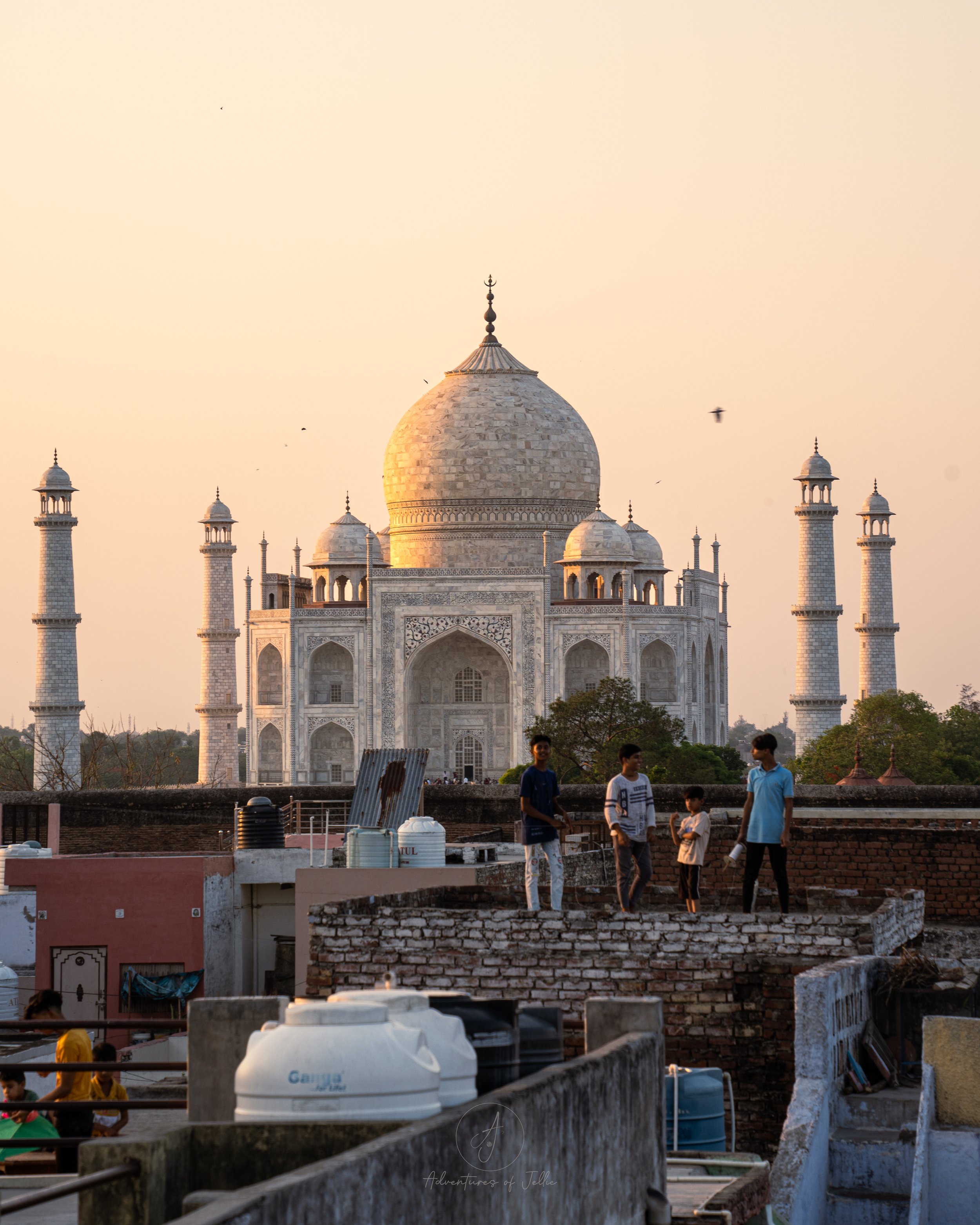





Thanks for reading,
John & Ellie
#adventuresofjellie
For tips and tricks to get the best out of your visit to the Taj Mahal check our article here or, if you have already explored the Taj and are looking for something different to do in Agra, check out the Taj Nature Walk!
If you’re found this blog helpful, entertaining or you just fancy supporting us, please click the button below!
If you’ve enjoyed reading this article, why not save the pin below?
Top Tips for Visiting the Taj Mahal
Read our guide for the top tips and tricks for visiting India’s iconic Taj Mahal. From when to visit, what not to bring and how to get the best photos!
Disclosure: This article may contain affiliate links. We will earn a small commission from any purchases made through these links.
The Taj Mahal is probably the reason why you’re in Agra, if not the reason you decided to visit India to start with. The Taj Mahal is unquestionably an incredible Wonder of the World. It holds the rarified accolade of despite appearing on a billion photographs, a million films and a thousand tourism brochures, still being unexpected and better than you could have imagined in person.
The Taj Mahal is an icon of India and a true Wonder of the World and we would recommend staying in the city of Agra where the Taj Mahal is located. This will give you the earliest possible access to enter the Taj and will allow you to get in before the crowds. For those who are short on time, Agra is easily accessible from the capital city of Delhi, it’s so close, you could even visit as a day trip!
To get between Delhi and Agra there are many daily trains ( around 2 hours journey time to Agra Cantt Railway Station), busses (just over 2 hours) or even private taxis (again 2 hours depending on where you set off from / traffic). You can look at all the options and book online in advance here. If you’re arriving by public transport, either to Agra Cantt train station or the bus station you will need to get a tuk tuk into town or the Taj itself. Use or Uber or Ola for this as the crowds of station taxis appear where the majority of taxi scams occur in Agra,
There are a hundred articles about the history, symbolism and significance of this beautiful monument, but this is not one of them. This is our top tips for those who want to know all the useful facts for visiting and photographing the Taj Mahal.
Taj Mahal Top Tips
The Taj Mahal is closed on Friday’s. Don’t listen to anyone that says otherwise, or tries to tell you it’s closed on different days. Similar to the Grand Palace in Bangkok, this is always the start of a scam. The Taj Mahal is open everyday of the week except Fridays from the early morning (we arrived at 5am) and closes at sunset.
You can and should prebook your Taj Mahal tickets online via this link. You cannot get through the gates without a ticket. There are physical ticket counters, but they won’t open early in the morning. Judging by the signs that are everywhere, it is highly encouraged that you prebook tickets online rather than queue up in person. Tickets do not need to be printed, just show the QR code you are sent on your phone. In all the ticket areas they offer free WiFi just in case you don’t have a sim with data. If you’re not already in India (or using a VPN) the above link may not work.
Tickets cost 1250 rupees each (£12.10 or $15.23). This is 1050 rupee on entrance to the Taj and 200 rupee for entrance to the mausoleum. Bear in mind, tickets are purchased for a slot of either the morning or the afternoon.
We would highly recommend paying the extra to include entrance to the mausoleum. Not only do you get to see inside this iconic building (where no photographs are allowed) but it also gives you access to the gorgeous marble pedestal all around the tomb and the many beautiful photo opportunities this presents.
When we say get there early, we mean really early!
Set your alarms early to avoid the immense crowds the day will bring to the Taj. This will also mean you will be able to enjoy this magnificent monument before the day gets too hot to bear. We set our alarms for 4.30am and were at the East Gate just after 5am. At no point did we have to queue or wait, we just walked straight through and were greeted by one of the most phenomenal sights in the world with barely anyone else there!
Do not bring bags to the Taj Mahal. Pack only what you need. Selfie sticks, microphones, tripods and GoPro accessories are all banned as well as any kind of drone. If you bring any of these you will have to waste time putting them away in lockers and retrieving them when you’re done. Small bags are allowed, but you will have to stop and get them checked. As we only had our phones and camera we just walked straight through security.
Do bring a bottle of water. Food, alcohol and picnics are not allowed.
Guides and Experiences
If you’re looking for a more in-depth tour of the Taj Mahal, or you’re looking to maximise your Indian itinerary and want to a day trip from Delhi, or want to combine the Taj Mahal with other attractions, check out the tours below:
Taj Mahal Photography Tips
If you’ve arrived early and beat the crowds, head straight down the centre of the garden (following the water) to reach the famous and iconic Princess Diana bench. The views down the centre will quickly become crowded and the “must take” photo opportunities will, even at this early hour, fill up with people very quickly. If you have made the effort to get there early make sure you take advantage of the calm before the crowds come! Once you have fulfilled your shutterbug needs then slow down and appreciate where you are. we recommend sitting on one of the many benches and just enjoying the beautiful views and incredible ambiance of the place.
If you’ve purchased mausoleum tickets, show your QR code again to the guards at the bottom of the Taj itself. Slip on some foot coverings or take off your shoes and go up onto the polished marble.
Over on the eastern side, there is a beautiful garden full of shady trees, colourful flowers and plenty of benches. This is a great place to sit and just admire the fact that you are at the Taj Mahal!
If you’re lucky you might even spot some eagles taking a break from the heat.
If you miss the early start and the crowds have rolled in, there are still plenty of spots all over the Taj Mahal complex to get beautiful photographs. As soon as you enter through the main arch, if you go right towards the toilets, the ledge here provides the perfect elevation for selfies in front of the Taj with minimal background people. There’s even an arch door you can use as a framing device! Another good spot, although it will get busier, is up on the marble plinth of the Taj itself. If you’ve booked your ticket to include the mausoleum, the platform surrounding the tomb entrance is a stunning place to take photos from.
Remember it’s not about the photo’s. You have travelled across the world, endured traffic or trains, the hustle and bustle and are now standing in front of one of the greatest manmade monuments in history. Try and look at it through your own eyes rather than just through a viewfinder or your phone screen. Make sure you just put it all away and soak up the atmosphere of this incredible monument to love. We saw so many people having fashion shoots and even falling out over photographs whilst we visited. Do yourself a favour and just be present. The photos you take will, in all likelihood, all look like everyone else’s but your memories will be your own forever. That said, and slightly hypocritically, here’s our gallery with some of our photos from our amazing day at the Taj.
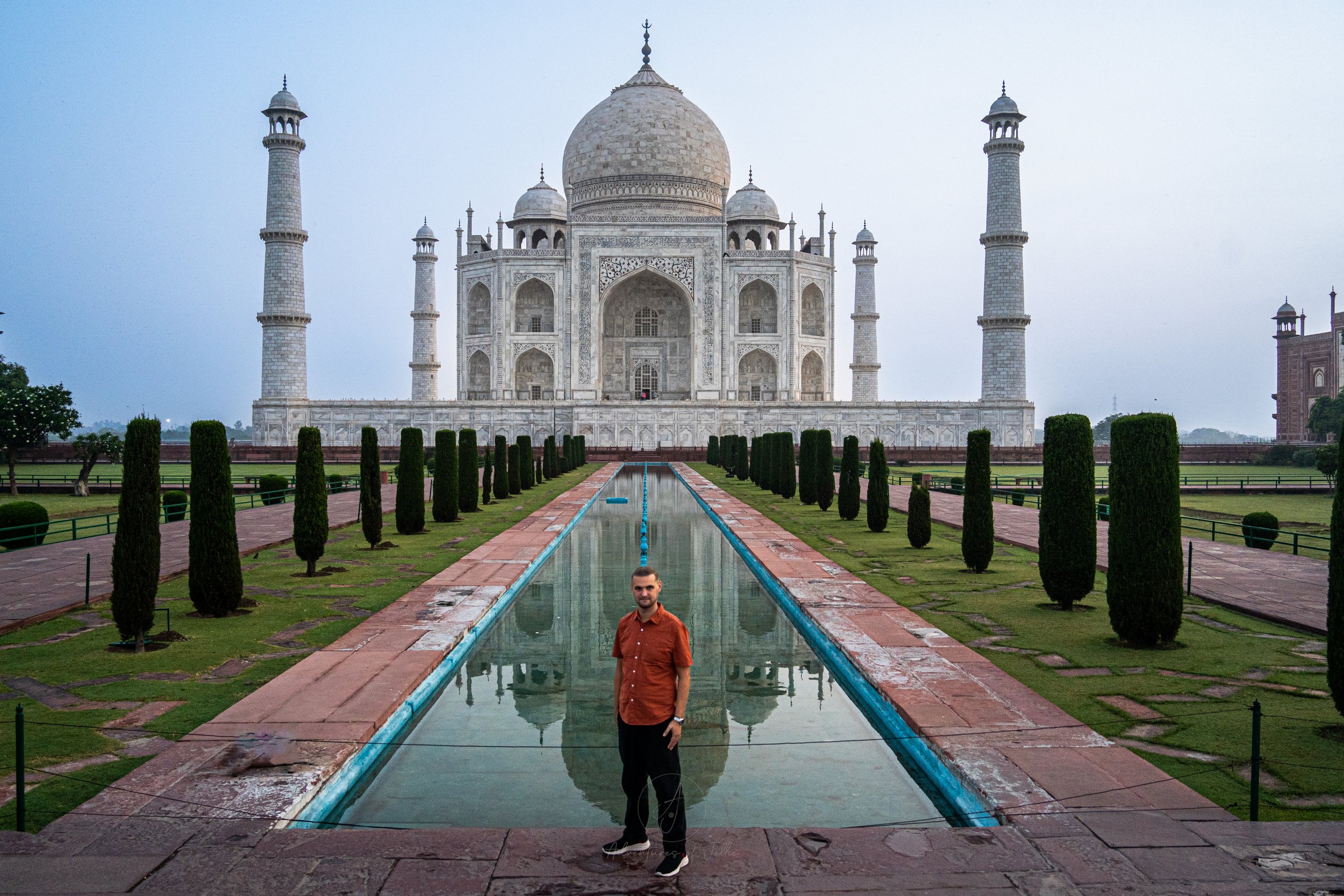
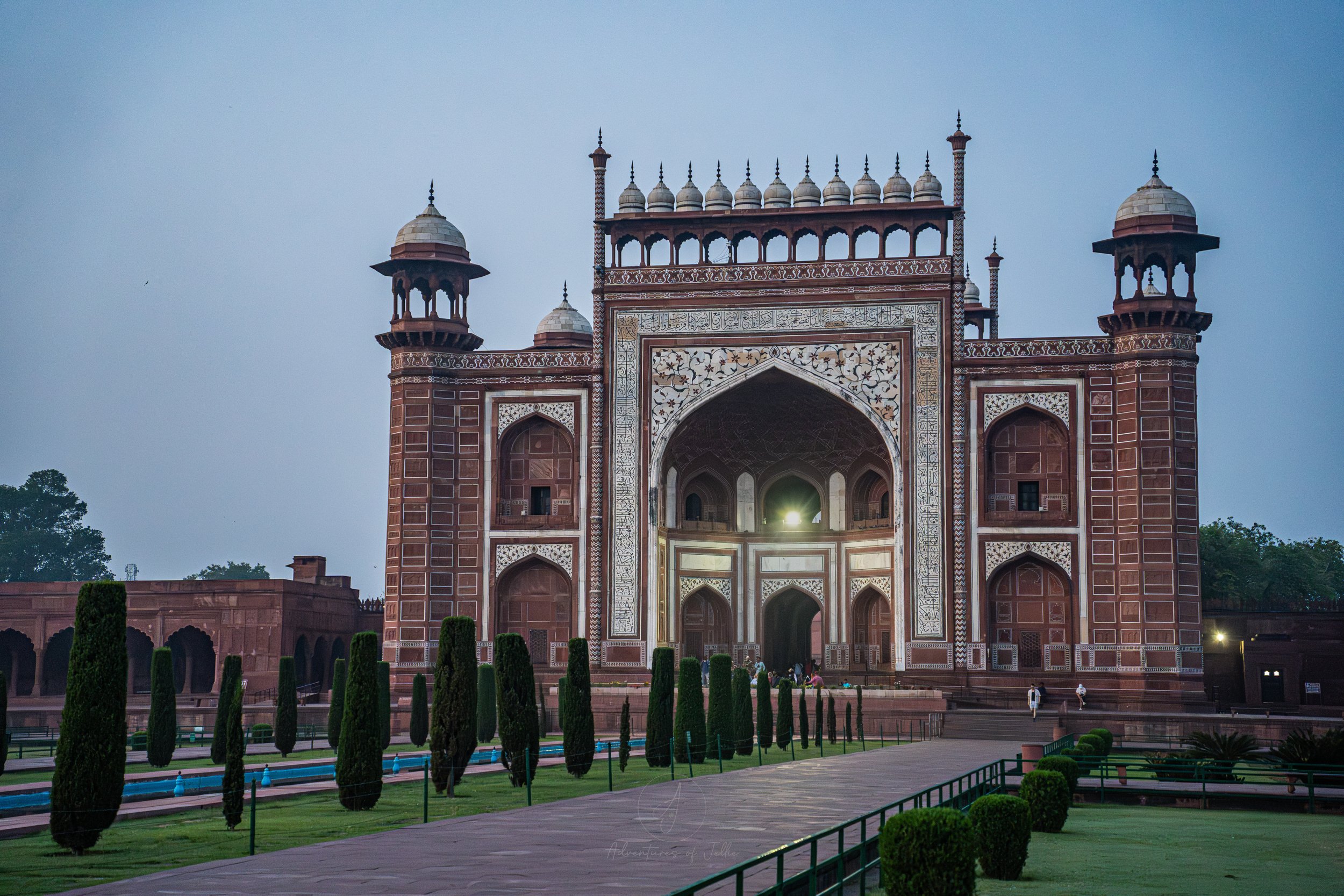

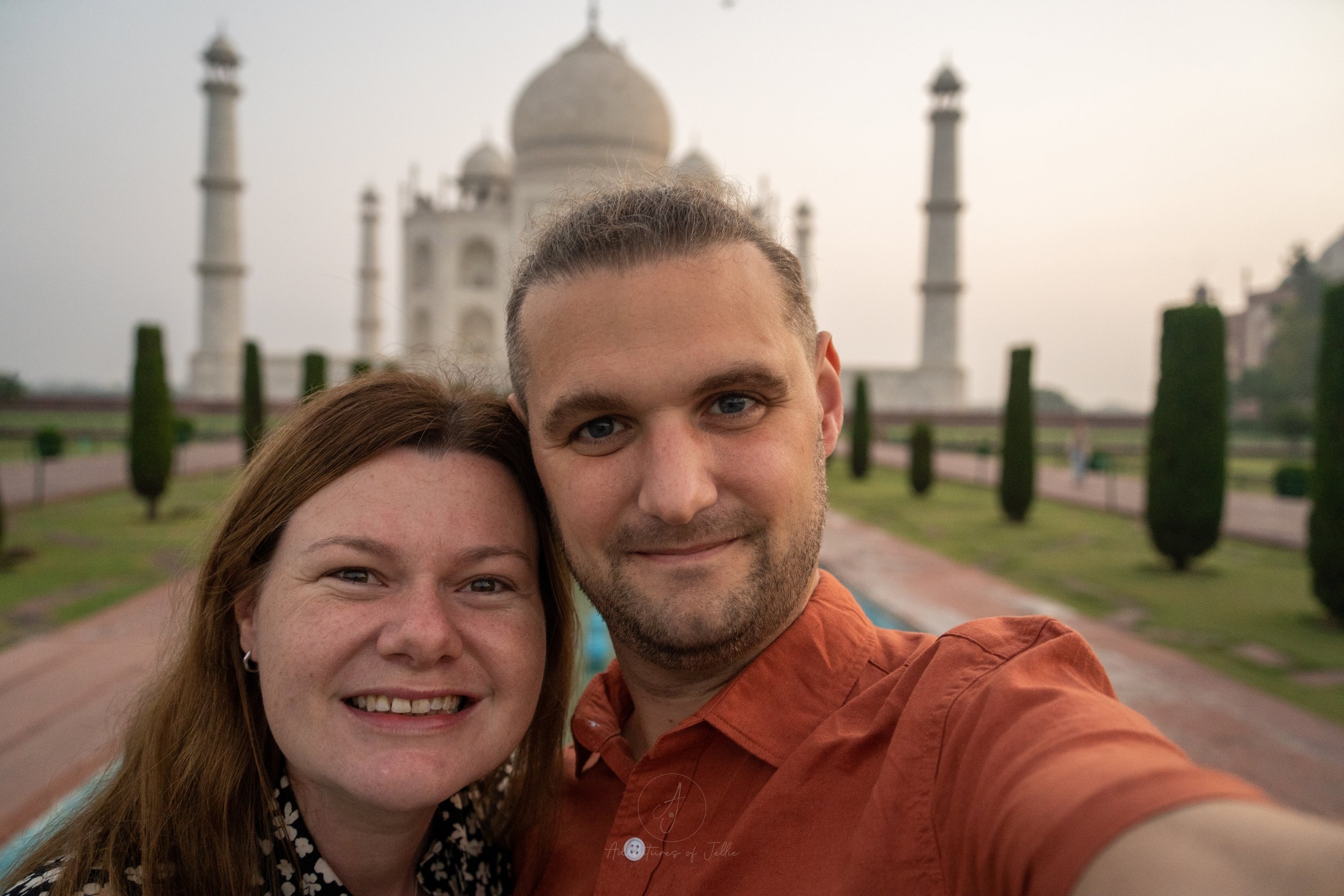
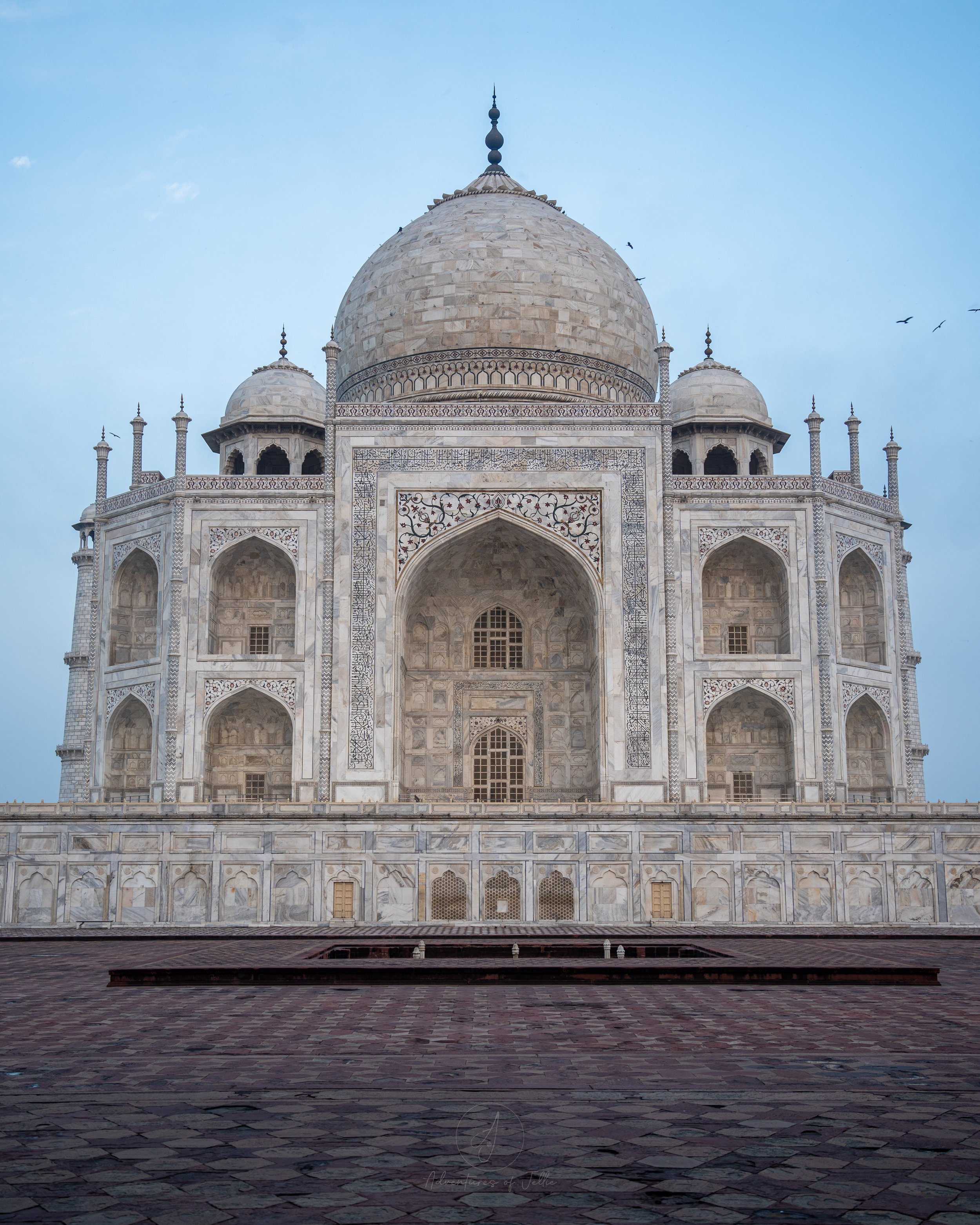

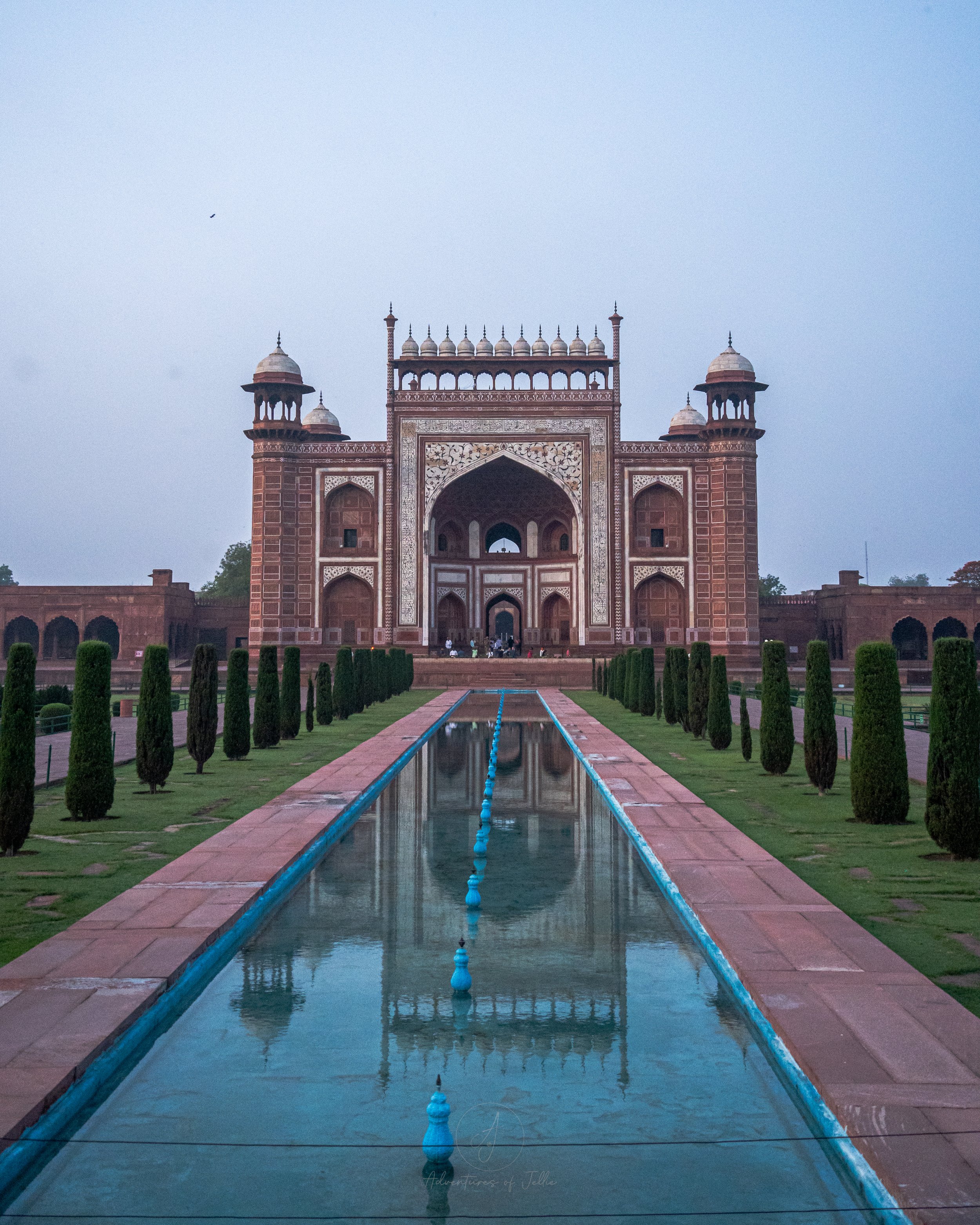
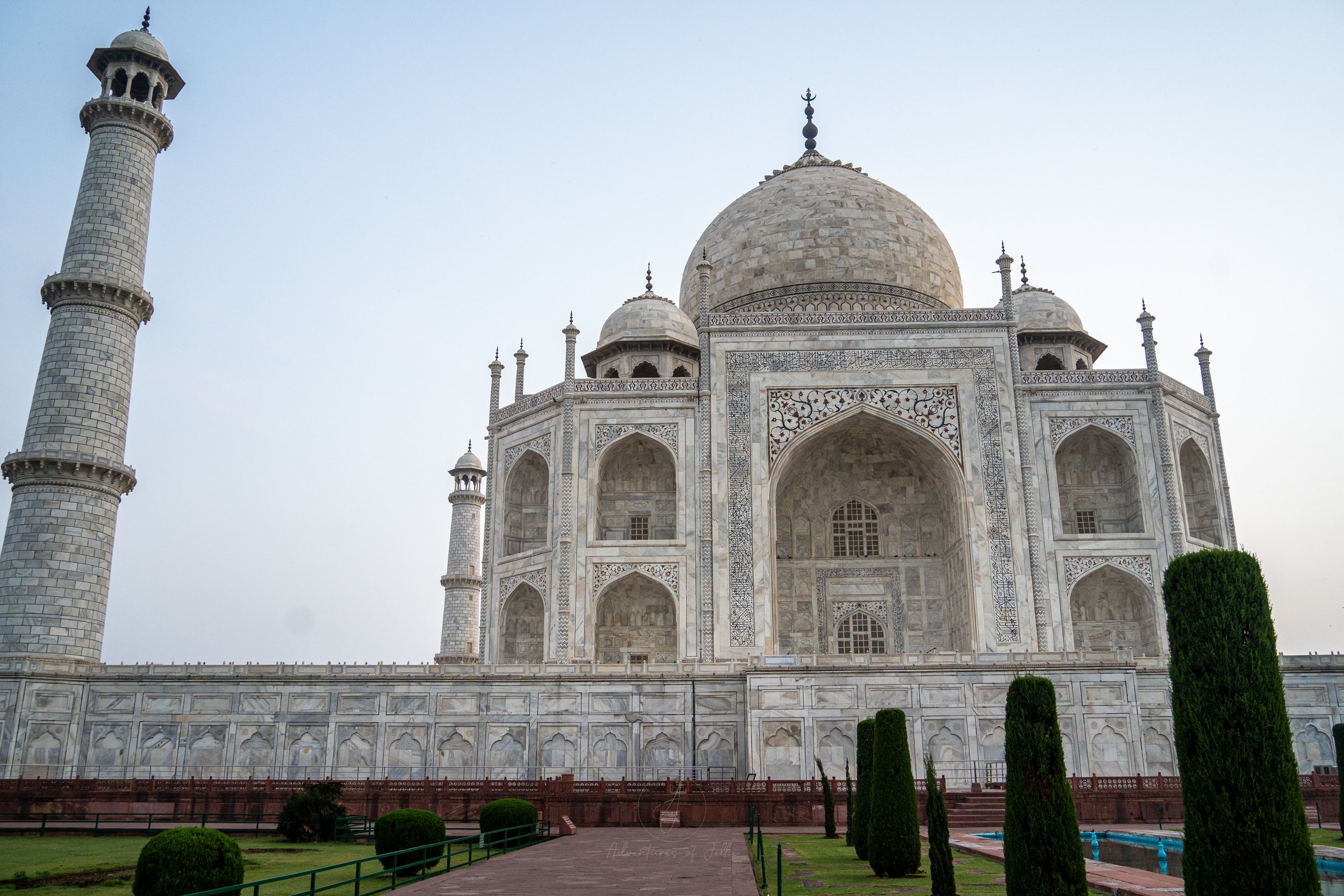
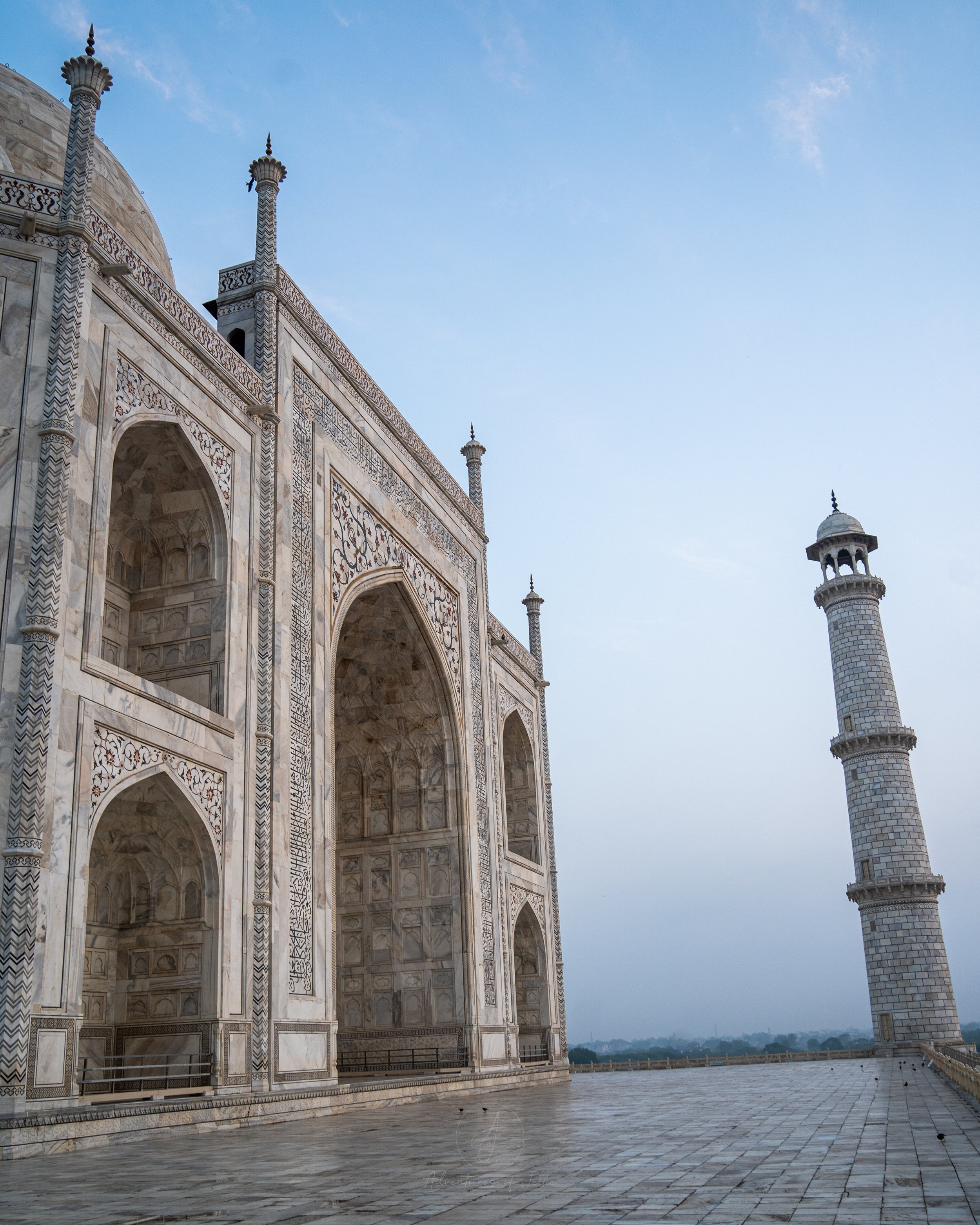
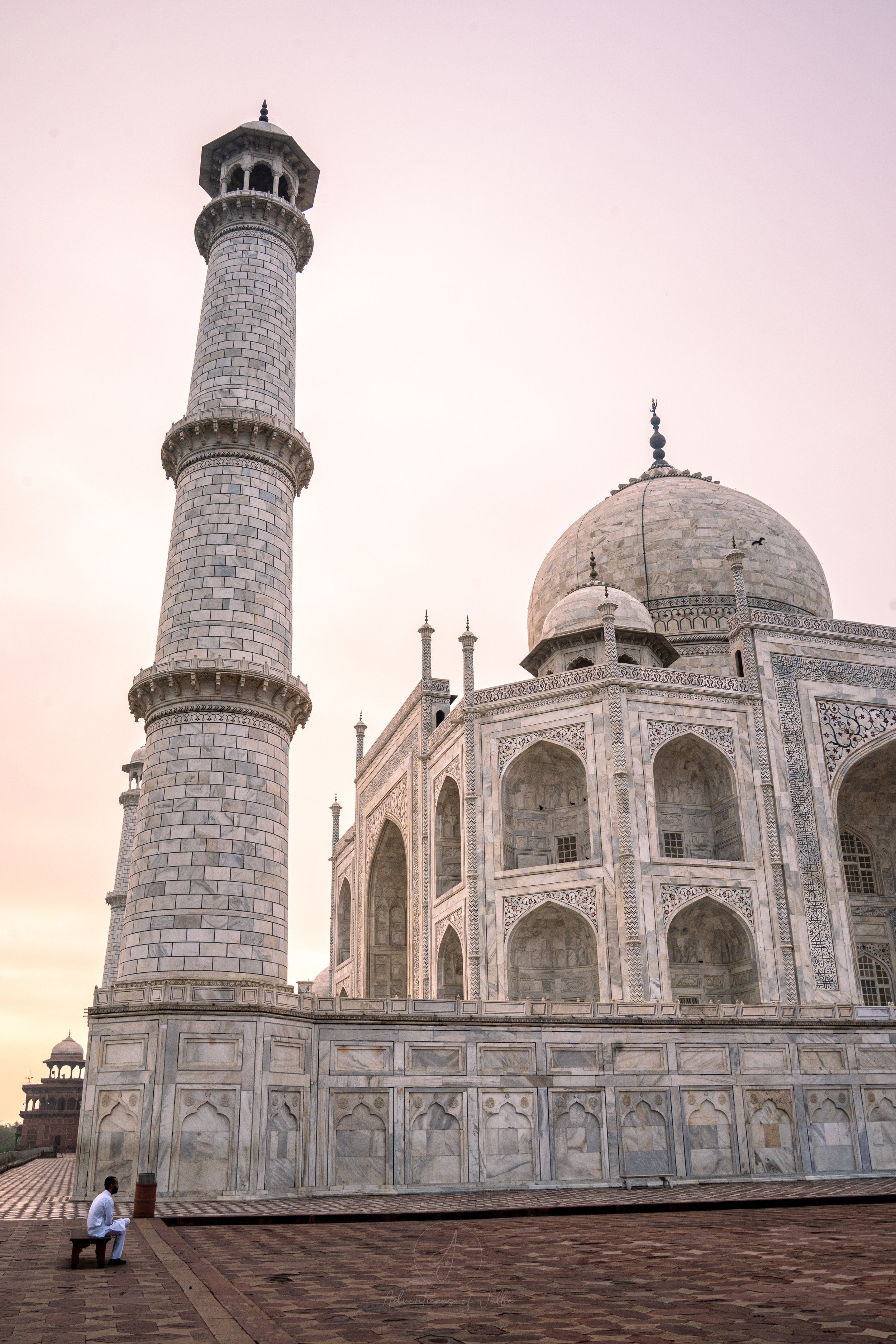
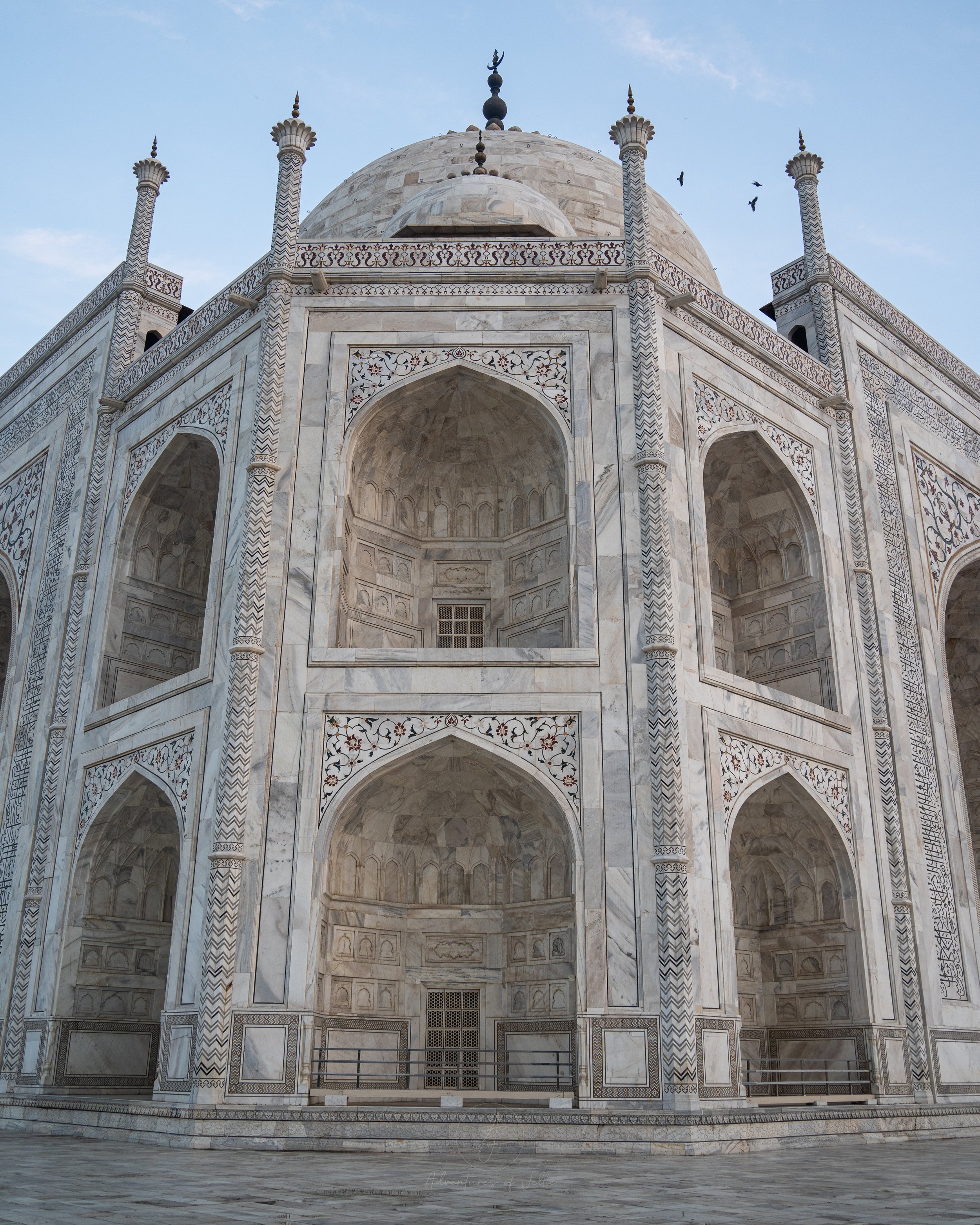
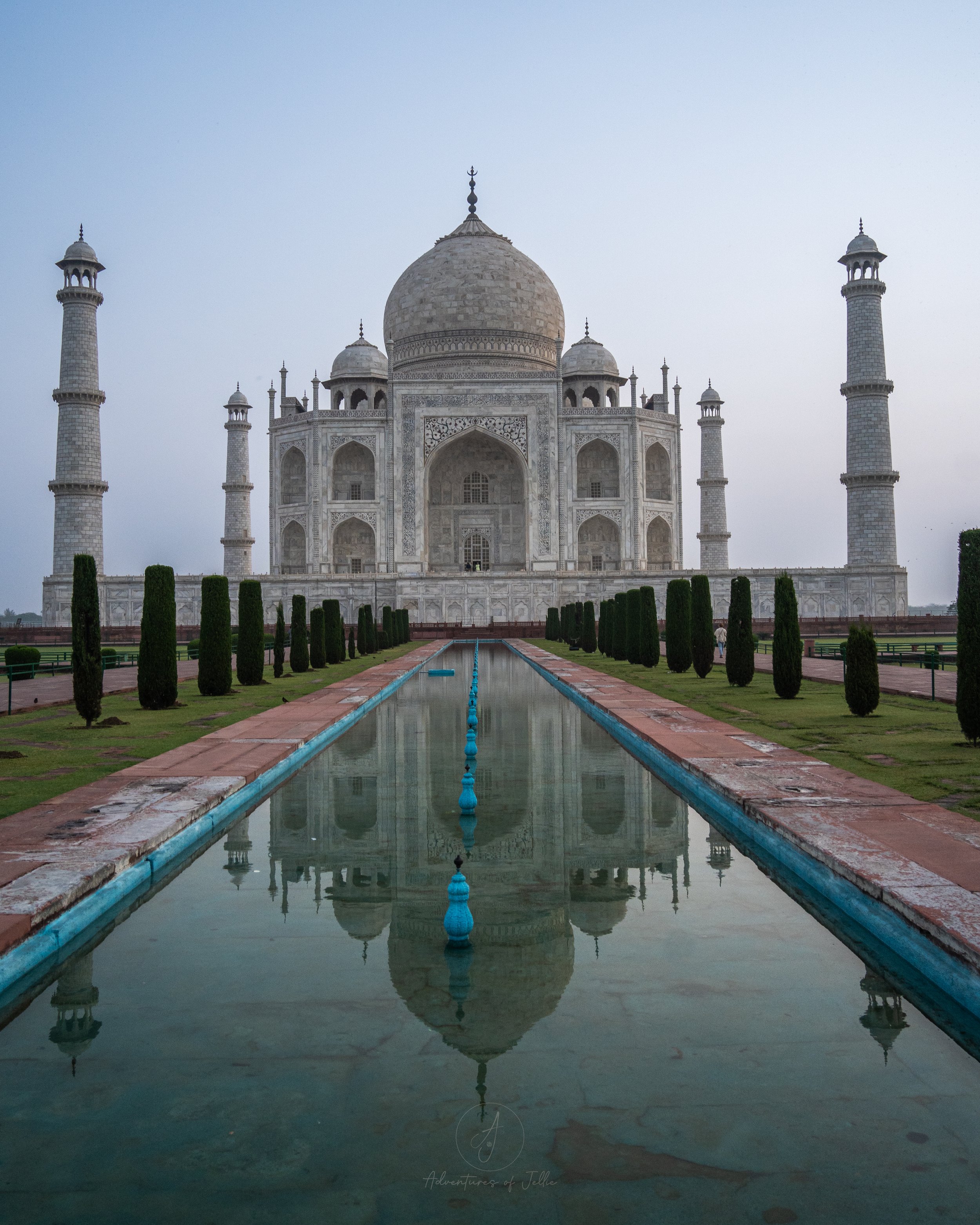

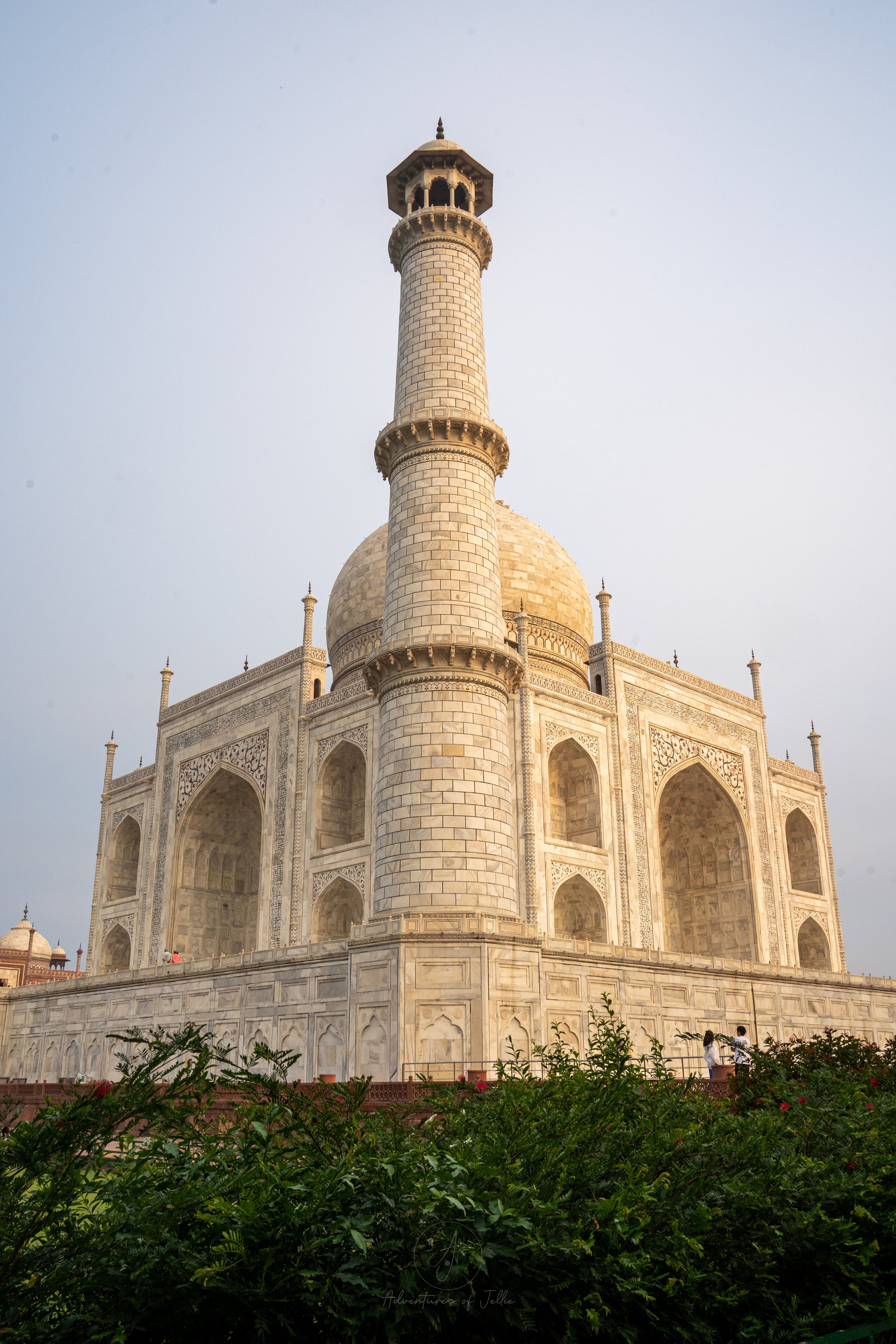
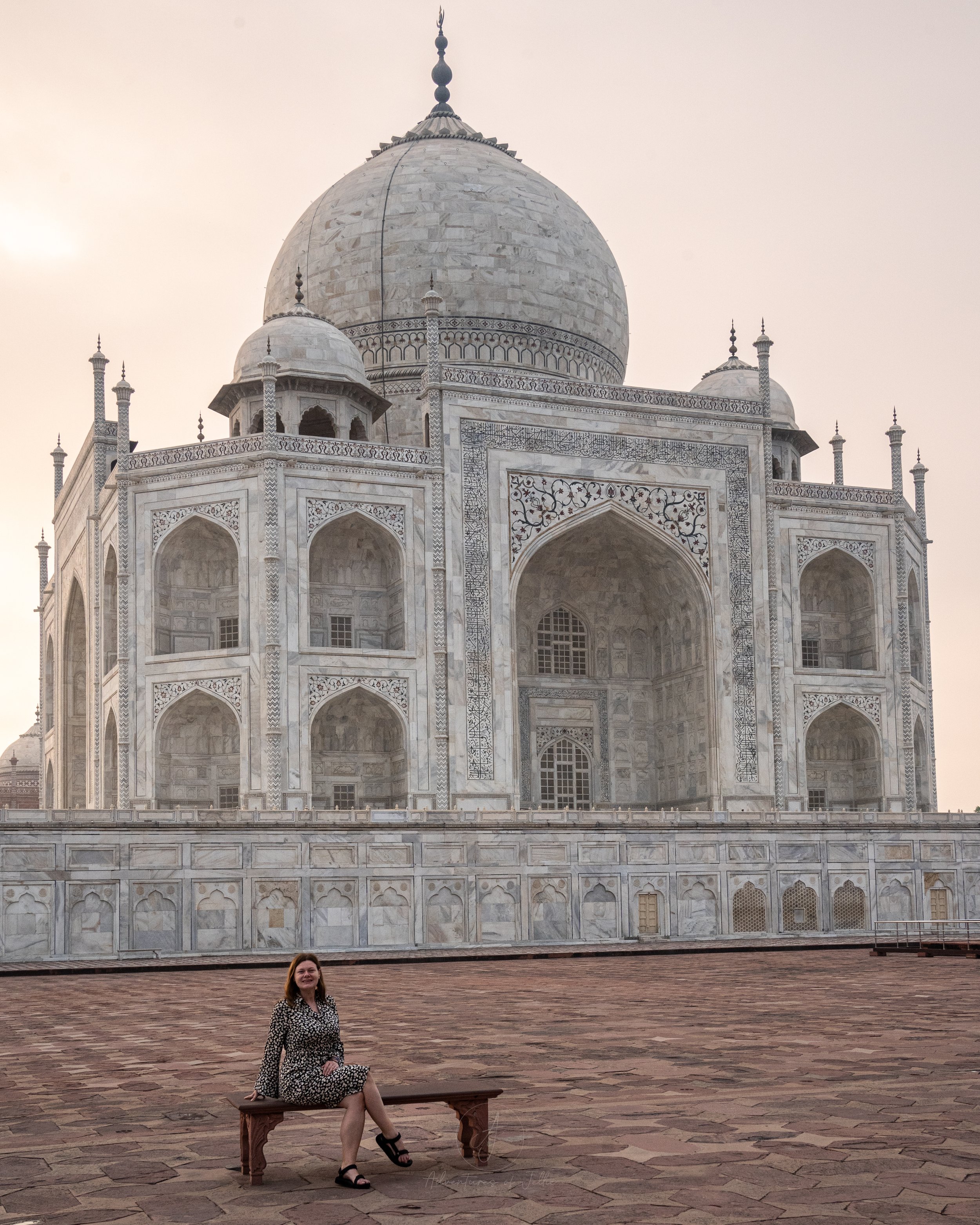
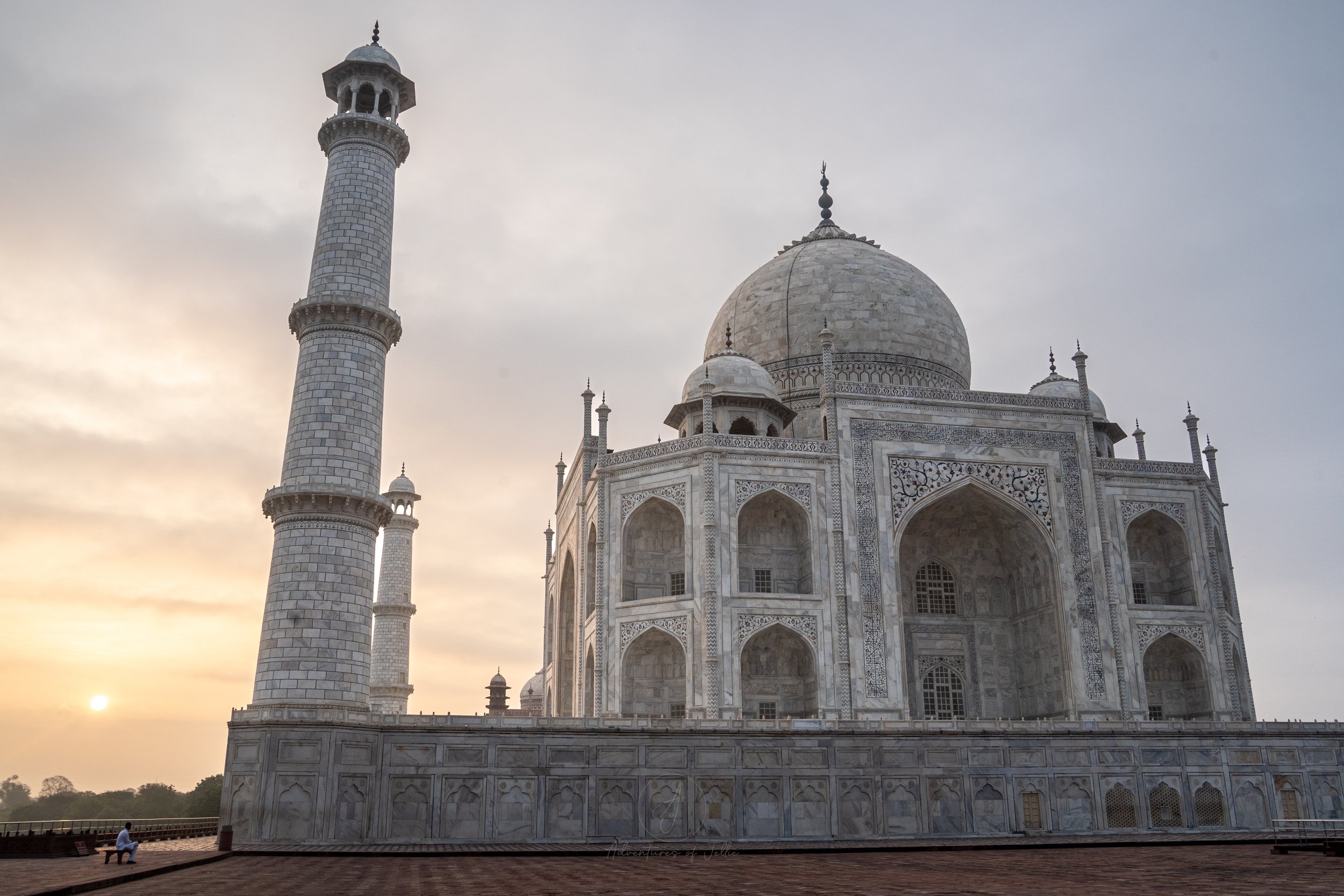
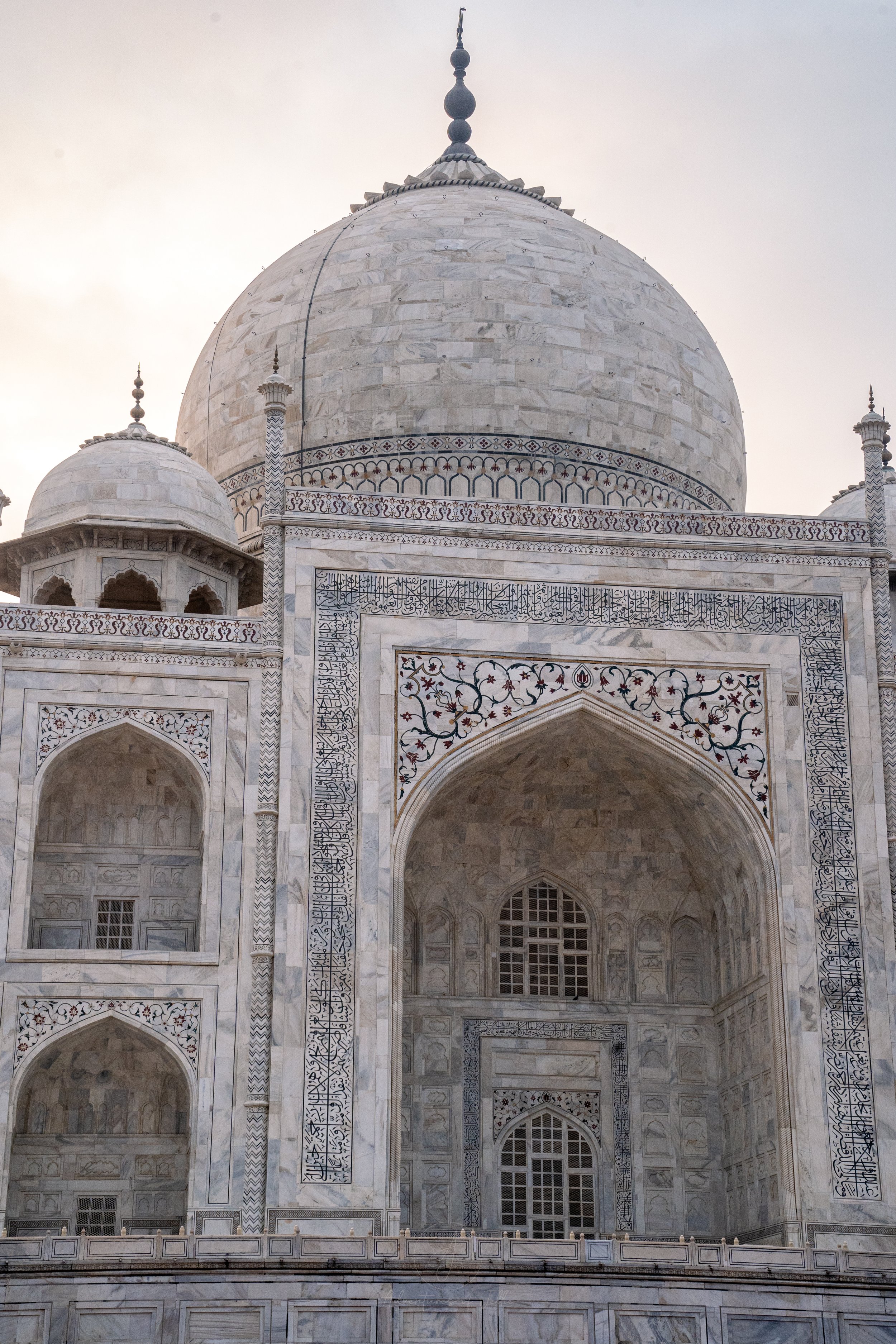
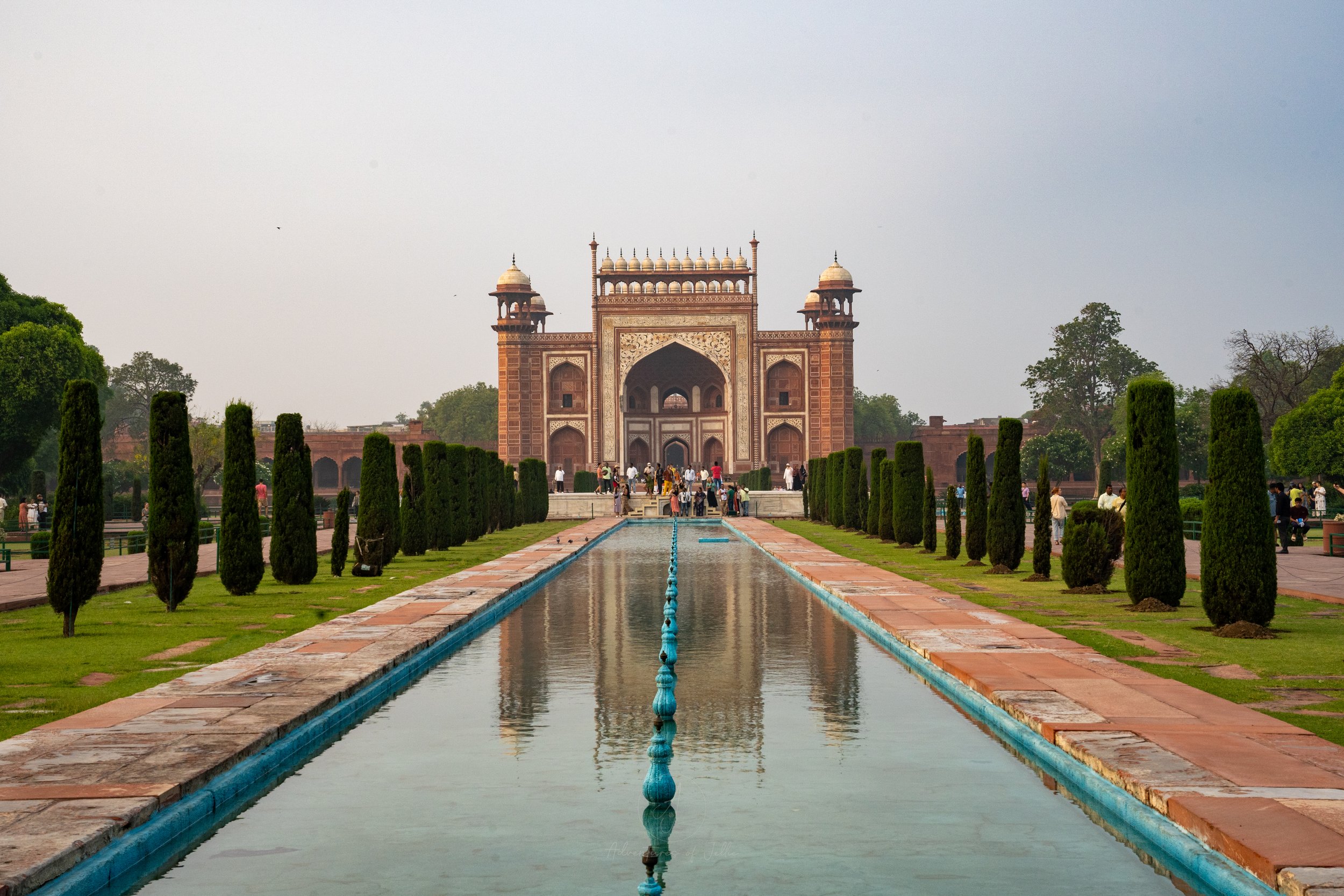
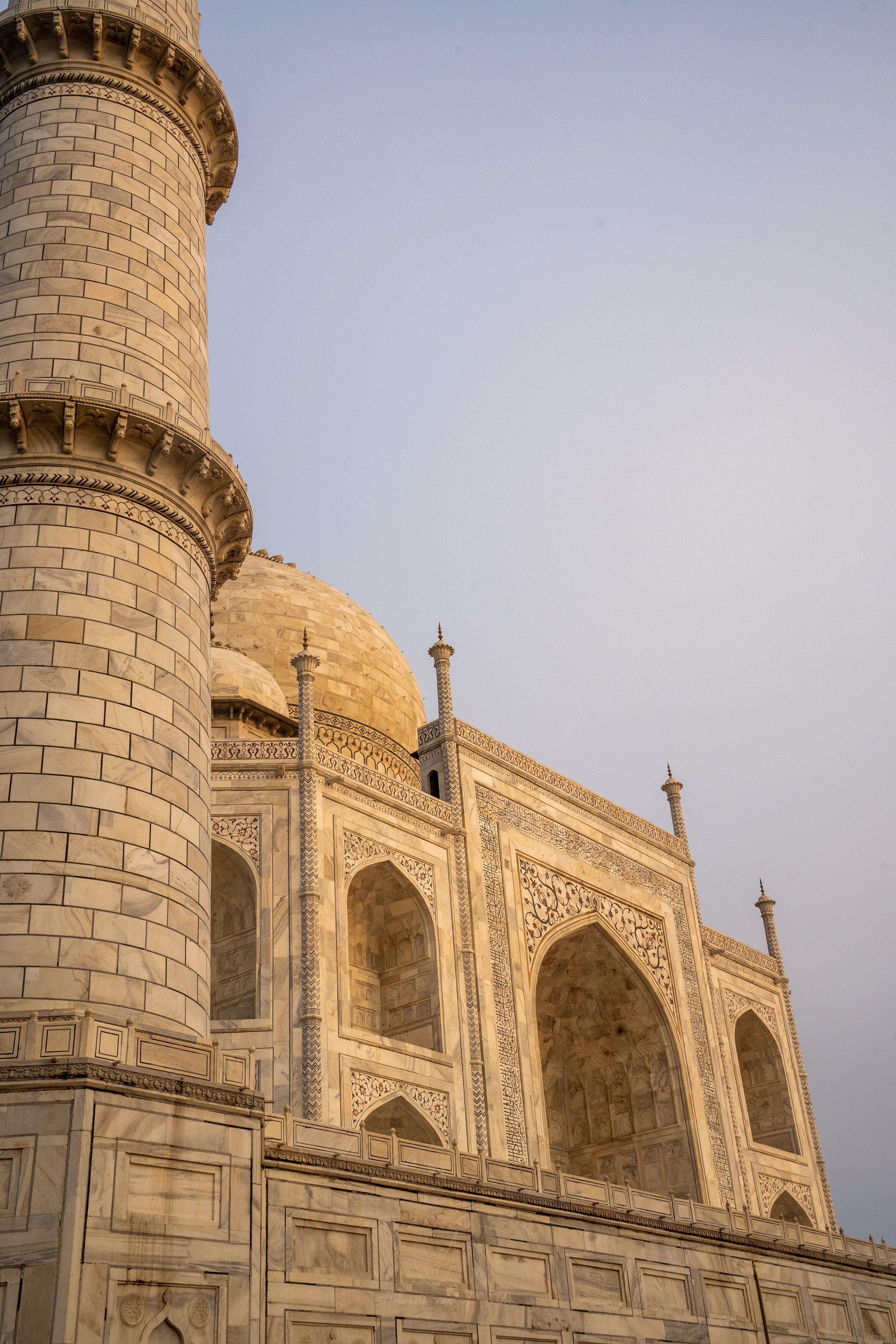
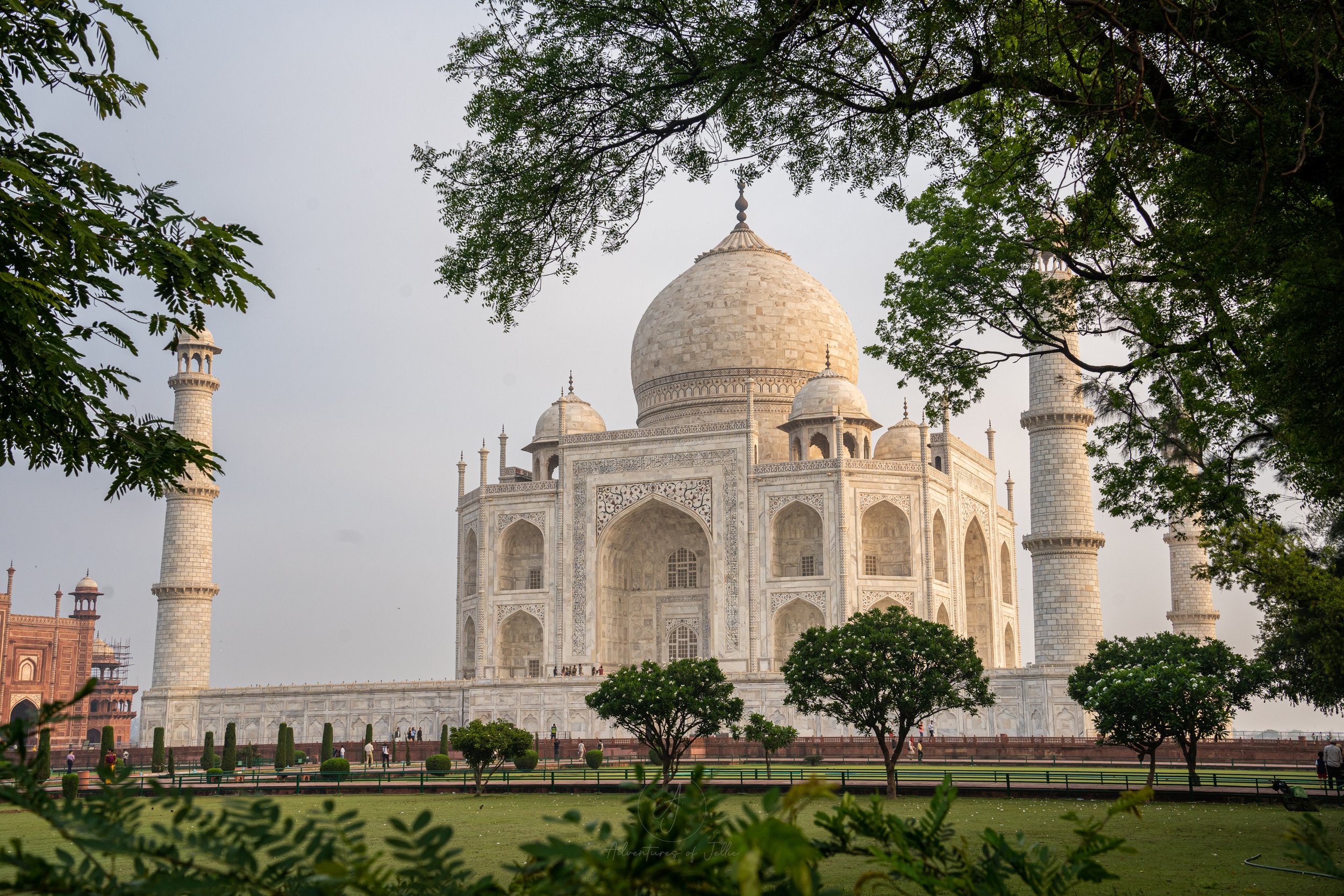
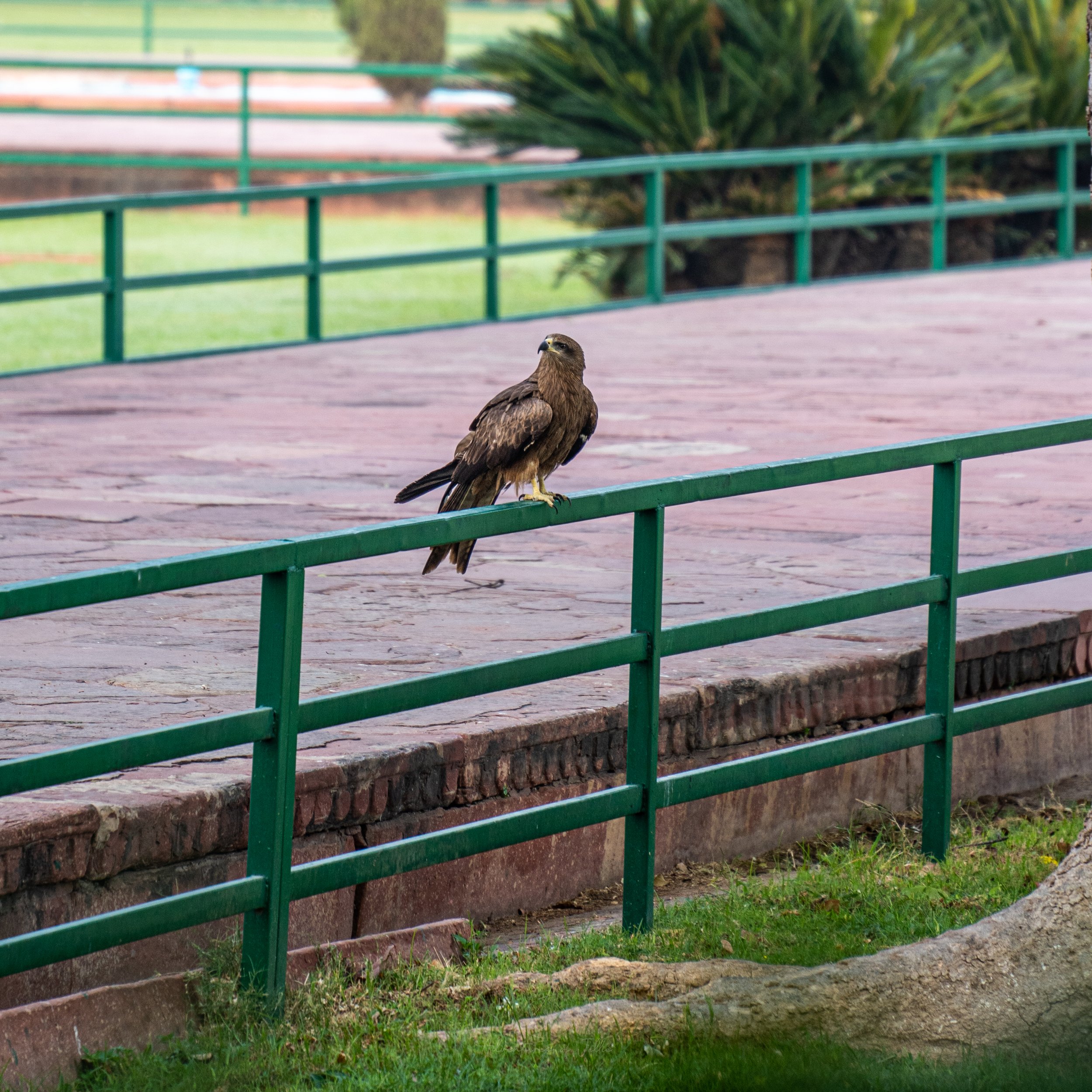
Thank you for reading,
John & Ellie x
#adventuresofjellie
*Prices correct at time of visiting - May 2023
If you’re found this blog helpful, entertaining or you just fancy supporting us, please click the button below!
If you’ve enjoyed reading this article, why not save the pin below?
Delectable Delhi - The Best Food Tour of India’s Capital
Delhi is a food lovers paradise. Join us on what maybe the ultimate food tour of this incredible city. Making our way around the historic Chandni Chowk market we are guided expertly around by ‘A Chef’s Tour’ to sample all the best street eats this vibrant area of Old Delhi can offer!
Disclosure: This article contains affiliate links. We will earn a small commission from any purchases made through these links.
We'd had an amazing time with A Chef’s Tour in Phuket Thailand and, after we had settled into the hectic pace of Delhi, decided that a food tour would be the perfect crash course into the street food scene of India’s busy capital.
Street food in India, especially Delhi has a mixed reputation, on one hand everyone acknowledges the incredible depth and range of flavours. On the other hand….Delhi Belly… We wanted an introduction to the best of Delhi’s street food but also wanted a little reassurance. A Chef’s Tour seemed a perfect way to boost our confidence and reignite our street food savviness.
We booked our tickets and were scheduled to meet at Lal Quila metro station at 12 noon. We arrived early and after barely a moment of awkward loitering, we were greeted from behind with a "you need wait no longer!". Our guide Gajendra had arrived.
We were lucky, as it turned out that it was just the two of us booked on the tour that day, so we effectively had a private food tour of Chandni Chowk market!
Gajendra was brilliant from the moment we set off to the end of the tour. He was approachable and incredibly knowledgeable and had some sort of supernatural ability to dodge and weave between the crowds in the busy market streets.
We were hungry and eager for Indian street eats. So, with our expert guide leading the way, we set off into the hectic crowded streets of Chandni Chowk market.
Food Stop Number 1 - Jalebi
Let's get the party started!
Walking away from the station the motorised traffic disappeared and was replaced by the constant call of the pedal powered rickshaw. Chandni Chowk's main street is closed during the day to cars and bikes but cycle rickshaws have taken their place in droves. You can barely take a step without an offer of a ride.
Through the throngs of people we made our way to the “Old Famous Jalebi Wala”. Set on the corner of the main street and a maze of side alley markets, this historic stall has been serving up sweet jalebi and other fried snacks since 1884. Our guide dived into the crowded shop and reemerged carrying two of the bright orange treats.
Jalebi are deep fried flour batter swirls soaked in sugar syrup. Think a super crispy donut concocted by a sugar obsessed desert maniac. They are super sweet, with a soft chewy centre and despite the syrup, a seriously crispy outside. They are also, unfortunately for our teeth, highly addictive! If you are in India and need a sugar rush these are available everywhere and are a very tasty treat. If you ever see them being cooked on the street, make sure you grab a hot fresh one as they’re even better then!
Stop at the Jain Jewellers Row
An unexpected oasis in the whirlwind of Chandni Chowk.
After our sweet starter we turned off the main road and into the labyrinth of markets that make up Chandni Chowk.
Chandni Chowk is not just one market, it is a collection of smaller, specialised markets that have grown together into one massive amoebas bazaar. Streets spiral into alleyways. Districts selling only the ribbon trim for wedding dresses butt up against areas specialising in specific shoes. It is a tangle of colours, smells and frenetic business. The market is also fantastically old. Built by the Mughal Emperor Shah Jahan (the same Shah Jahan who ordered the construction of the Taj Mahal) in the 17th century, Chandni Chowk was once one of the largest wholesale markets in the world.
This history is reflected in the market’s crowded streets, the old buildings having grown into, over and around one another over the centuries. The further you walk into its streets, the narrower the lanes get and our guide was taking us in deep!
Having dodged and been rattled around like a human pinball through the kaleidoscopic streets, we ducked through a heavy, ornately carved wooden doorway and found ourselves in an oasis of calm. Gajendra had brought us to the historic street of Jain jewellers. Beautifully decorated houses lined the small lane with brightly coloured doorways and fluttering flags strung between the houses. The noise and chaos of the crowds flowed by outside the wooden entrance to the street but did not come in, it was like we were standing on a riverbank next to a raging torrent. We caught our breath as Gajendra explained the history of the area before diving back into the streets beyond.
Food Stop Number 2 - Paratha and Lassi
The first of the Curries.
Continuing deeper into the market we quickly became lost, and placed all of our faith in Gajendra to steer us through. We wound down alleyways, though crowds and navigated around porters stacked with more goods than we thought a human could carry. Abruptly we arrived at our first savoury stop of the day, a famous paratha shop hidden in the depths of the wedding district.
Paratha is a fried bread dish where a filling is sandwiched between two thin layers of dough which are then fried on a tawa (a large shallow Indian pan). This particular shop sold every type of paratha imaginable. From savoury to sweet, chilli to banana you could pretty much order anything. We ordered a potato and a cauliflower paratha and were quickly presented with metal trays filled with vegetable curries, fried paratha, chutney and even a sweet treat! The paratha was wonderful, flaky and crispy but yet somehow still rich, it paired with the vegetable curries amazingly. The small shop was filled with lots of metal benches and it was clear to see why they were all crammed full of people.
Whilst we were munching on our delicious paratha our guide offered us some lassi from the neighbouring stall. Lassi is a yogurt based drink that can be served sweet, salted or mixed with fruit (mango lassi is especially yummy). Lassi is often claimed to be good for digestion and seeing as this was only food stop number two of our tour, we felt we could use all the help we could get! Two sweet lassi appeared in metal cups and we quickly drank them down. Slightly thick, the yogurty drink was perfectly balanced between sweet and sour. You wouldn't think of yogurt as being refreshing but lassi is perfect in the crowded heat of Delhi.
Food Stop Number 3 - Pani Puri
A literal flavour explosion.
After our paratha stop we rejoined the crowds outside and made our way through the busy narrow lanes to our next foodie destination. On the corner of two alleyways, nestled in a small nook and surrounded by metal pots, sat a man. Walled in on all sides by tins of ingredients, kettles of curious liquid and a basket of crispy puri shells sat our vendor - the Pani Puri man.
Pani Puri is a street snack found all across India. Crispy spherical shells are lined with spiced potatoes, chickpeas or lentils and then filled with spiced water, chutney and, sometimes, yogurt. Pani Puri had been on our “must try” dish for India (much like Kaya Toast had been in Malaysia) and we were excited to try this popular snack.
Our excitement was turned to trepidation when we were presented with the filled product, as they were larger in person than we were expecting. Pani puri have to be eaten immediately and all in one go as soon as they are made or else they will dissolve and the spiced water will spill out.
We either have tiny mouths or are just not used to eating such big bites as the filling exploded through our mouths as soon as we bit in. It is hard to describe, we have never eaten anything like the pani puri. As soon as you crunch down, waves of flavour assault your senses. The water flows out (and on our first attempt goes straight up our noses), and fills you full of its curious spicy flavour. The crunchy casing gives way and the soft potato / lentil filling mixes with the chutneys and sauces and takes over your mouth. The temperature of the experience is also very unexpected! Lukewarm to cool, the spicy water comes as a shock as soon as you bite down.
On top of all of this, as soon as you take your first pani puri, the vendor begins construction on your second, and third and forth….
After the shock of the first bite we can definitely see how these confusing flavour bombs can become an addiction. We have been thinking about them ever since!
Food Stop Number 4 - Kachori
Heavy deliciousness.
Around the corner from the pani puri salesman was a stall crowded with people. Once again Gajendra dived in for us and came back holding two steaming plates.
Kachori is a deep fried dough, crispy, hearty and more than a little greasy. The stall we were at served the kachori smashed up on the bottom of a spicy vegetable gravy and topped with chutneys and yogurt. Despite the small size of the plate, this was one of the day's densest and heaviest stops. The flaky deep fried dough soaked up the spicy gravy and sweet chutneys making for a thick stew of flavour. The sour yogurt cutting through the dense flavours and giving a welcome contrast in each bite.
Food Stop Number 5 - Butter Paneer Roti and Naan
Rich and heavenly, how much are we eating today?
After our rich kachori we moved out of the labyrinth and back on to the main road of Chandni Chowk. Amidst a semicircular arcade of shops and opposite the Delhi town hall, sits an unassuming staircase. Wondering quite where Gajendra was taking us, we wandered up the stairs and emerged into the smells of baking naan breads. Unsure how we were going to fit any more food in, we sat at a little table and looked on in disbelief as Gajendra ordered two breads each alongside a large butter paneer curry!
Butter Paneer, is now one of our favourite Indian dishes, if not one of our favourite dishes in the world. Being from the UK we are familiar with butter curries (specifically butter chicken), or at least we thought we were… Where the UK curries are sweet and artificially orange, often swimming in a separated layer of grease, the paneer curry was subtle, rich and beautifully smooth in texture. We haven't eaten much paneer before coming to India but have now become addicted to this firm yet light cheese. In the butter curry the paneer gave a light contrast to the nutty delicately sweet and rich gravy.
If the butter curry wasn't quite luxurious enough we had the breads to eat alongside. Tandoori baked naan bread with crunchy exterior and soft fluffy interior made an excellent dipping tool. Charred and bubbled from the tandoor oven, the naan manages the contradictory feat of being moreishly light yet satisfyingly dense.
The butter roti, is a thinner dough that is stretched and cooked on a tawa then brushed in clarified butter (ghee). The ghee adding another layer of richness to the crunchy roti. The roti also had the advantage of, when correctly folded, making for a deliciously decadent spoon to shovel the curry into our mouths.
When on a food tour it is always important to pace yourselves, you do not have to finish every meal and need to realise that there is more food to fit in later. Our brains, however, rejected this information and we gorged ourselves happily finishing all the curry and breads.
Food Stop Number 6 - Lime Soda
Much needed refreshment.
Now fully resigned to our gluttony, the next stop came as a welcome relief, it was to be a drink.
We had, in fact, had a lime soda the morning of our food tour and….well… we had not enjoyed it. When we had taken our first sip we had had our tastes bombarded with an eggy, deeply sulphurous taste. Luckily for us, this time tasting the soda we had Gajendra.
Gajendra explained that as a traditional aid to digestion, the sodas are often topped with a masala of spices including a black sulphurous salt. It was this strong black salt that had given us the mornings unpleasant surprise. Despite probably needing an aid to digestion we opted not to have the eggy addition this time and Gajendra ordered us two lime soda’s minus the sulphurous additions.
This soda was exactly what was needed after many heavy meals, fizzy and refreshing without being too sweet. Trust restored in lime sodas and noting to have more in the future we moved on.
Spice Market Stop.
An assault on the nostrils!
At the western end of Chandni Chowk lies the largest spice market in the world. Housed in a beautiful old square courtyard the market is a chaotic confusion of hand carts, spice sacks, colourful piles of mysterious powders and, above all, smell. Even before you get into the market itself you can feel a tickle in your nostrils and, by the time you are in the middle of it, it is too late, sneezing and coughing are nearly inevitable as sacks of powdered spices as hauled around and fill the air with a haze of aromats.
The market is amazing, a fully working relic of a bygone time. The hand carts rush around much as they would have done a hundred years ago. We were guided up a set of dilapidated stairs set into one of the market’s corners. At the top of the stairs we were treated to a view over the market and could literally see the layers of history where the building had been decorated, renovated and changed over the years.
Food Stop Number 7 - Rabri
So full now.
Eyes and nostrils running, and feeling like we were in the middle of hay fever season, we exited the spice market and made our way down a nearby street for yet more food.
By this point we were full to bursting but our curiosity and greed kept us going. We stopped at a man holding a metal pan of what looked like a thick white set yogurt. Desert number 2 was here, it was time for rabri.
Rabri is in fact not a yogurt but a dish of boiled condensed milk mixed with jaggery (palm sugar) spices and chopped nuts. It had a unique texture, nothing like a yogurt but more like a thicker mousse or set custard. It was less sweet than you would expect from condensed milk and sugar. With the nuts and spices bringing a more savoury undertone to the dish.
Food Stop Number 8 - Chai
Who can say no to a cuppa?!
Past the rabri seller was a small shop sandwiched between clothes stalls doing a roaring trade. The pavement was crowded with people and the nearby bins were overflowing with small clay cups. It was time for tea.
Being from England we are quite fond of tea, we (not us personally) have historically gone to war or attempted to get entire nations addicted to heroin just to feed our tea lust. So we are quite familiar with tea, or at least we thought we were.
We have tried the Chai tea back at home and our trendy London shops really miss the mark when it comes to chai. The true Indian variant is less sweet and much richer in clove and cardamom spices. It is served lava hot and bubbling in the clay mug it is proffered in. Despite being nearly too hot to handle and a shortcut to a burnt tongue, it is nothing short of wonderful.
Stop at the Sikh Temple
A tranquil respite from the foodie onslaught.
Nearby to the tea seller, Gajendra suggested a stop at a historic Sikh temple. We removed our shoes, covered our hair and stepped inside. It was like a beautiful jewellery box full of gold and colour. We sat at the back whilst scriptures were read and those around us listened and prayed. Neither of us are remotely religious but the calm and serenity of the temple, obvious devotion of those present and almost hypnotic sound of the scripture was an amazing and tranquil experience. The busy city outside felt a million miles away.
Food Stop Number 9 - Dahi Vada
Please stop feeding me / “It’s only wafer thin”.
Exiting the temple back onto Chandni Chowk was like jumping back into a churning ocean, once more the calm was replaced by the hectic pace of the markets. We followed Gajendra as he expertly wove and dodged between the crowds and led us to our final stop of the day.
Gajendra led us to a shop that had been in business since 1940 and grabbed us two plates.
Dahi Vada is a dish of fried lentil balls soaked in a thick yogurt until they are nearly entirely sodden through. This sweet thick mess can then be topped by chutneys, chat or any manner of other ingredients. It was almost like the kachori we had had earlier in the day, but more sweet and sour. The yogurt soaked through like a sour gravy with a sweet sauce drizzled on top with a sprinkling of powdered masala. It was truly unique, but we were so full by this point that we could only manage a couple of spoonfuls!
After the dahi vada you could have pretty much just rolled us through the streets. We had eaten nine courses of food in under four hours and we were absolutely stuffed! Gajendra had guided us expertly though the maze of Chandni Chowk and brought us to places we would never have found on our own. Indian cuisine is the unofficial favourite food of the United Kingdom. We had naively thought that this would have prepared us for the food we were going to eat on this tour, but we were blown away by the unique flavours and diversity of dishes we had been presented with. We had feasted to our hearts content on delicious foods, with flavour combinations we never thought of before. Under Gajendra’s expert eye we had learnt about the food of Chandni Chowk, its origins, flavours and history of the stalls.
A food tour is often a great way to get introduced to a new city, and the ‘Chefs Tour’ had been an amazing insight to the delights of Delhi. We enjoyed ourselves so much that we even came back to Chandni Chowk a few days later and deliberately got ourselves lost looking for another paratha.
If you would like to book this tour (and we highly recommend that you do) in Delhi, click the button below!
Thanks for reading,
John & Ellie x
#adventuresofjellie
A Chef’s Tour offers amazing, unique food experiences in many countries and cities (we had an amazing time with them in Phuket). From Bangkok to Bogota, Chiang Mai to Kolkata they offer amazing food tours all across the globe. Check out the link below and look around their website to see where they can take you.
Old Delhi’s Chandni Chowk district is a fascinating labyrinth of small alleyways, lanes and ancient streets. Selling everything and anything, the narrow paths wind and turn as you get deeper and deeper into the old bazaar. As you spiral through, the paths get narrower as marketgoers and vendors vie for space in the tiny alleys.
The best way to explore this historic area of Old Delhi is to take any pathway, just keep walking and allow yourself to get lost in the melee of people. There is no right way to go, just go with the flow and enjoy the mesmerising spiral of vibrant colours, smells and sounds in this centuries old area of Old Delhi.
Here are some of our photos we took during our time exploring Chandni Chowk whilst on our food tour and a day later exploring on our own:
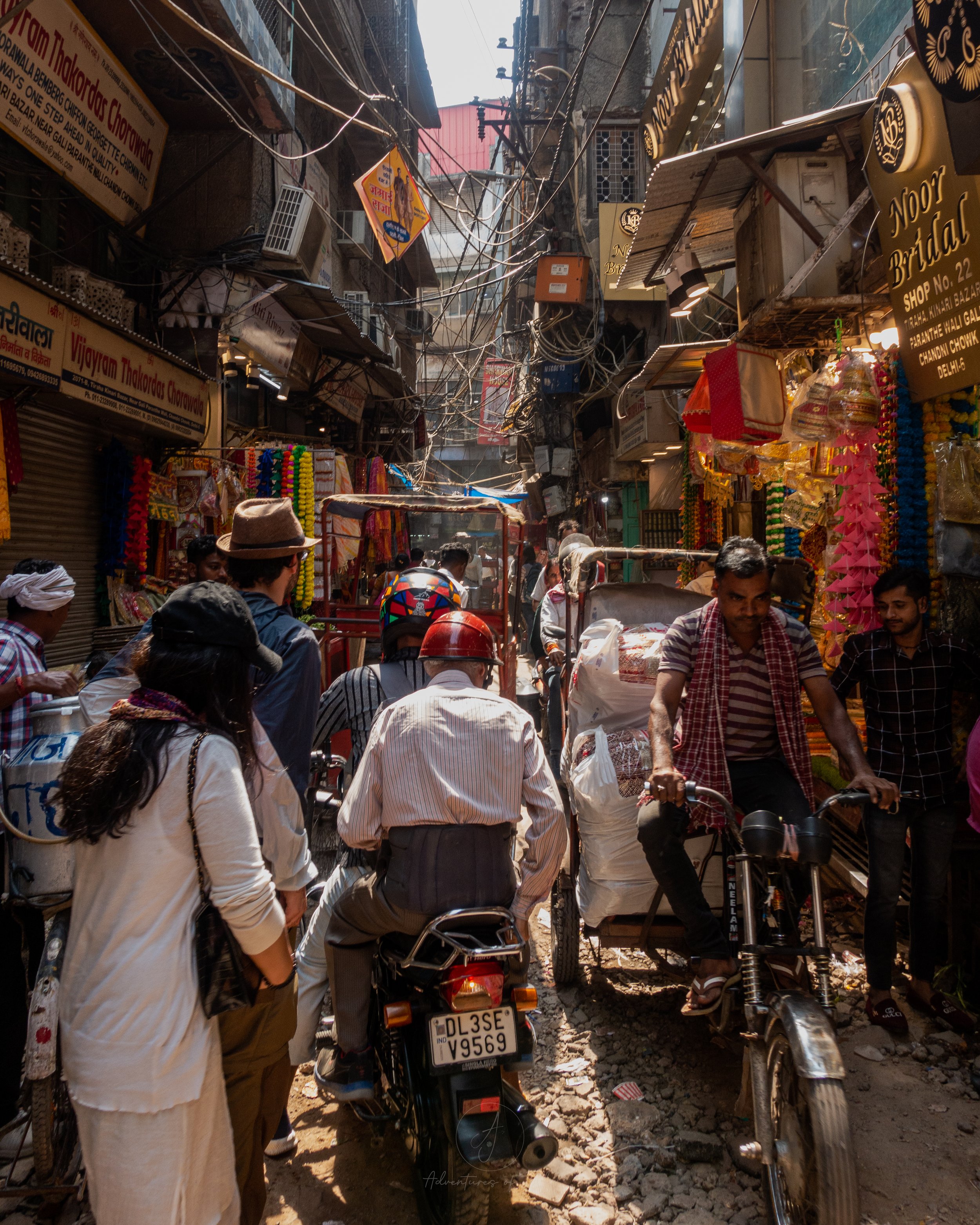
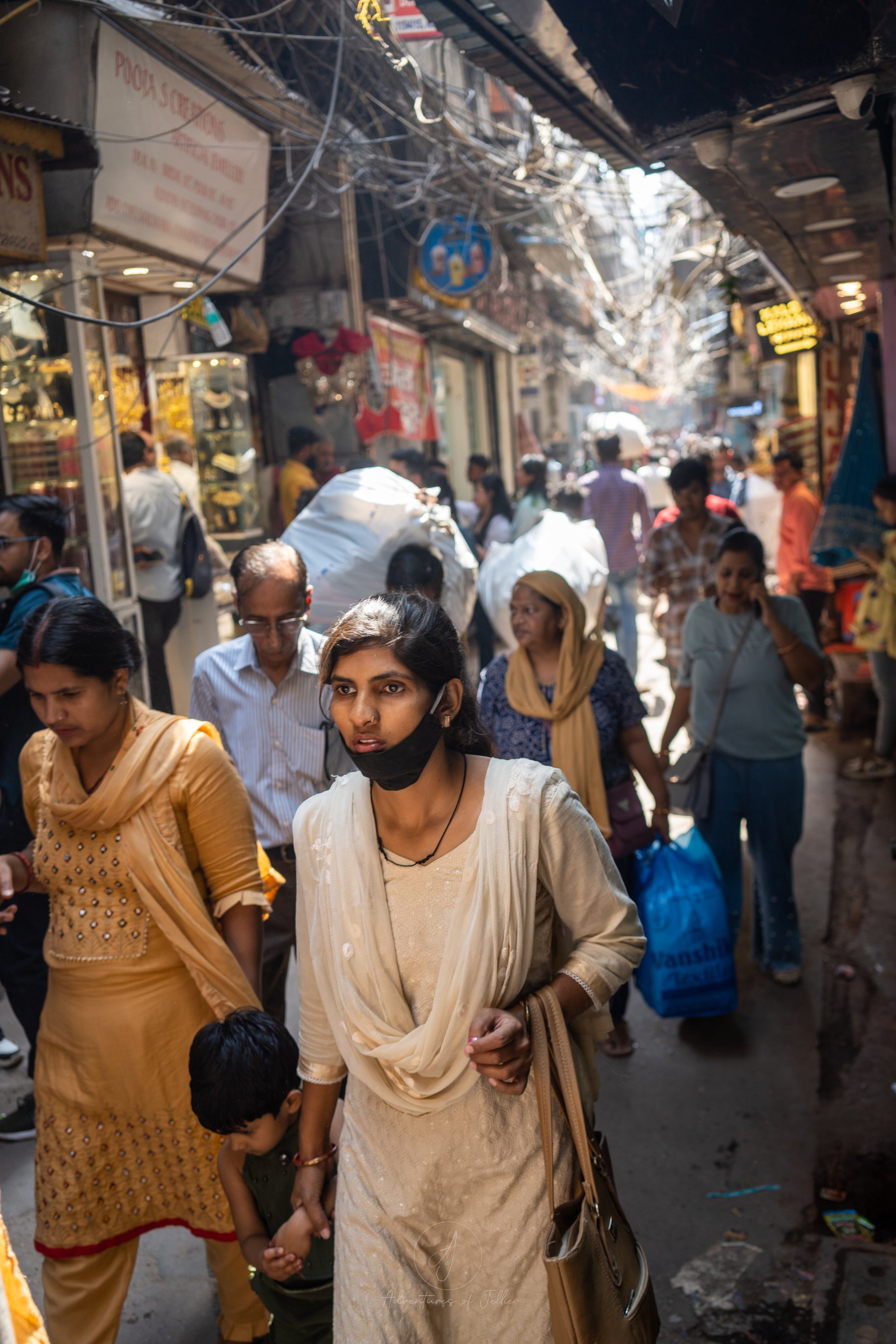
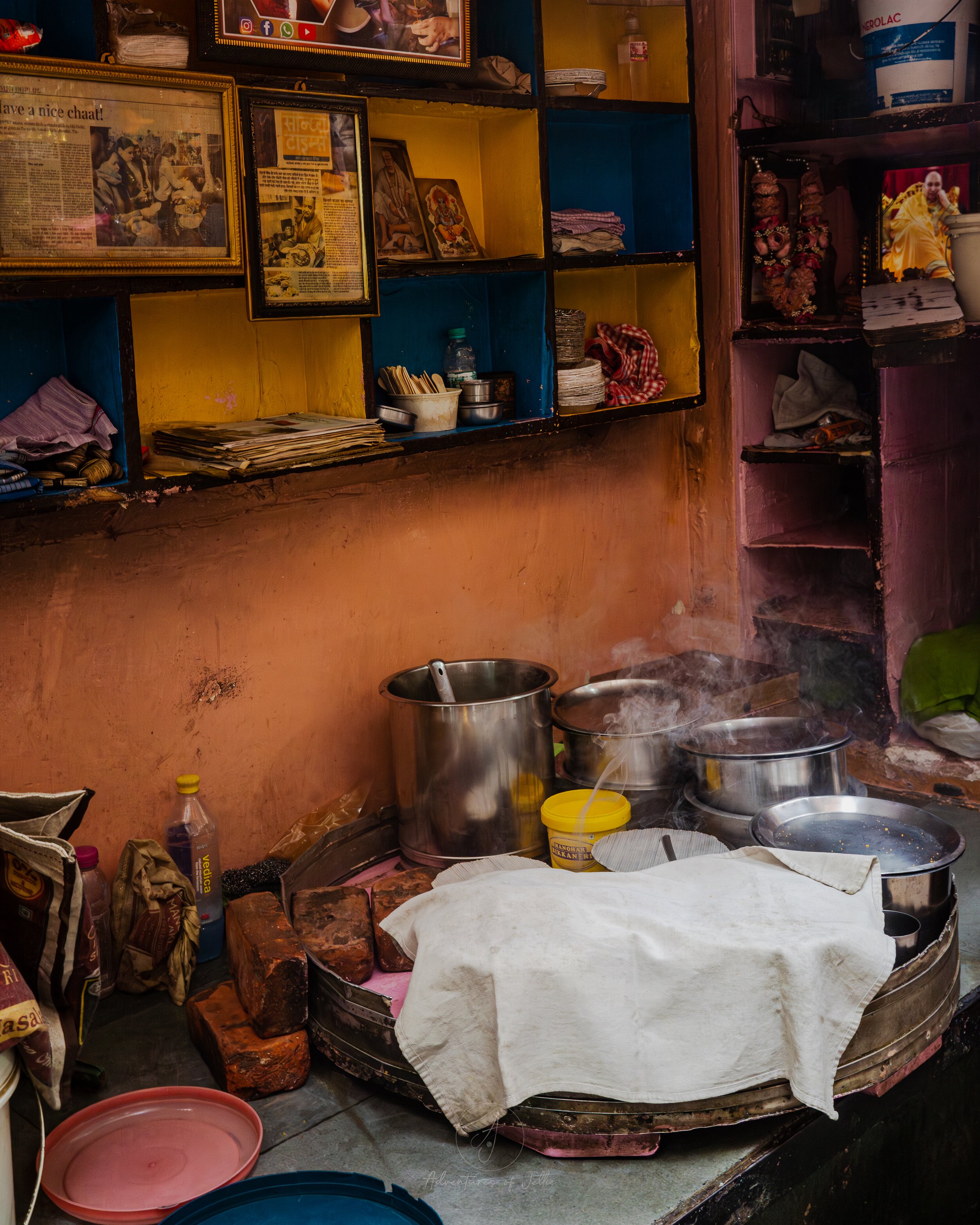

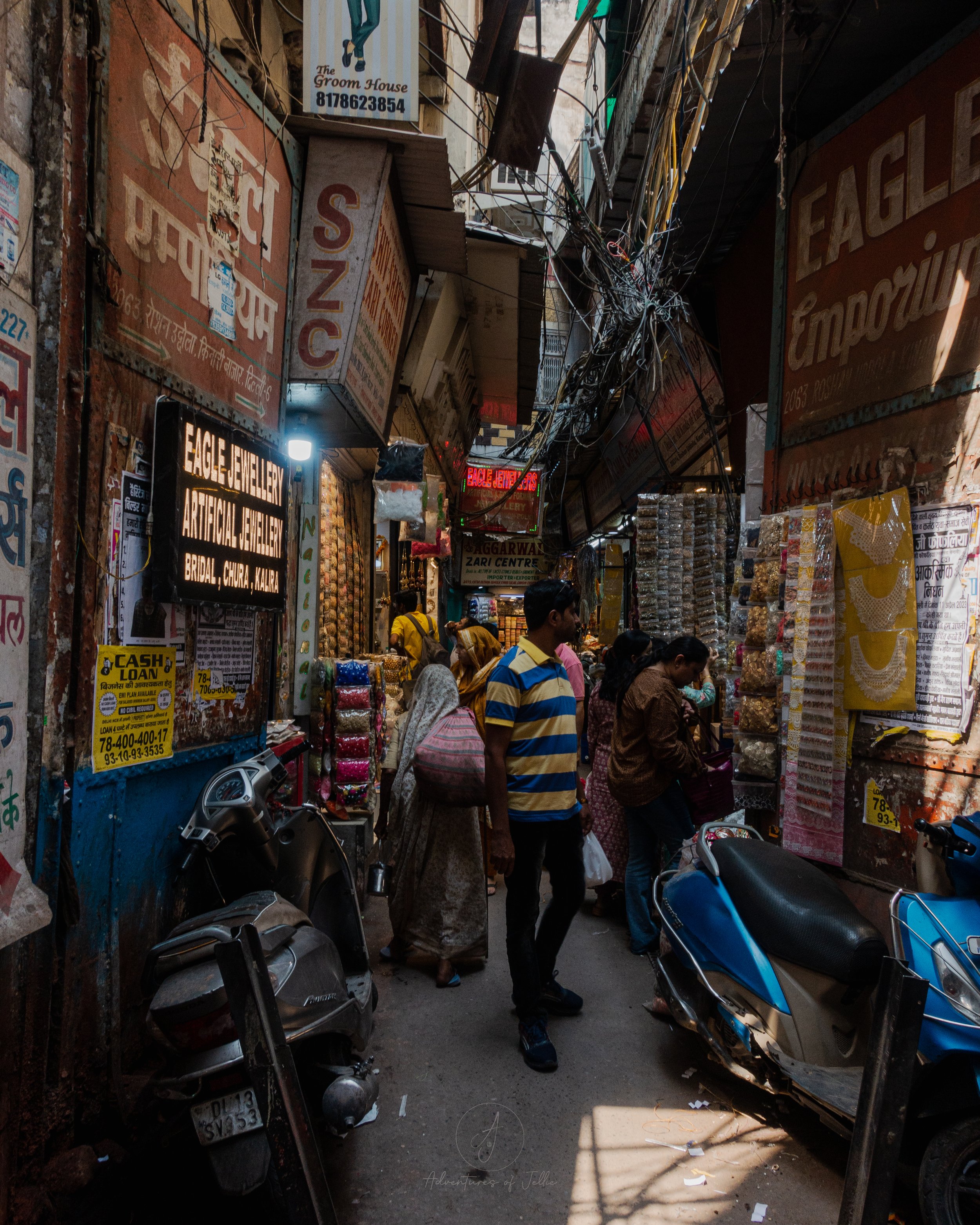
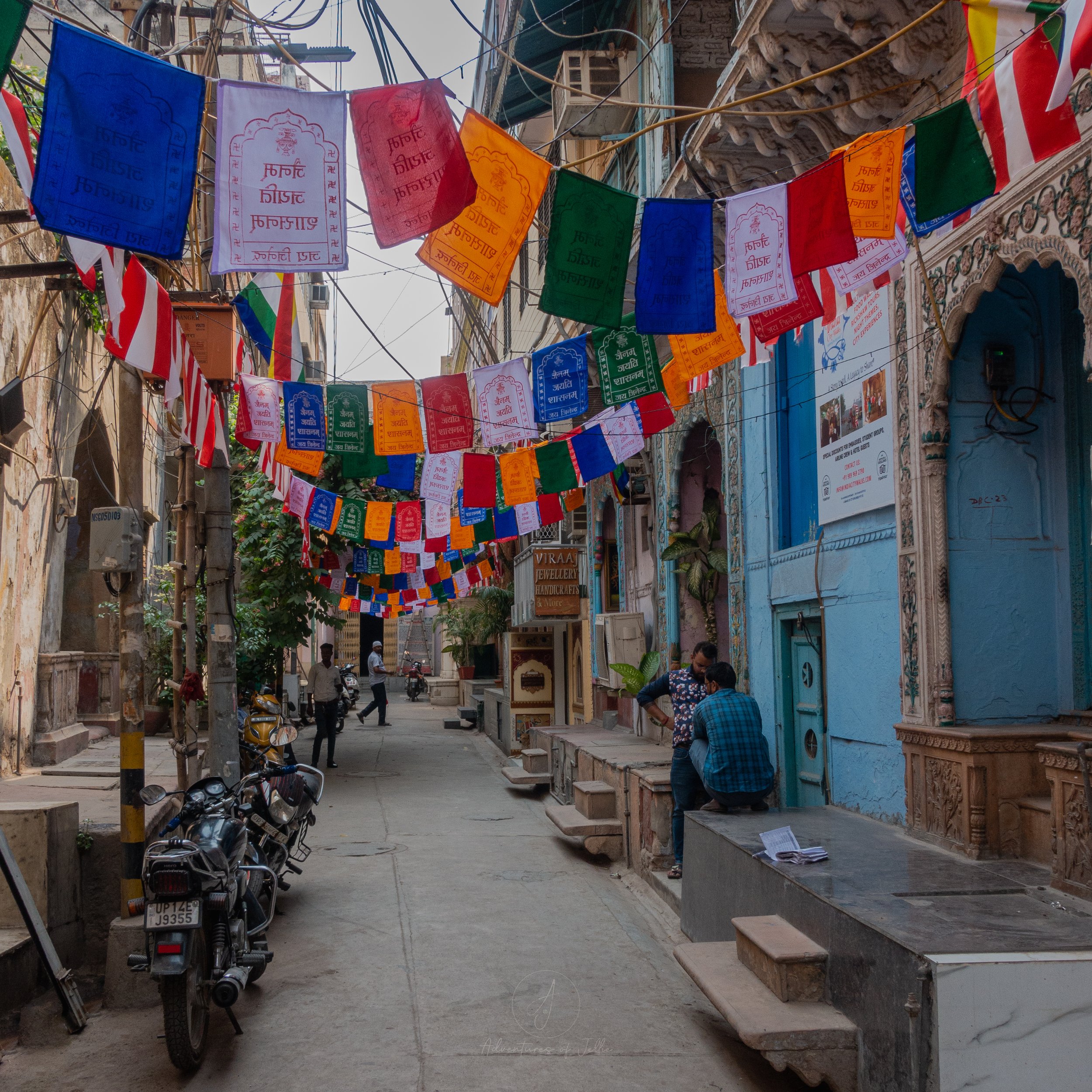
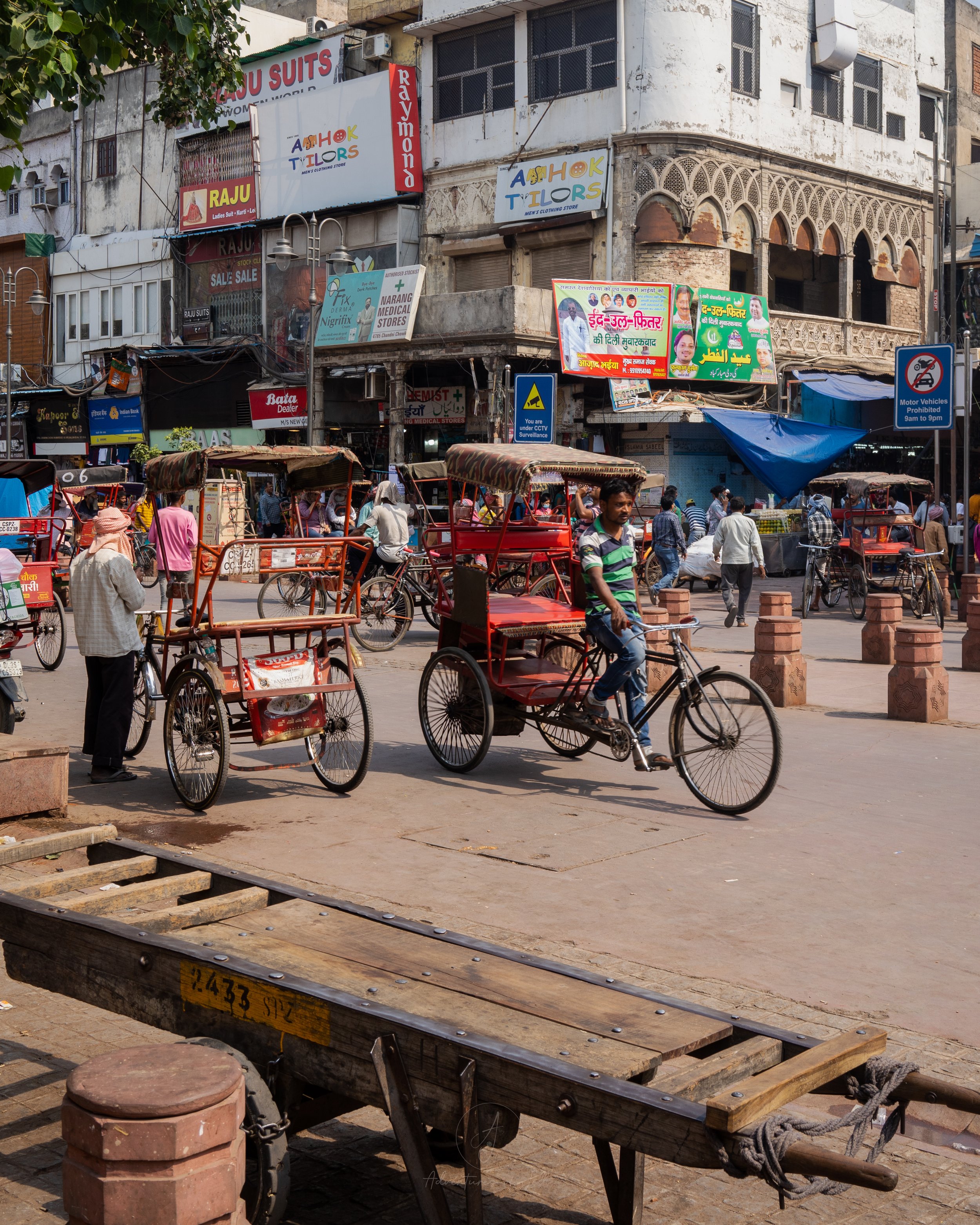
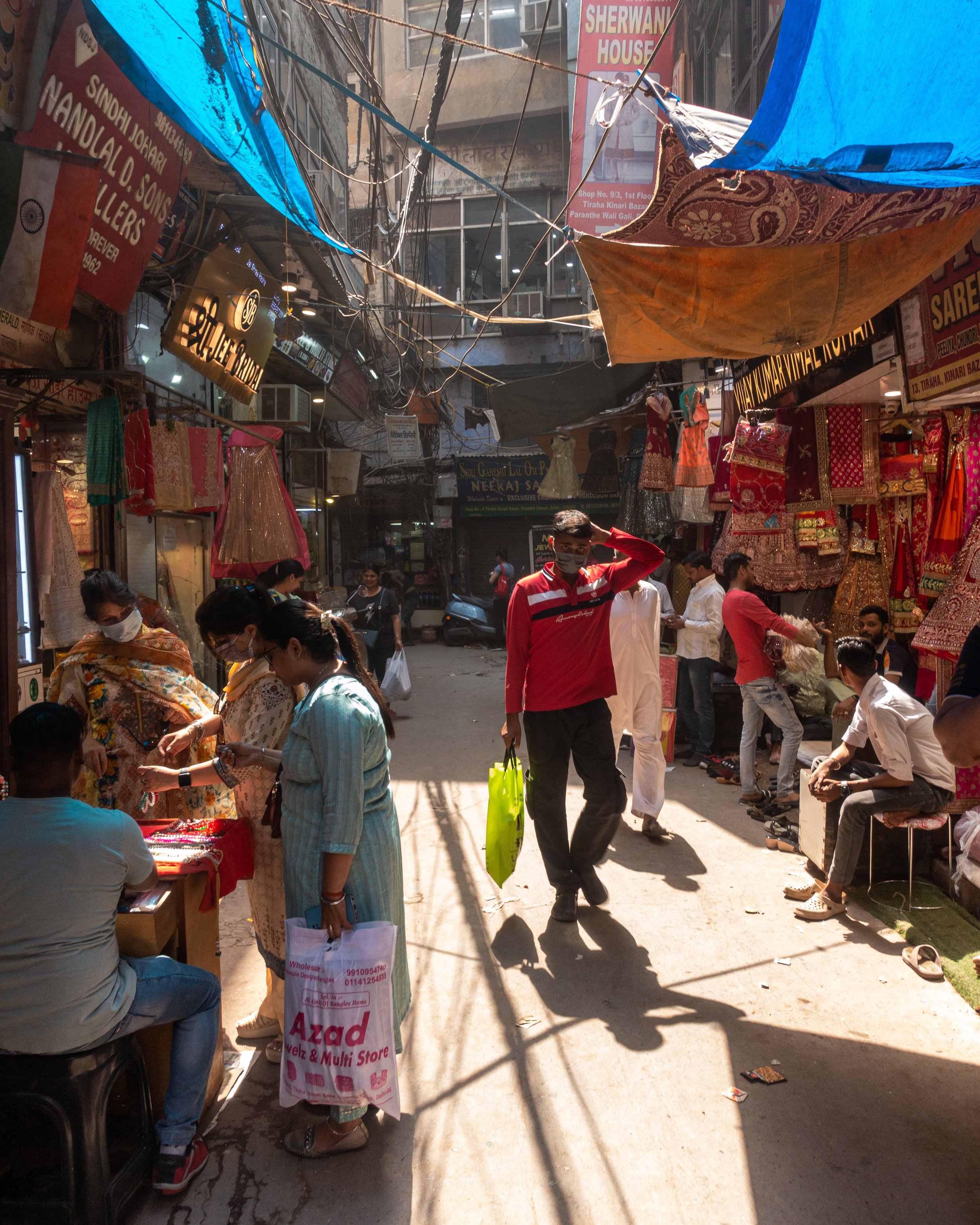
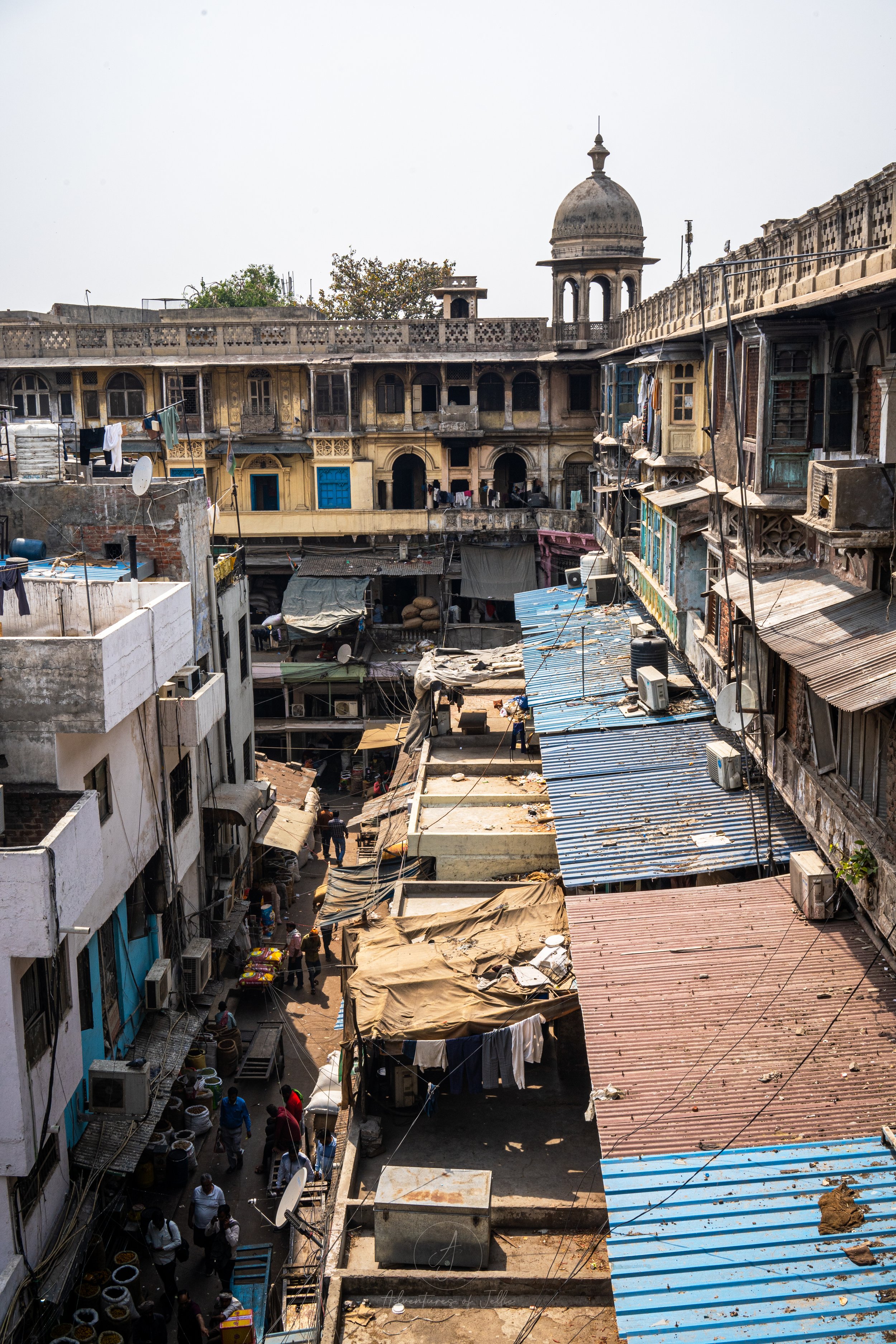
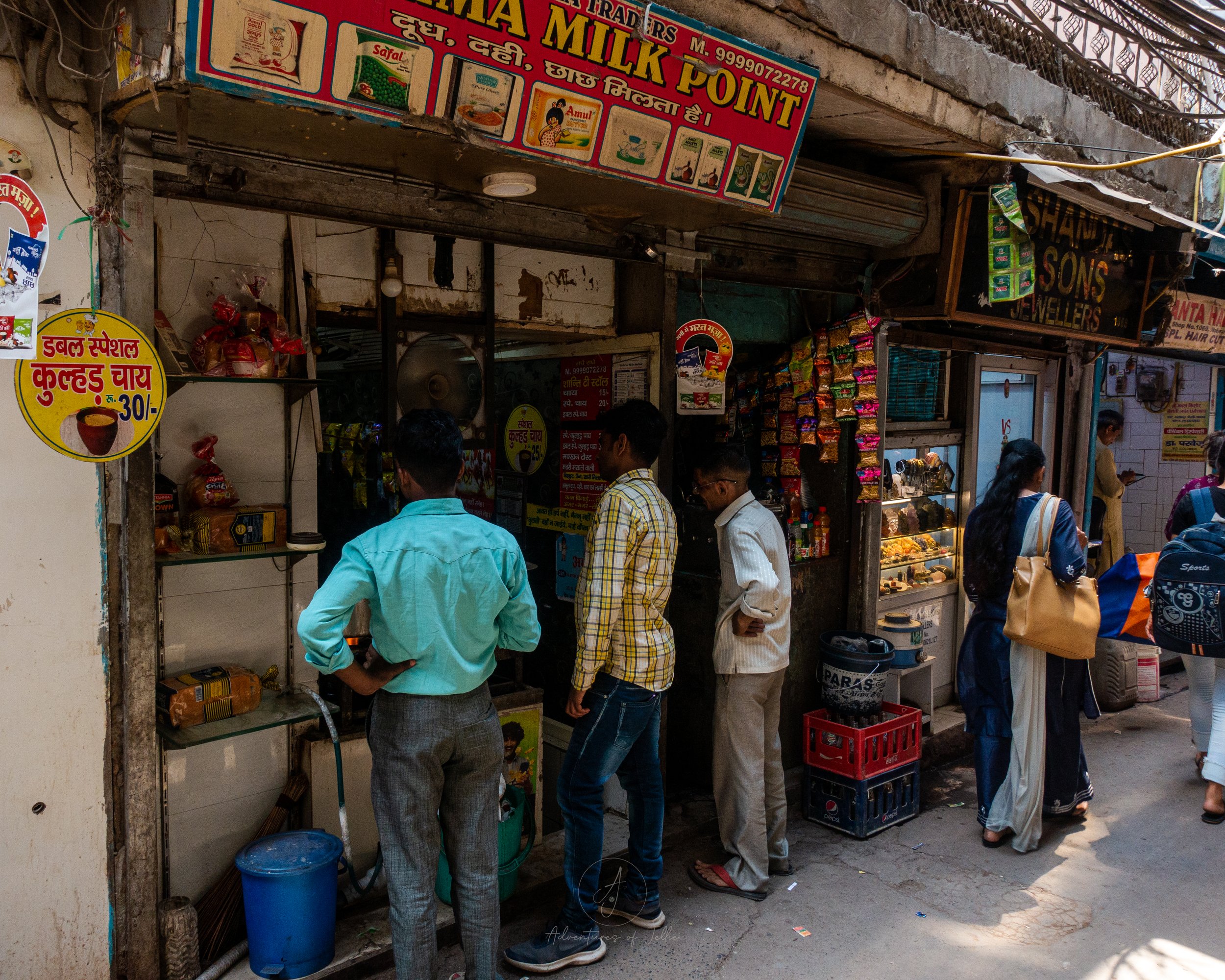

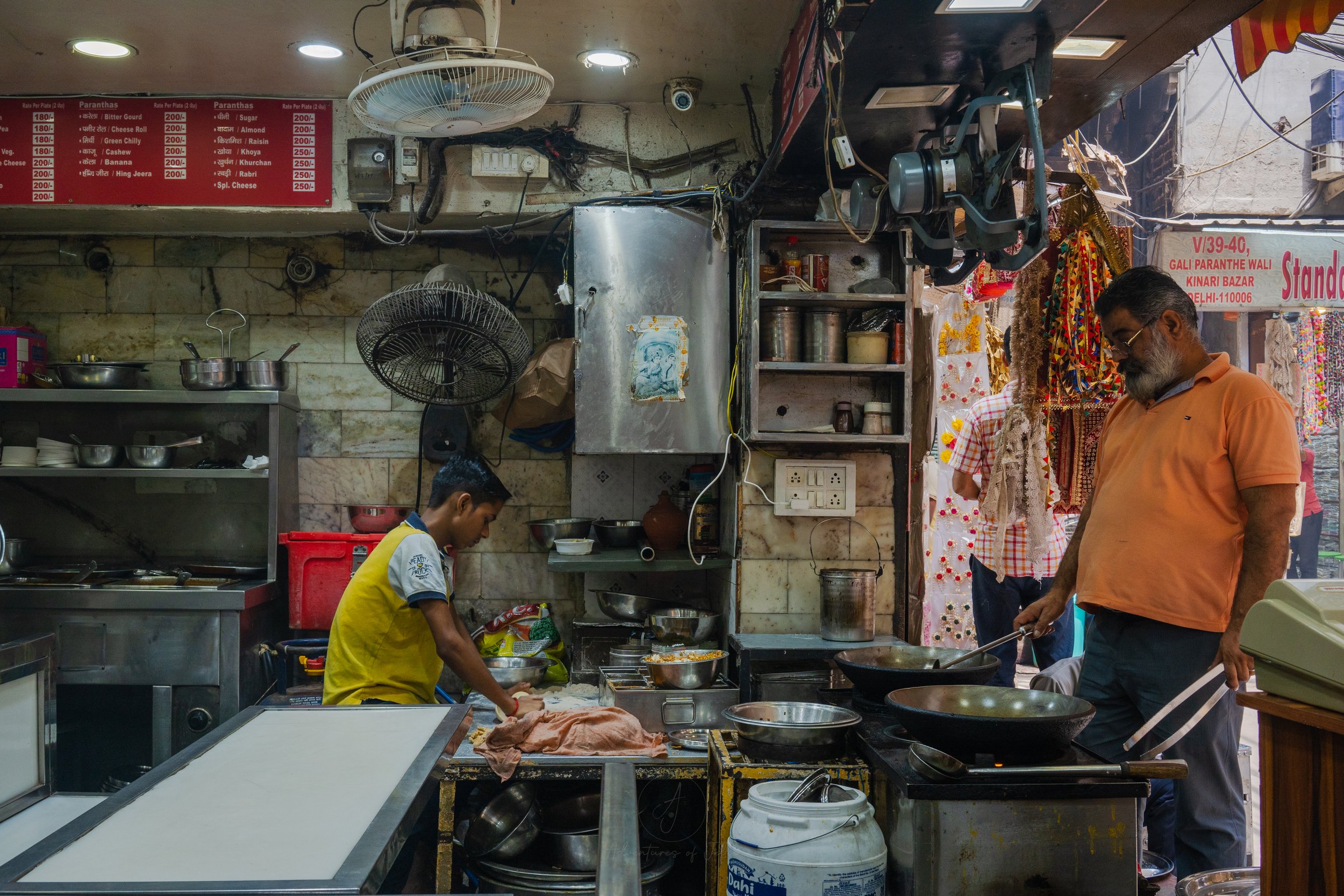
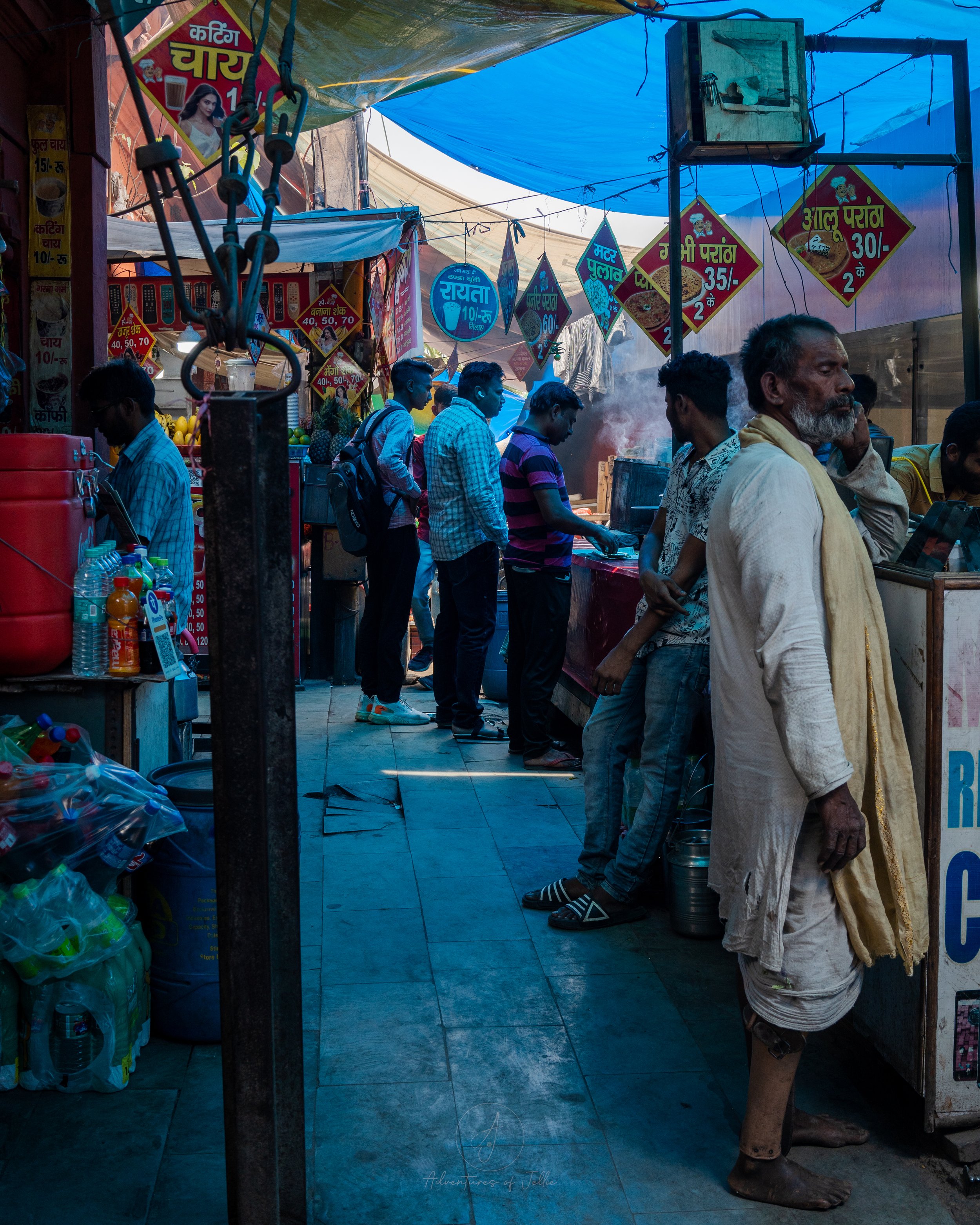
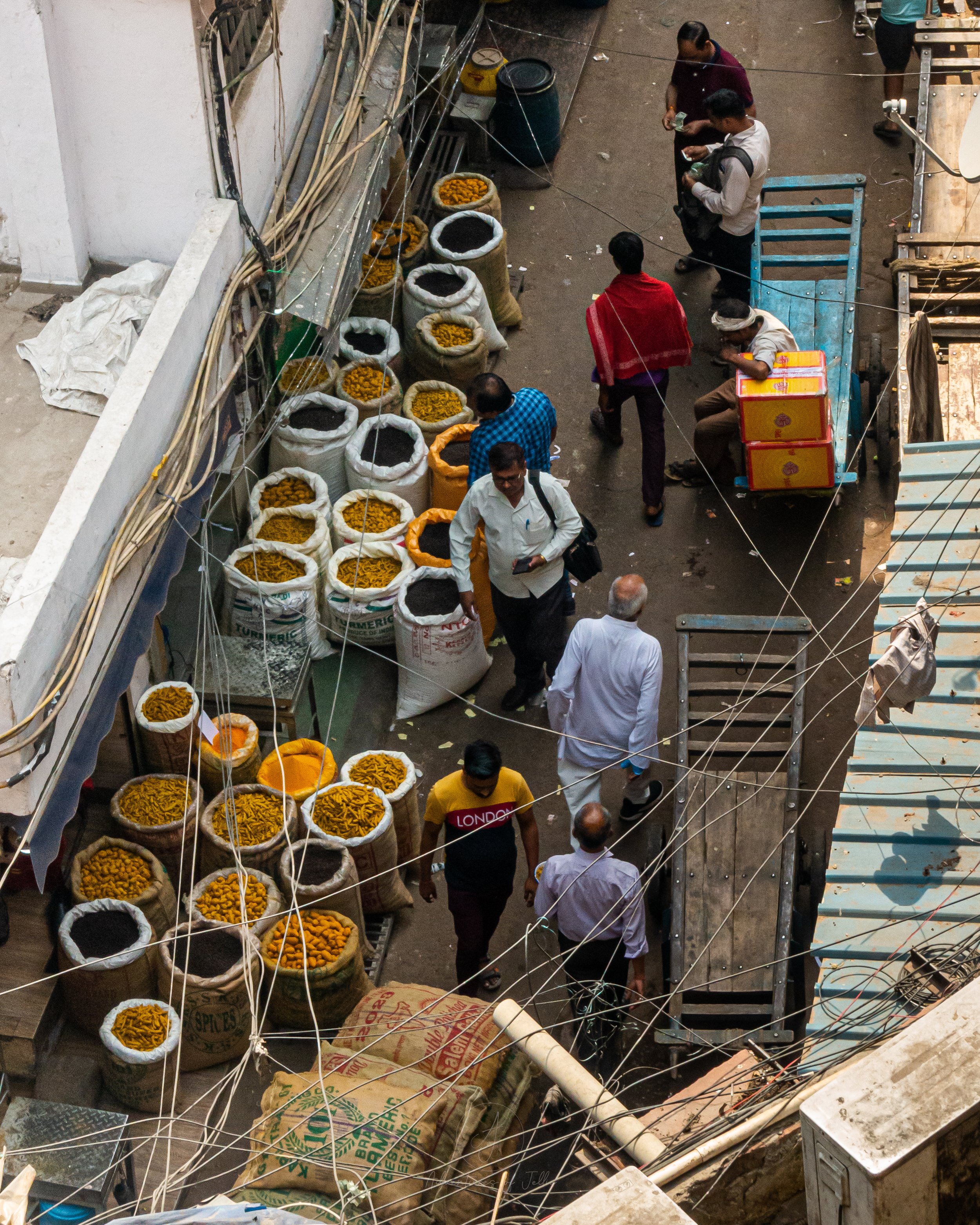

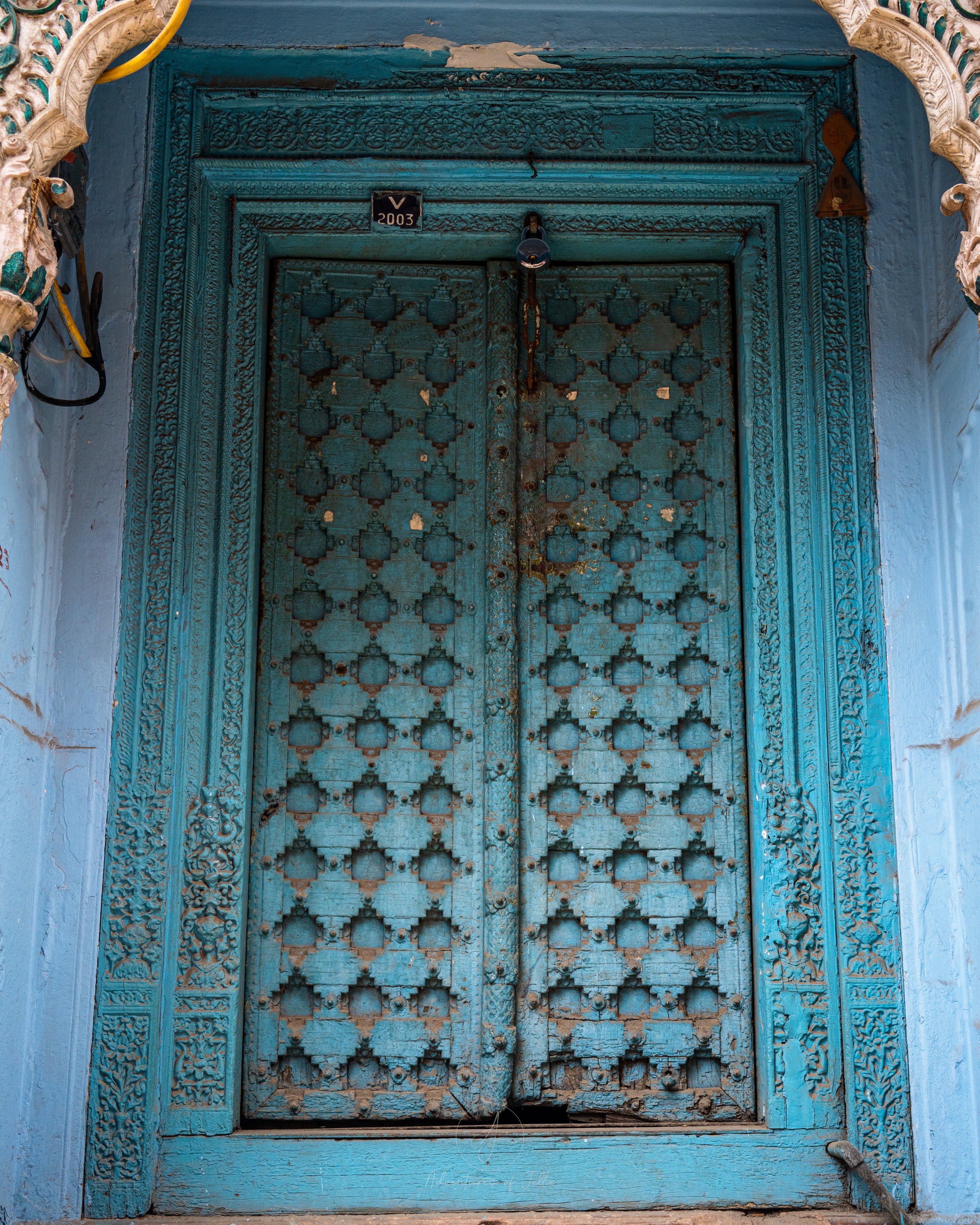
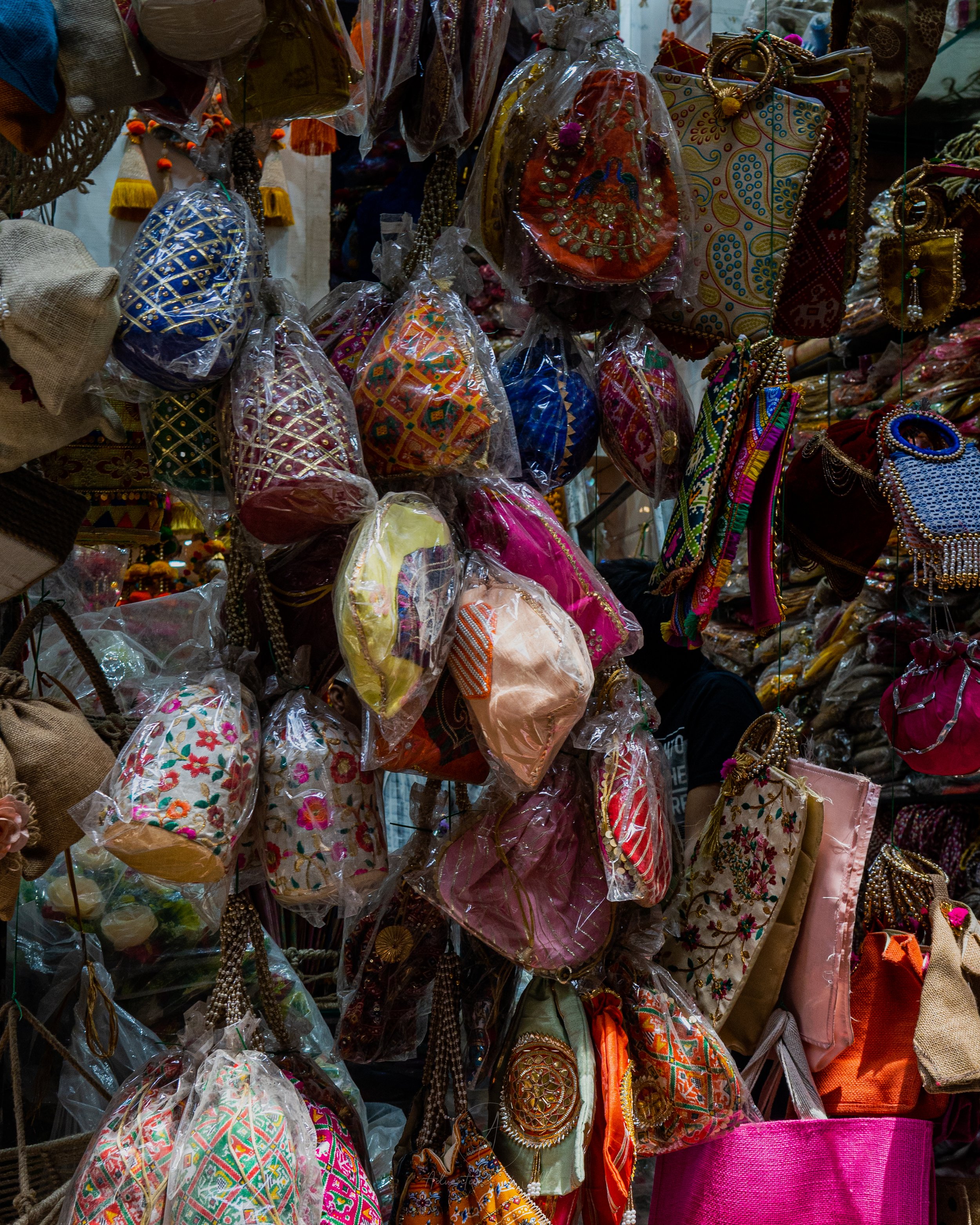
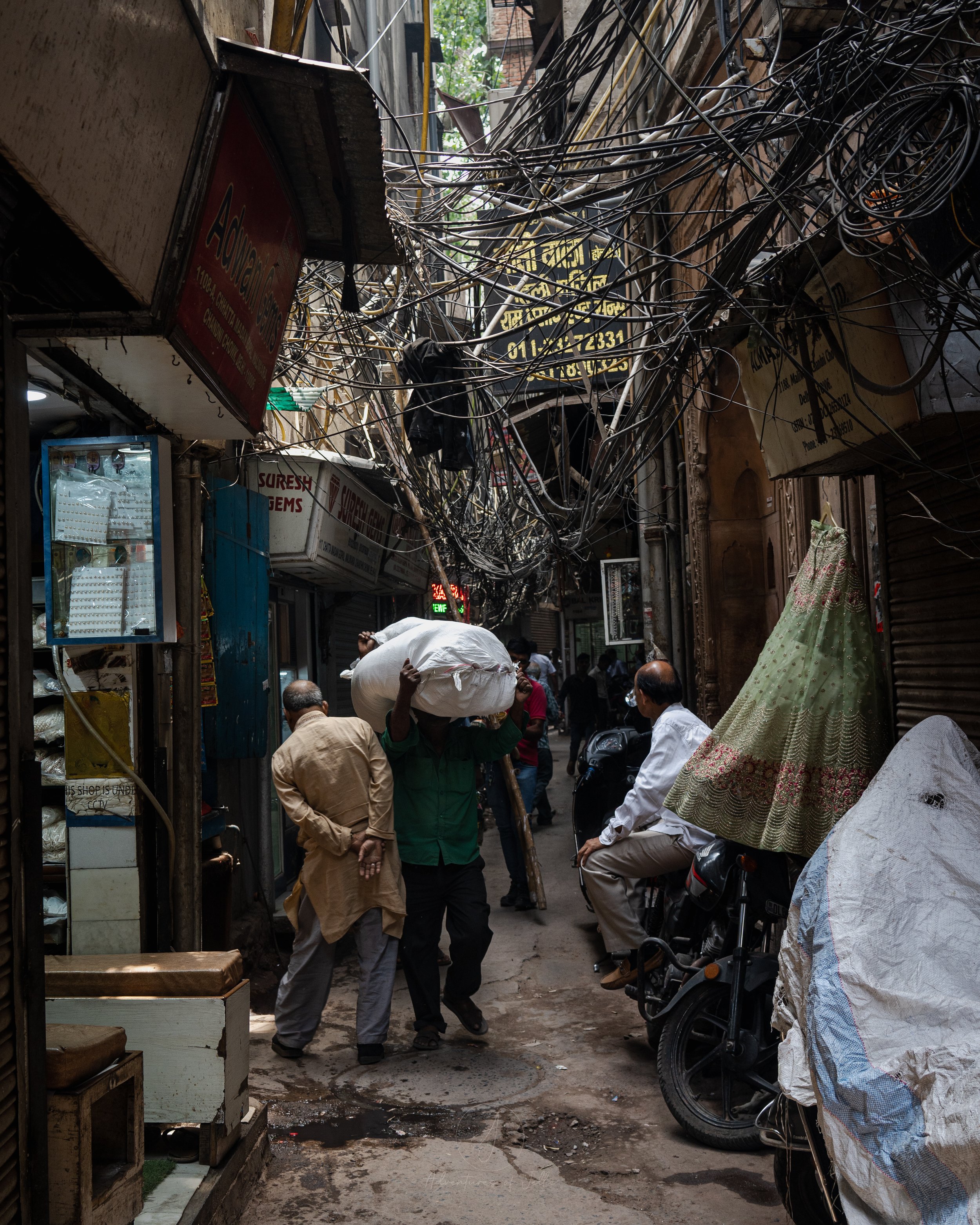
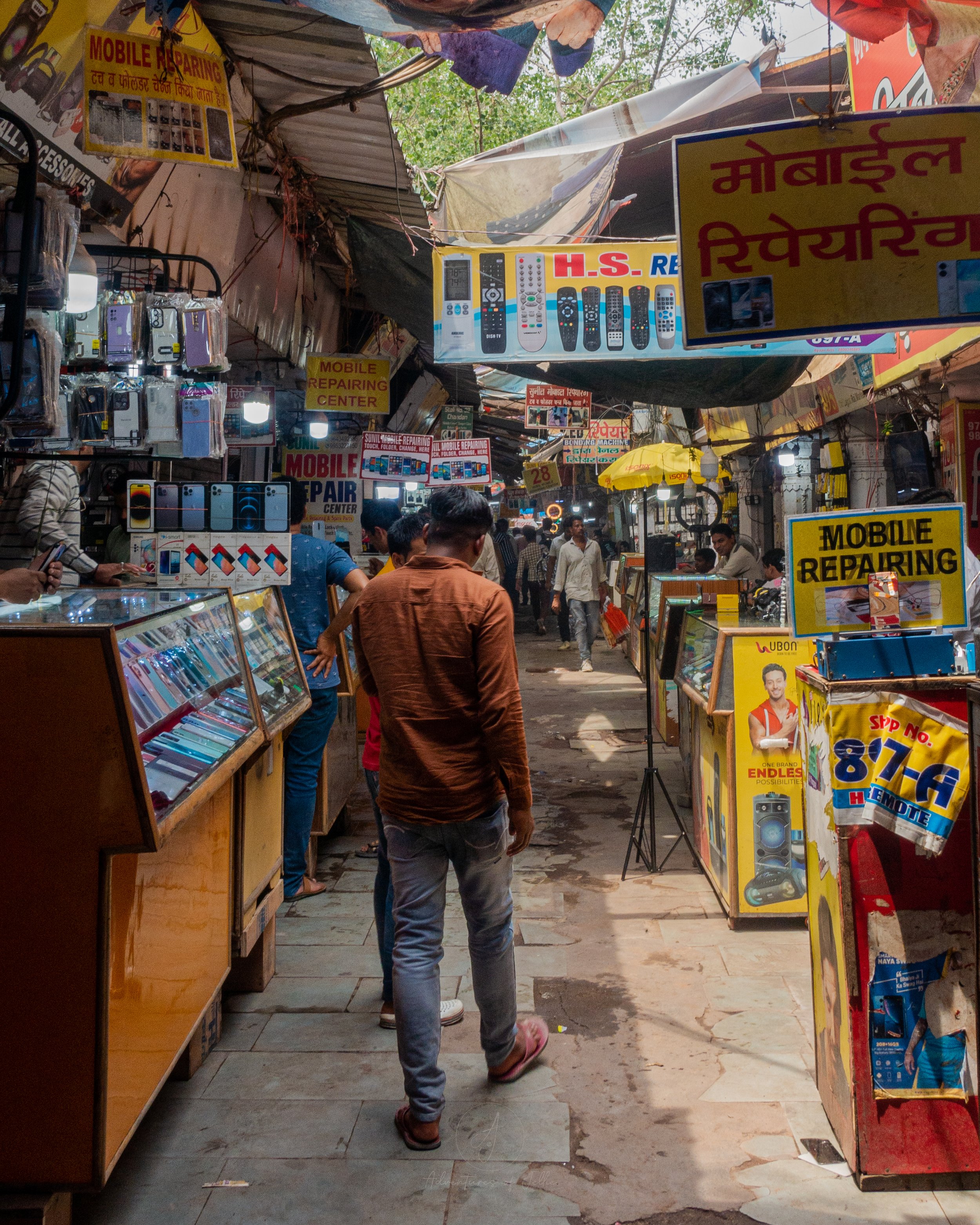
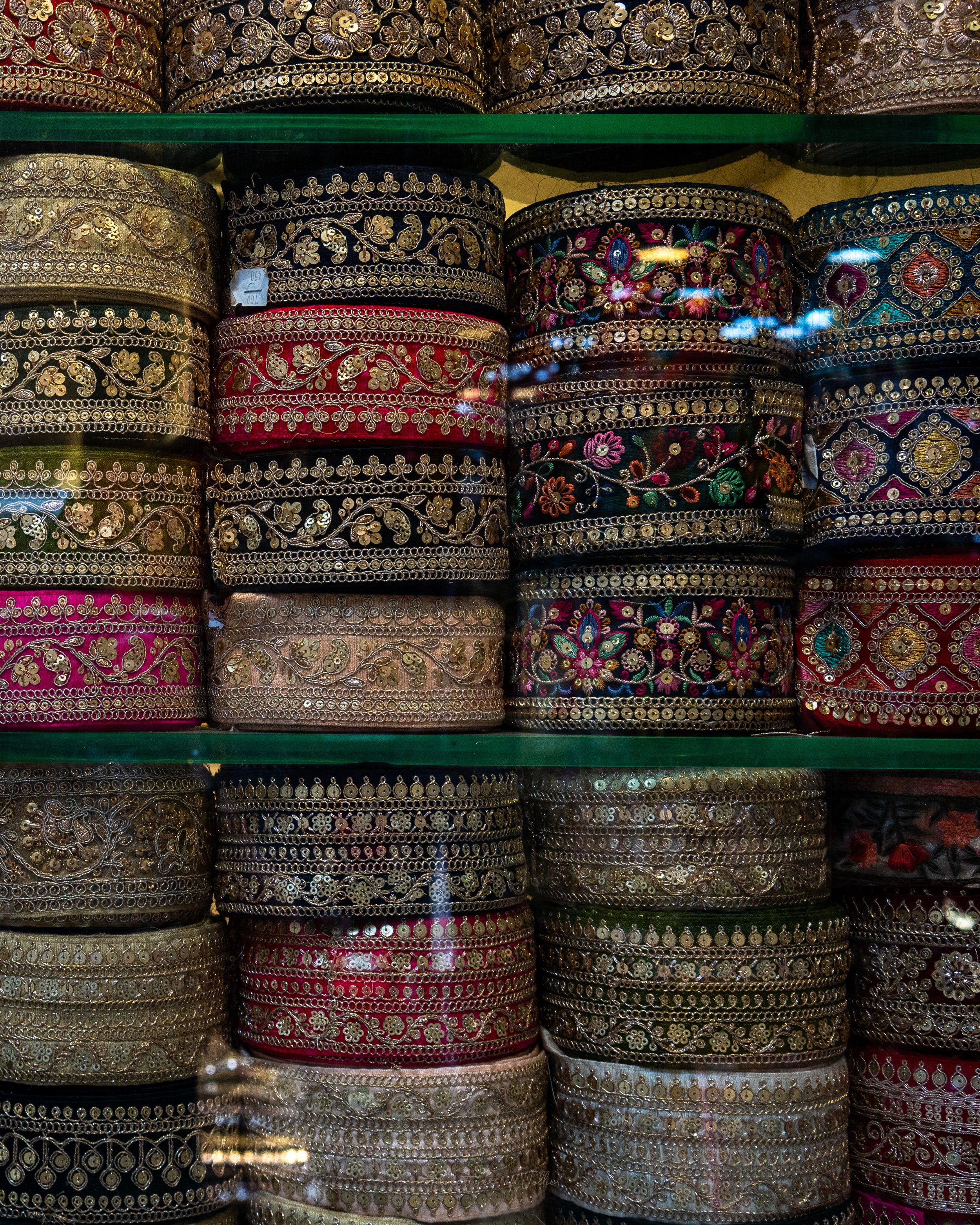
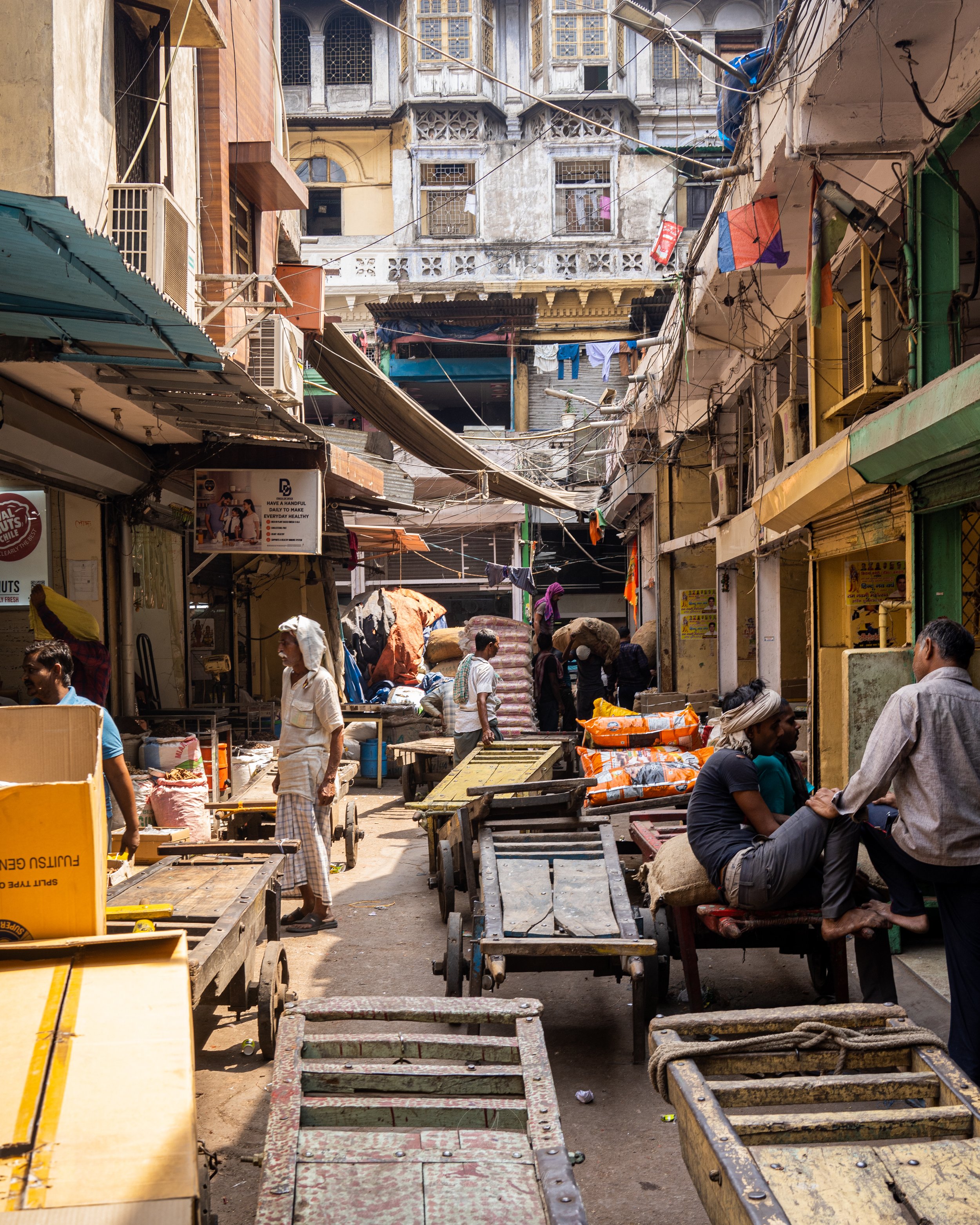
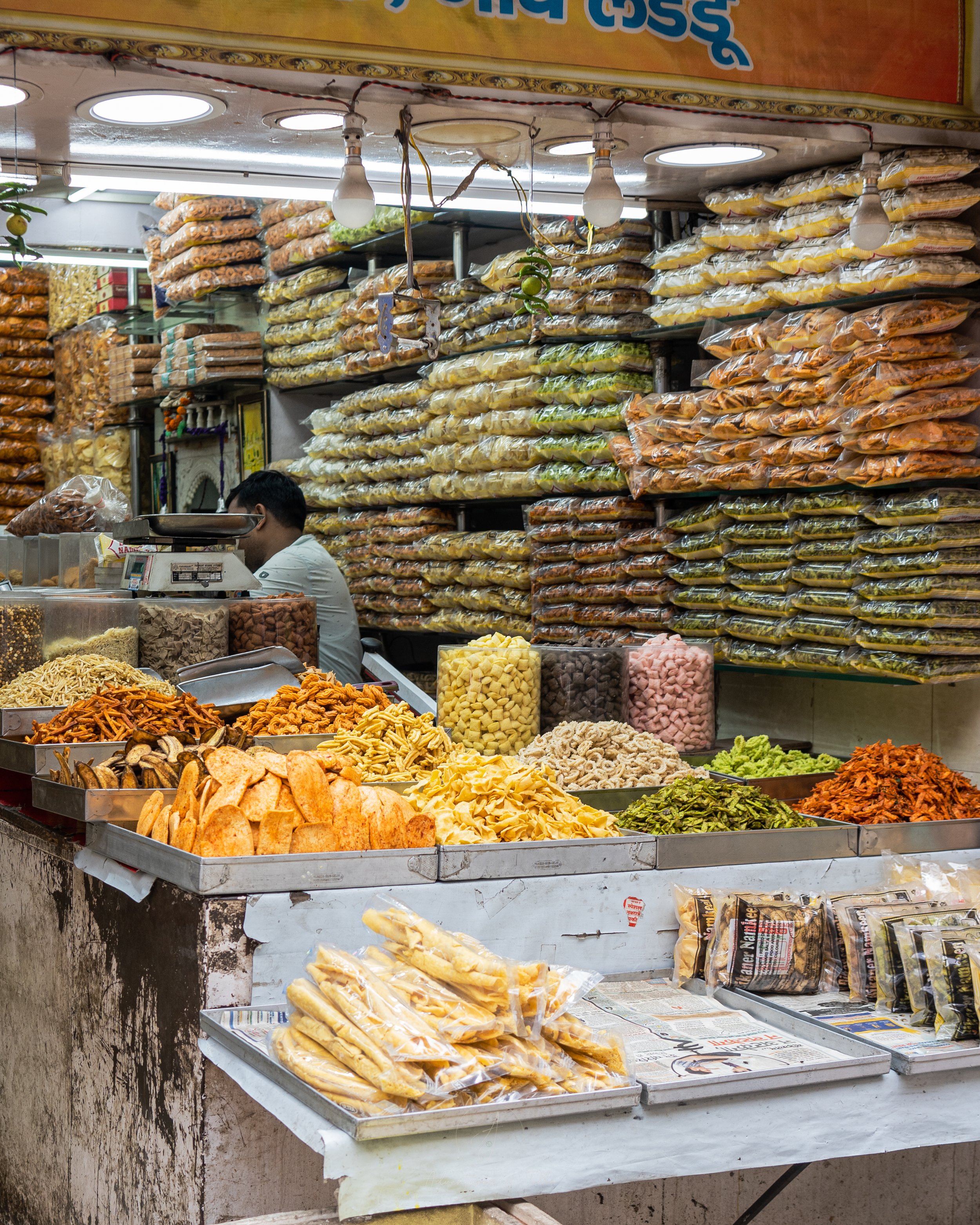

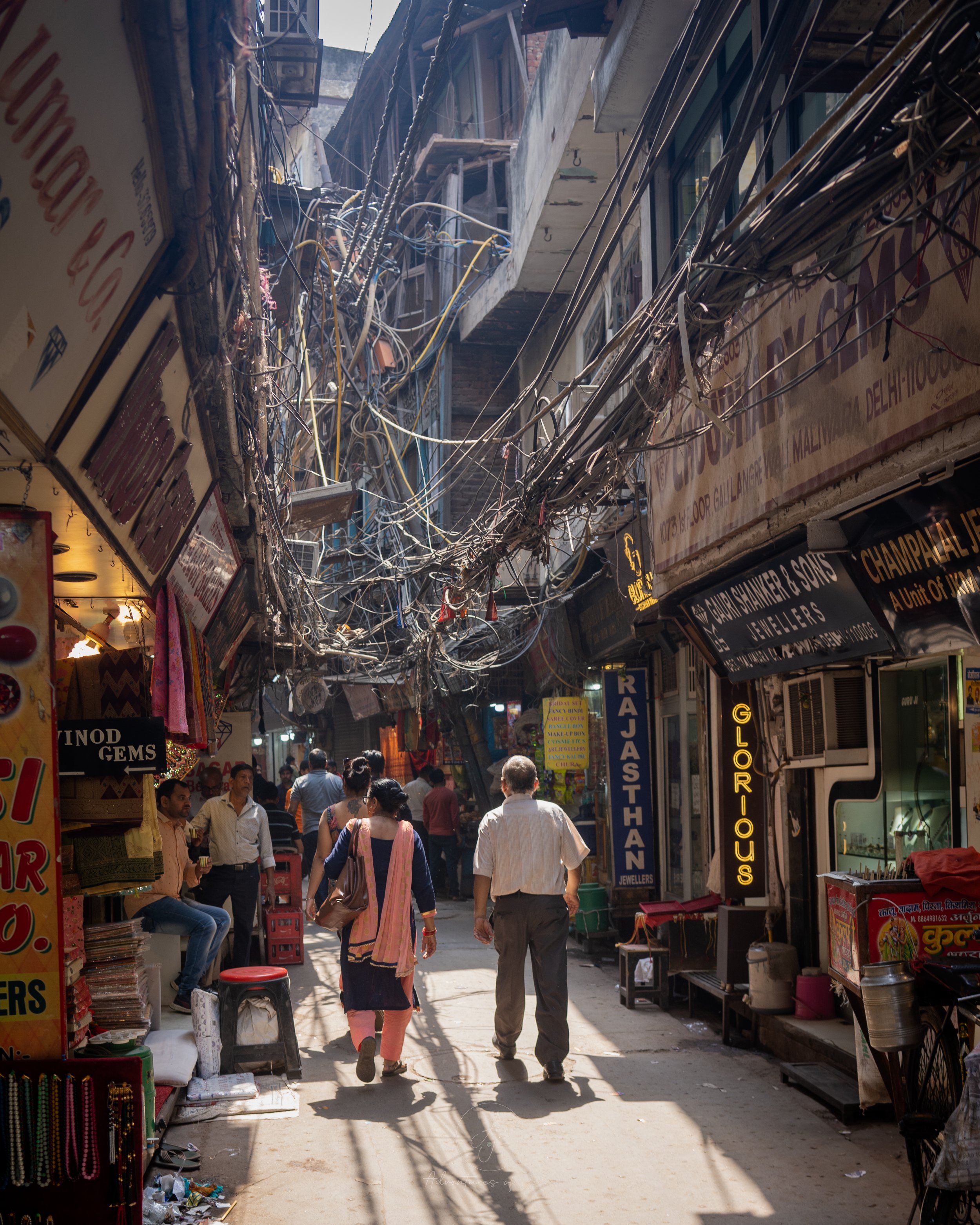
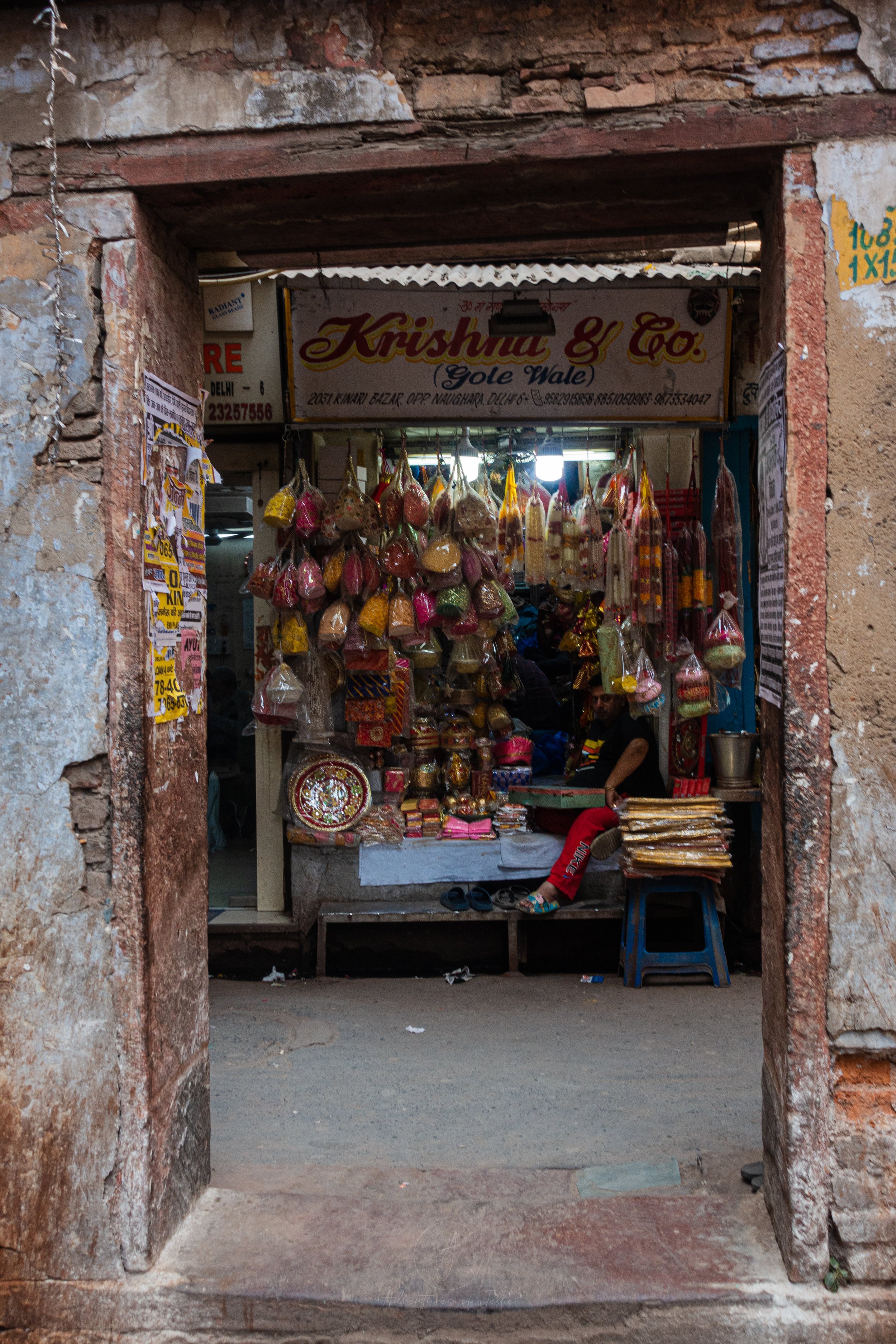
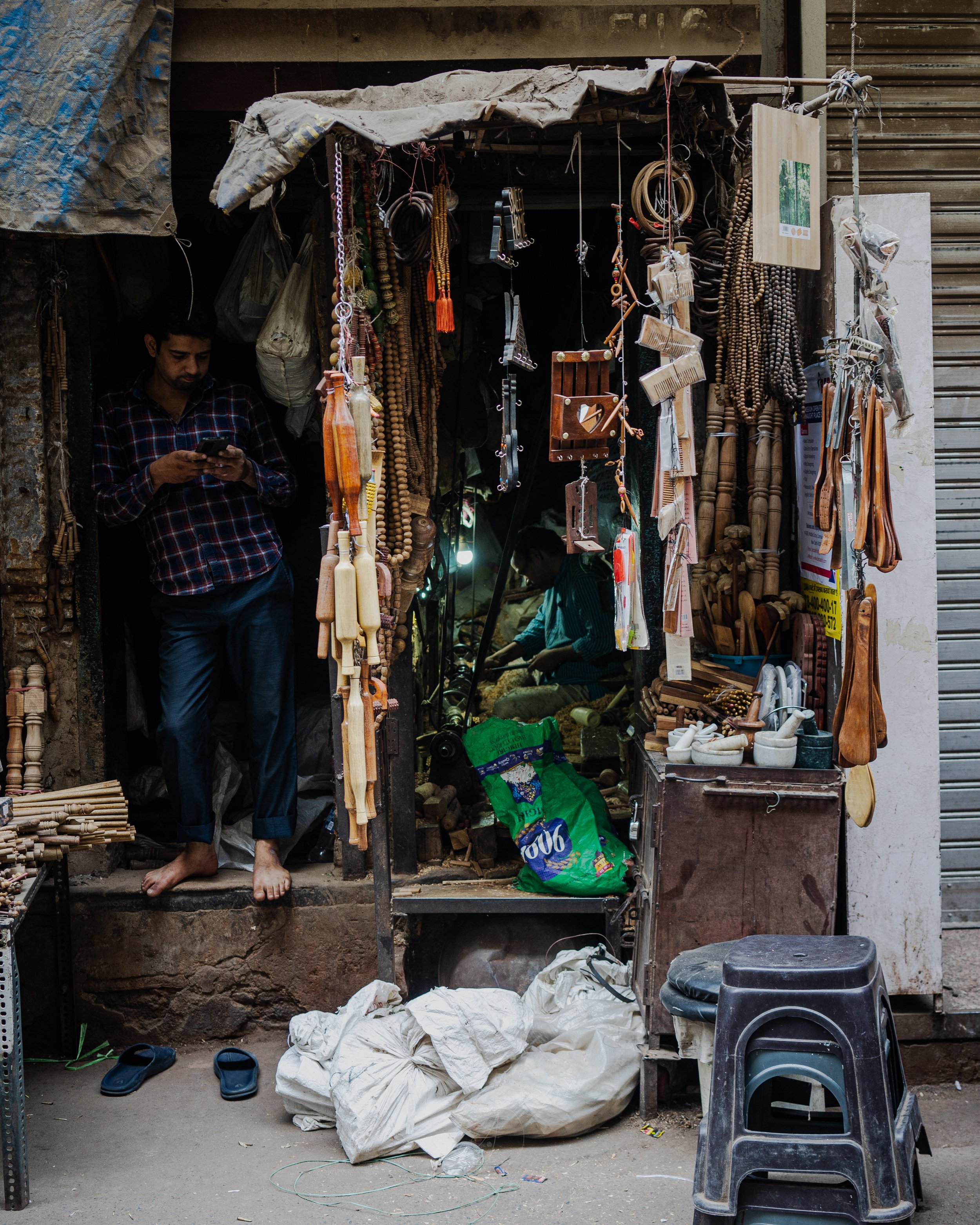
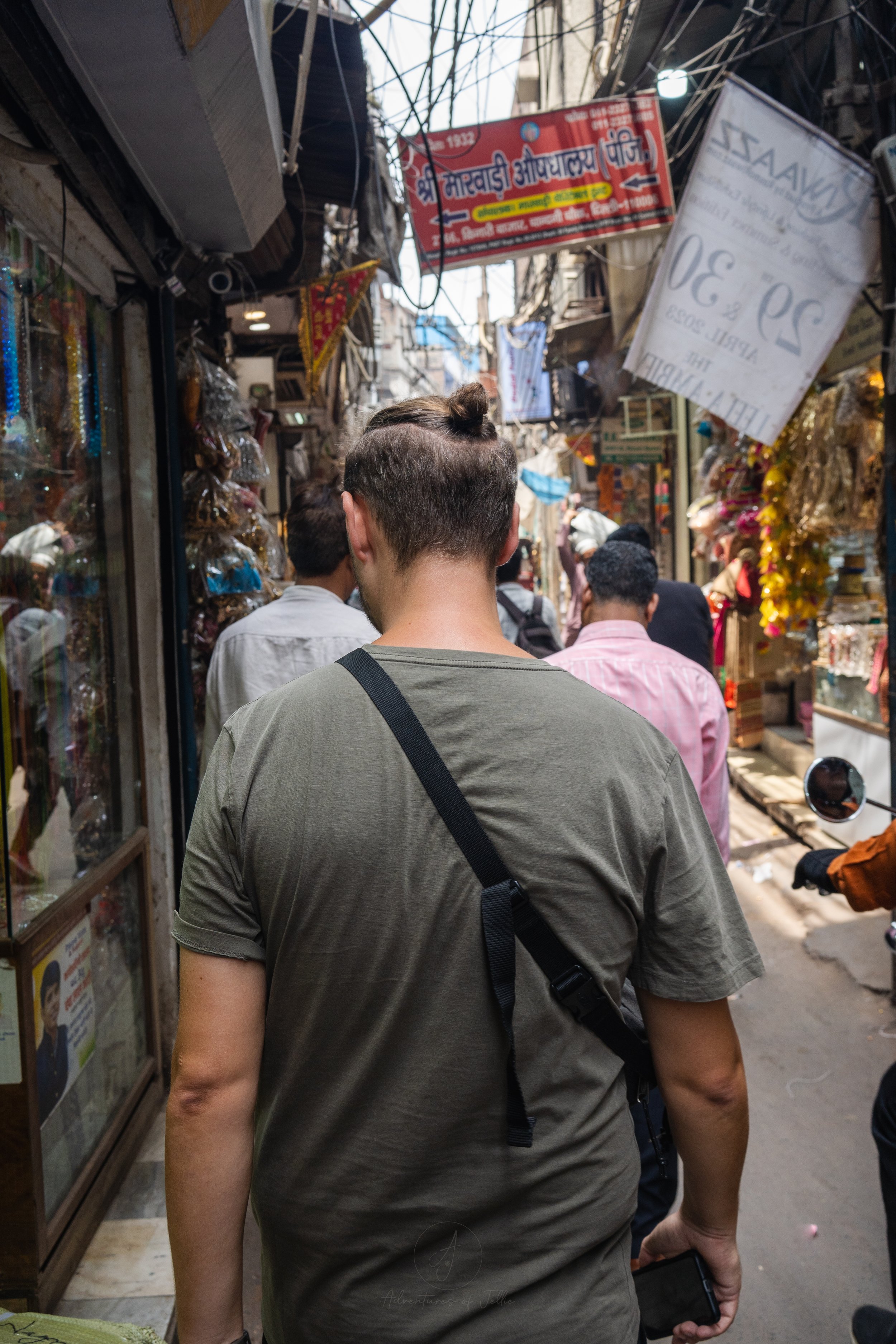
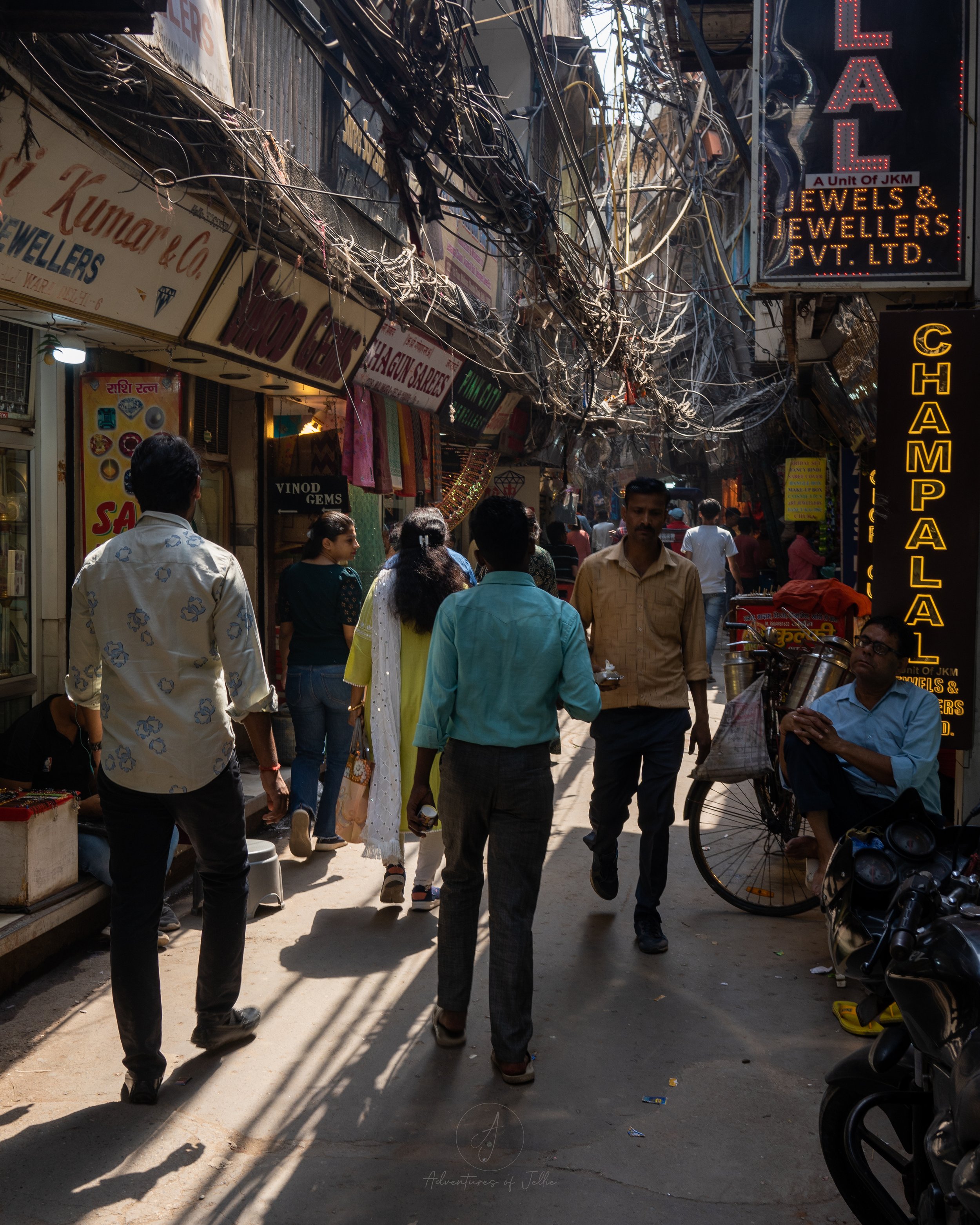

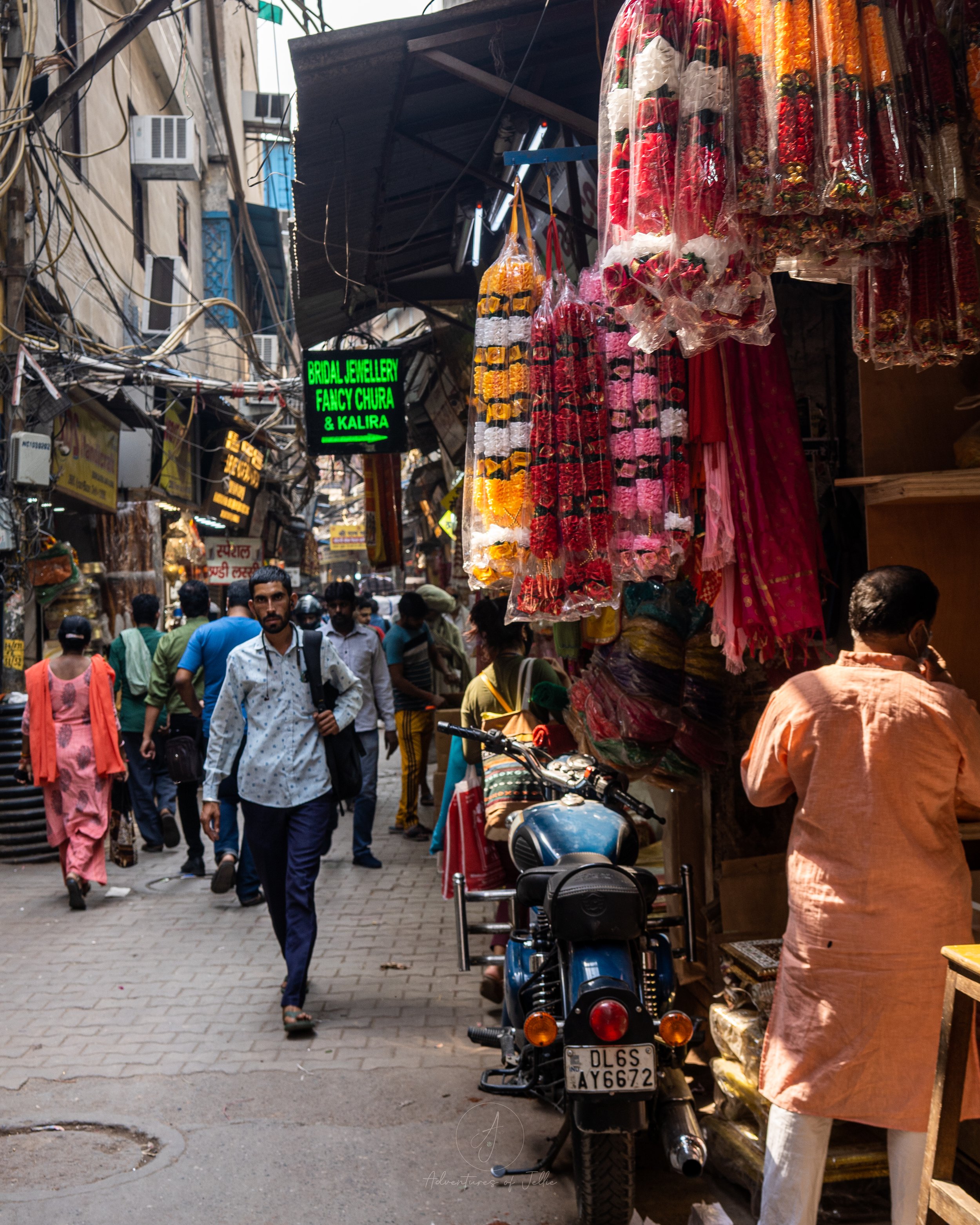
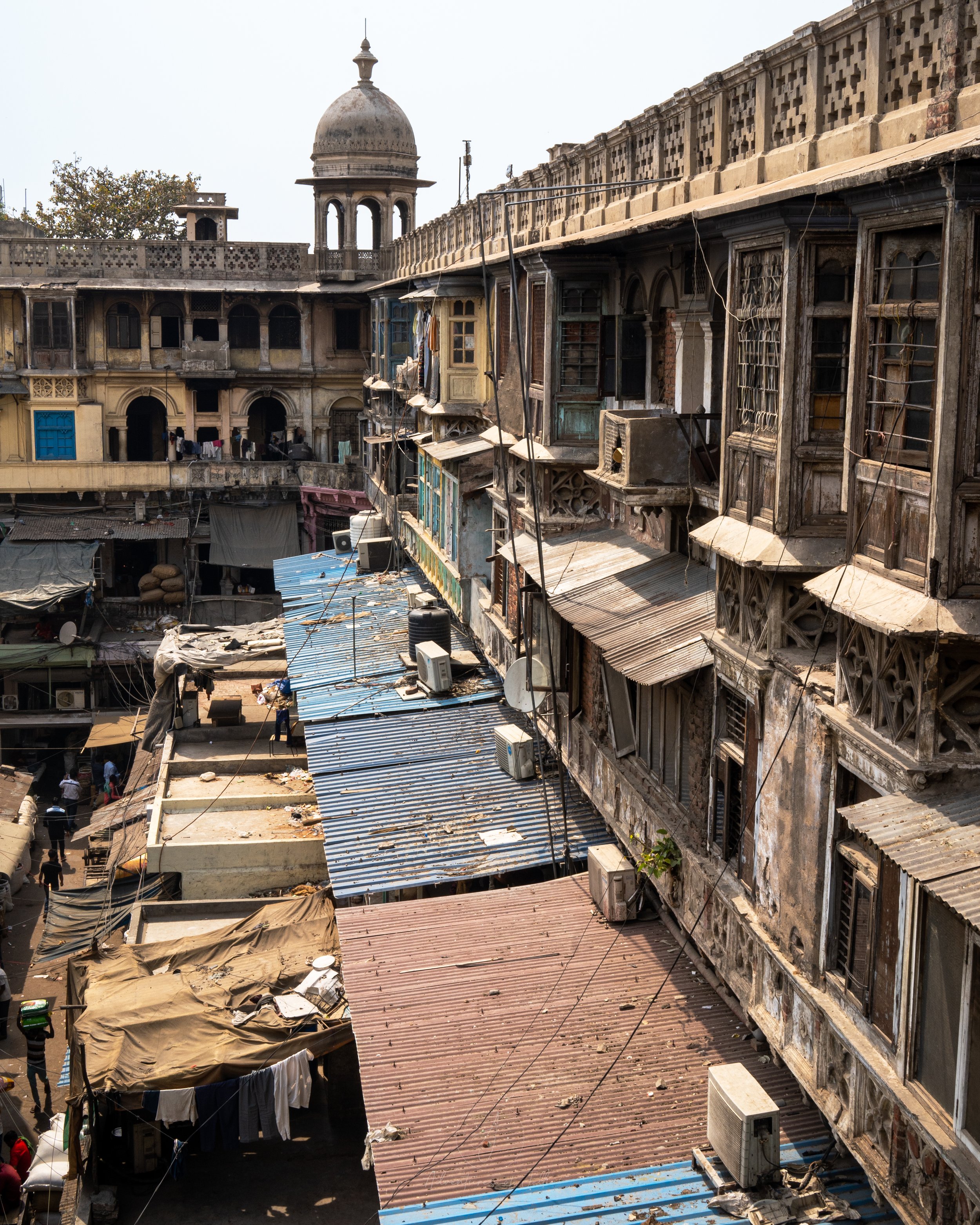
If you’ve found this blog helpful, entertaining or you just fancy supporting us please click the button below!
If you’ve enjoyed reading this article, why not save the pin below?
Tips and Tricks for Landing in India
The vast and beautiful country of India is often seen as a more “difficult” place for the traveller. Full of unexpected challenges, chaos and a truly massive population, India can be overwhelming to the newcomer. Read our guide to the must-know tips and tricks to minimise the shock and prepare you for the incredible adventures India offers.
Disclosure: This article may contain affiliate links. We will earn a small commission from any purchases made through these links.
India can be an overwhelming experience whether you are a seasoned traveller, budget backpacker or even a family on holiday. Just exiting the airport and finding a hotel can be a very stressful experience! There are steps however, that can help you make the most of your time in India and remove some of the worry and inconveniences you may face in this incredible country!
Getting a Sim Card in India
Essential Apps to Download in India
Other Useful Tips for Travel in India
Just some of the obstacles to be navigated on the streets of India!
First things first, you’re going to need to be connected.
Getting A Sim Card
If you’re backpacking a sim card is a godsend. Without one you’re completely reliant on Wifi for booking, banking and transport. Sim cards are extremely affordable in India and widely available. The two main providers are Airtel and Jio.
We originally brought Airtel sim cards from Delhi International airport for 400 rupees each (£3.91 or $4.87). These gave us a 28 day sim with unlimited texts and calls and 1.5 GB per day of data. We got lucky and had a special promotion added which also gave us unlimited 5G data.
However on our second trip to India, it seems that it is no longer possible to get a sim card at the airport as you will need an Indian national’s phone number to vouch for you and activate the card. We’d recommend getting in touch with your hostel in advance as they maybe able to do this for you whilst you’re at the airport or as we did, they will happily help you out once you arrive.
One issue with Indian sim cards is that, when it comes to the time to top up, they frequently will not accept non Indian credit or debit cards. To get round this, just pop into one of the physical shops of your service provider. These shops are everywhere and in our experience, the staff were very helpful and quick.
Also if you’re staying in India for longer than 90 days, you will have to buy another sim card as sims sold to tourists are deactivated after three months of use. As far as we can tell there is no way around this. Just head to the mobile phone provider with your passport and purchase another sim.
Indian eSIM
Alternatively to all of the above, you can buy an eSIM for India before you even get to there and enjoy a much more hassle free experience for a small increase in price. eSIMs do not require a physical card or store and can be managed from an app on your phone. They cost a little more than plastic sim cards but you will avoid some of the issues we encountered! You can buy an eSIM for India entirely online from here.
So you’ve brought your sim card, now for some life saving apps in India.
Apps to Download
Indian Ride Hailing Apps
Uber - Uber is incredibly useful in Delhi and India as a whole. It removes all of the unwanted negotiation, overcharging and risk of getting your wallet out at the end of each journey. It also avoids the common scams where taxi drivers take you somewhere other than where you wanted to go and comes with safety features that may make solo travellers feel a lot more comfortable. We know Uber is a terrible company etc etc however, it has been so useful in India. We never had to negotiate or worry we were being taken somewhere other than where we asked to go. Also Uber is super cheap to use. You can order auto rickshaws as well as larger cars. In Delhi and the larger cities, rickshaws are almost always faster and cheaper.
If you’re ordering an Uber from a busy location e.g. the airport or a train station, you may have to make your way to an “Uber” pickup zone. These are usually well signposted and the app will give you a map to guide you to the zone if this is the case.
When you get into your Uber you will need to give the driver a unique 4 digit code. This makes sure you’re getting into the correct Uber. A godsend when at Delhi airport when you’re in a literal sea of Ubers!
If you haven’t got internet banking set up with Uber you can still pay the driver in cash, just specify this when booking the Uber. Pay only what you’ve agreed to on the app and get out if there are any issues.
Ola - For an Uber alternative you can download the Ola app. This does pretty much the same as Uber but may have different coverage areas. We were unable to link our UK bank accounts for online payments but you can still use cash.
The Airport / Hotel Scam
A common scam in India (we met at least three people it had been attempted or used on), is the “hotel scam”. A driver picks up an overwhelmed or sleep deprived tourist and is very friendly and helpful… The driver may “know the hotel” the tourist has booked or even offer to call it for them. Of course, when they do, the hotel is now overbooked, closed or cannot otherwise accommodate the hapless traveller. The driver with then take the traveller to a “tourist office” where all their accommodation problems will be “solved”, along with high pressure offers to book out the whole of their Indian itinerary. Of course the hotel was never closed and the “tourist office”, if not an outright scam, will be overcharging you to an extreme amount. One travelling companion was hoodwinked into paying over $200 for a $15.00 hotel room and another narrowly escaped being booked on a flight 500 miles away that was leaving the next day!
Be aware and reject any offer for a trip to “tourist offices”, or drivers insisting your hotel is closed/doesn’t exist. Make sure you follow your taxi on the map and that it is following the agreed route. All the modern ride hailing apps have safety contact features you can use if you feel your being taken somewhere other than where you wanted to go.
If the driver is insistent or you feel uncomfortable demand to get out - there are plenty more Ubers in India. Just report the incident, ask for a refund and rebook.
We didn’t have any issues with drivers as Uber / Ola make it harder for drivers to take advantage of your ignorance, just be careful and never agree to a stop that you didn’t ask for!
Indian Food Delivery Apps
Swiggy - Sometimes you don’t want to leave your comfy hostel for dinner and this is where Swiggy comes in! Just like UberEats/FoodPanda/Grab this is your go to for all things food. We’ve used it a few times and it's been great. You can track your order in real time and get it delivered straight to your door. You can get everything you can possibly imagine on Swiggy from biryani to burgers, dosas to donuts!
Zomato - A Swiggy alternative with slightly different coverage areas. If you’re ordering, it’s good to compare prices as you’ll often find deals on one app but not the other.
Domino’s - We’re not judging you, we can't. We gave in to the urge for a pizza on more than one occasion of our Indian adventure! Every major city, town and village seemed to have a Domino’s outlet and the app makes ordering and delivery simple.
Indian Transport Apps
12GO - Super useful all round the world and especially in India. You can book most forms of transport through it including overnight buses and trains. Crucially, you can book trains without having an Indian credit card, which can be very tricky on other apps. Tickets can be brought well in advance, even before you land in India.
There is also an option with 12GO to purchase for an additional small fee 24 hour help. This can be invaluable when you can’t find the pick up point!
To book you tickets in advance on 12GO click here.
Abhibus, Ixigo and Redbus - These three apps all allow you to book buses and trains. It’s worth checking all the apps as different bus operators are available with different apps. Make sure you add your mobile number when booking tickets, as the bus driver will frequently call you to make sure you’re at the correct pick up point.
Be aware that for some things, e.g. trains, you may have to pick up your ticket from the station and, in cases of very bad luck, you may not get the ticket you reserved online. The online companies work by booking the ticket on your behalf, so if it's a very busy line it's possible the tickets will sell out before they can purchase them for you. If the ticket is no longer available you will be notified and refunded.
Booking Accommodation Apps in India
Booking.com, Agoda, TripAdvisor, Hostelworld, Zostel and Expedia - All these apps worked perfectly for us and we found it useful to compare prices online across all of them.
The only one of these apps you may not have heard of is the Zostel app, which is the app specifically for booking the Zostel chain of hostels. They were consistently great throughout our trip, but especially in the Spiti Valley.
If you want to book your accommodation in advance, or just want to browse options, check out the handy map below.
Other Useful Apps for India
XE Currency Exchange - No one wants to be short changed on any trip and no one enjoys the mental arithmetic of currency calculation. The free XE app allows for quick currency conversion from your home currency to any world wide currency. Super useful, but you will need an internet connection to use it.
Google Translate - Despite our best efforts on DuoLingo and an impressive standard of English throughout India, Google Translate was still very useful when communication failed. Make sure you download the relevant language packs so that you don’t need an internet connection to translate on the fly.
Google Maps and Maps.Me - Essential apps for navigation and finding your way around. Offline maps are available to download with both apps, so you won’t need to rely on an internet connection. We would recommend using both as we found that Google struggled especially in some of the ancient winding streets of Delhi!
Maps.me was super useful for hiking especially in Manali and the Himalayas.
Mobile Phone Provider App - This is useful for keeping an eye on your mobile phone plan as well as topping up data as necessary. Bear in mind that you cannot always use non-Indian credit/debit cards to top up on these apps. If you cannot top up with the app just go into the mobile providers store and they can top up for you. Airtel won’t allow the use of foreign cards but the staff were very helpful and actually advised us on a cheaper rate when we visited their store in Shimla. Once in a store, you can top up in cash.
Tips and Tricks for your Indian Adventure
Airport ATMs
When you land at Delhi International Airport, make sure you withdraw your money before you leave the terminal. Outside it is a feeding frenzy of taxi drivers, families bidding relatives goodbye and rickshaws. There are no ATMs outside and you’re not meant to come back into the terminal once you leave. There are multiple ATMs inside, some will charge you an additional fee and in case you weren’t already aware, you should always decline the ATMs offer to do the currency conversion for you.
Getting a Bus in India
Private Buses in India -If you have booked your bus online, pay attention to where the boarding point is. It will almost certainly not be the normal bus station. It will frequently be a seemingly random roundabout on the far side of town. Triple check where it is, and be prepared to wait on the side of the road with no indication that this is even a place that buses stop! If you can, contact the bus service provider to confirm the pick up point. Most of the bus operators will text you a contact number and may even have a live location tracker.
If you’ve booked your bus through a tour agency, they usually will take care of this for you. If the pick up point is not outside their office, they’ll certainly help you get to the right place.
Overnight buses are great, both to save money and to get you to where you want to go. Be aware that the “two berth seats” is one double bed and not two separate seats. For solo travellers, make sure you book the solo seat! The sleeping berths have a curtain or screen for privacy as well as lights and USB charging points. We took multiple overnight buses and found them to be extremely comfy. Pro tip, the bottom bunks are more stable and less bumpy than the top bunks.
When you board the bus, the conductor will either put your large backpacks under the bus or show you where they can be stored. Usually underneath your berth.
For ladies, there is a toilet on board, usually behind the driver. Guys, just ask the driver and utilise the great outdoors!
Both overnight buses and long buses during the day will stop for food/toilet breaks. We even had one bus in the mountains that stopped three times in the space of four hours as the driver was especially hungry!
One final note, your drop off point may not be exactly where you think it is. Triple check with your provider where you’re actually going to get off the bus as sometimes it may not be the obvious place. For example our bus to Rishikesh actually didn’t go to Rishikesh, but dropped you off on the side of the motorway near the turning to the town. We knew this was going to happen but there was a very angry French man aboard who was not aware that this was the case.
Local Buses in India - If you’re getting a local bus, the main bus terminal will take you almost anywhere in the country, just be prepared for a long ride! Just get on and the conductor will let you know where to put your bags and how much the tickets will cost you. There is usually space for your bags at the front near the driver or in the engine compartment.
Some of our most fun journeys in India were on the local buses. We met some absolute characters, shared some great food and saw some incredible scenery. And of course, they are super cheap! If you’ve got the time to spare, we can’t recommend them enough.
Health, First Aid and Emergency Telephone Number
Medicines - As a traveller you should always carry a small First Aid kit with all the essentials. Wherever you are in India, you’re never far from a pharmacy to restock. We found rehydration sachets to be lifesavers, especially if you’ve had a slight case of the Delhi Belly!
We’d also recommend carrying around a pack of tissues and hand sanitiser with you at all times. The public toilets in India come in various degrees of cleanliness. If you’re lucky, they’ll be Western style, but you may have to get your squat on!
Sanitary Towels and Tampons in India - Pharmacies seemed to be the best place to stock up on period products. However, during the whole four months we did not see any tampons on sale, only pads and cups.
Emergency Number - In an emergency, hopefully this is never useful, call 112 from an Indian sim. This number can be used for ambulance, police or fire service. You can also download the 112 India mobile app.
Arriving at Night - This is a general point and applies to anywhere you travel, if you can, avoid arriving at a new place in the middle of the night. Nothing looks its best when you’re sleep deprived, keyed up on travel anxiety and everything is shrouded in darkness. We always find that you jump to conclusions and judge things prematurely when you arrive in the middle of the night. That scary alleyway you have to go down at midnight will be full of school children, laughter and light in the morning sun. We know with travel planning you can’t always arrive when you want to, but always make a point that if you do arrive at night, reserve all judgement until you’ve spent a full day there.
Selfies - You will very quickly be aware that you are a curiosity in India, especially if you are pale and blonde/light haired. You will frequently be asked for selfies. These snaps are, in the vast majority of cases, harmless and honestly kind of cute, for the first 80 times at least.. If you are a girl expect the number of selfie requests to sky rocket, again this is usually fine but be aware as sometimes people can be quite…handsy (both men and women). Stand your ground and walk away if you feel threatened or uncomfortable. Also, babies, be prepared to hold a lot of babies…
The selfie requests will vary wildly from place to place but expect more of them at attractions that bring in lots of Indian tourists. For those Indians not from the big cities you may be quite the oddity! We had the most selfie requests at Delhi’s Red Fort - Ellie beat John finishing with 56 selfies - 20 selfies.
So
many
Selfies!
Final Thoughts
India is an amazing and exciting place. It is more of a challenge to travel than the banana pancake trails of southeast Asia, but it is also incredibly rewarding. Armed with the above, it should go that little bit smoother, but be aware India will always surprise you!
Don’t be scared, be prepared! Get out there and explore India!
Thanks for reading,
John & Ellie x
#adventuresofjellie
If you’re found this blog helpful, entertaining or you just fancy supporting us, please click the button below!
If you’ve enjoyed reading this article, why not save the pin below?
Arriving in India - The Chaos and the Calm
Our arrival to India’s capital of Delhi was not a smooth one! Read about our adventures landing in this massive, chaotic and beautiful city including our favourite district to stay in as well as an amazing hostel!
Arriving in India for the first time is always going to be daunting to any traveller. The sheer scale and variety India is overwhelming. Add into that the chaos of the capital, the confusion of the bureaucracy and the raw visceral newness of the Indian experience and you can see why India can be an intimidating backpacking destination. This is our account of the first time we touched down in India, it was anything buy a smooth ride!
Disclosure: This article may contain affiliate links. We will earn a small commission from any purchases made through these links.
Landing in Delhi for the first time
We had just spent a brilliant week living it up in a high rise apartment in the Malaysian capital of Kuala Lumpur. Our next destination was lined up, the flights were booked, but we were far from ready! According to various sources on the internet, we were about to “graduate” in backpacking terms. We were off to India!
India was always on the travel bucket list. The vast, continent sized country with billions of people, a bewildering array of cuisines, languages, landscapes and cultures had caught our imagination. We had always been desperate to go.
Our time during the lockdown in London had confirmed what we already knew, we had to go to India! We repeatedly watched The Budgeteers, Karl Watson and the brilliant Kingin-It - all of their Indian adventures spurred us on and gave us inspiration.
Our arrival in India was far less smooth than anticipated. We flew with AirAsia from Kuala Lumpur. After a hiccup with baggage labels (we were absolutely convinced our bags would not arrive with us!), we settled in for our five and half hour flight. The flight was fine and the bags did arrive, but John was immediately pulled aside at Delhi for random infection testing when we landed. Luckily the tests only took ten minutes and John was quickly released from the nose poking zone. Not the end of the world but not what you want in the middle of the night after a flight!
Delhi Hotel number one - Mistakes were made…
We thought we had been sensible. We had a lovely and quite luxurious hostel lined up in south Delhi but, as we were arriving closer to midnight, we decided to book one nights accommodation close to the airport. We found a super cheap room which, according to booking.com, was right next to the airport. Very cheap….almost too cheap…
We bought our sim cards, booted up Google Maps and promptly got very confused as to why our hotel had moved to be nearly 4 km away! The booking.com address, it seems, was incorrect. This was our first sign things may not be as they were advertised. Never mind we thought, let's get on with it and get a Uber.
We got into our taxi well after midnight and were immediately thrown into the melee of Delhi’s roads. What we thought was a dual carriageway appeared to be a six lane free for all. Throw in some cows, stray dogs and a man wheeling his chai stand across a flyover and you get the picture. This was very overwhelming compared to the comparatively sedate, well mannered traffic of Kuala Lumpur, but this was all part of the vibrancy, excitement and adventure we had hoped to find in India!
Turning off the motorway, the tarmac disappeared and we found ourselves in a warren of alleyways. Fluorescent lit streets that, despite the late hour, were absolutely buzzing with life. This was well past midnight, in London the streets would have been dead. In Delhi there were young children buying ice-creams and food vendors still doing a roaring trade.
We had been speaking to our hotel online, but they had gone radio silent after we had declined their offer of a taxi (the offer was 4x the price we paid on Uber). So when we pulled up to the darkened entrance we shouldn’t have been surprised by the frosty reception and the sudden revelation that the hotel apparently didn’t have any rooms for us. The unsmiling man at reception said he would organise a room nearby in his “sister hotel” for the same price. Just wanting to sleep, we shrugged and followed him further into the maze of alleyways.
We arrived at the “sister hotel” and began the laborious task of checking into a Indian hotel. Every hotel, hostel, guesthouse etc is required to make you fill out an enormous tome, detailing all your personal information; where you’ve been, where you’re going, how old you are, how long you have been in India and what you had for breakfast (maybe we made that last one up). After filling in this tome we were escorted up many flights of stairs to our new room.
We’ve been lucky on our travels so far, finding great deals and ridiculously cheap accommodation everywhere we went. However, on this day, we found that paying for a cheap room in Delhi really did get you what you paid for…
This is predominantly a positive blog so we don’t usually moan about mishaps and now that this is over, it is all part of the memory of adventure! Whilst it was happening however, and we were lying fully clothed in a very unwashed bed whilst two angry men outside our door had a full on shouting match, it was less than fun.
When the morning finally broke, we made our way downstairs, checked out and ordered an Uber to take us to our fancy hostel. As is often the case, everything looked better in the morning light. We had had a rubbish night sleep in a hotel we hadn’t booked but, as soon as we walked outside, we knew that we were exactly where we wanted to be. The relatively quiet street we had walked down the previous night was now a throng of activity. Sari clad women ushered their children to school, whilst vendors of every variety had opened shop or were pushing their carts up and down the street. Unbelievably delicious smells filled the air, wafting out of a multitude of nearby eateries!
We knew we had arrived in India.
Accommodation in South Delhi - JHouse Hostel and Mohammadpur Village
It appeared, from what other backpackers have reported, that Delhi is a very “marmite” city. Some love Delhi with its vibrancy, chaos and colour, whilst some hate it due to scams, perceived unfriendliness and the unrelenting pace of life. We decided not to stay in the traditional backpacker district of Paharganj. Paharganj seemed to be where other backpackers tended to get overwhelmed, scammed or both. Instead we chose to stay in the south of the city in the neighbourhood of Mohammadpur.
On our next trip to India we did actually stay in Paharganj. make sure you read our guide to the district and Old Delhi here. It is well worth a stay and undeserving of its negative reputation, but it is very different from the relaxed streets of Mohammadpur!
Our hostel, JHouse, was in a quiet neighborhood, at least by Delhi standards anyway! Mohammadpur is a small district full of little shops and winding alleyways. Close to the upmarket Hauz Khas district and its beautiful deer park (read all about them here), as well as being within walking distance of a couple of metro stations Mohammadpur was well connected to the rest of Delhi. You can find Mohammadpur on a map here. Staying down in south Delhi turned out to be a brilliant decision and we are sure it was largely responsible for our smooth introduction and brilliant time in India’s busy capital.
Our Uber pulled through a colourful fruit and vegetable market and deposited us outside what looked like an apartment building. Following the signs we came up to the third floor and pressed the buzzer that let us into our hostel. What a difference to the previous night! Our large private room at JHouse Hostel was the perfect sanctuary from the frenetic pace of the city outside. A roof garden looked over the streets of Mohammadpur, its patio surrounded by potted plants with swings, comfy chairs and tables.
JHouse hostel was comfortable, stylishly decorated and clean. With lovely hot showers, fantastic staff and relaxing common areas both indoors and outside on the roof. There are dorm rooms and private rooms available. Our private room was massive, with lots of cupboards, luggage space and a good size bathroom.
JHouse was a brilliant base for exploring Delhi. Within twenty minutes you could walk to the Hauz Khas district with its independent shops, high-end cafes and bars. The walk to Hauz Khas would take you through the green space and ruins of Hauz Khas Park (also known as Deer Park). This green park with its chilled out lake became one of our favourite spots to relax and walk through in the early evenings. For more information on Hauz Khas and Deer Park make sure you read our article here.
JHouse is located in the centre of the Mohammadpur district.
In Delhi areas are often referred to as villages, and in Mohammadpur you could totally see why. Most of the winding alleyways and little streets were only accessible by foot, scooter or by bicycle. Cars could get a little way in, but to get any deeper into the village, you would need to be on two legs or two wheels. Mohammadpur was full of small shops selling everything you could need from pharmacies and mini markets, to leather goods and party supplies.
There is also food everywhere! From the ever present evening market, that would spring to life each day in the late afternoon, to chai sellers, samosa stands, fresh fruit stalls and sit down restaurants.
The food we ate was an amazing introduction to India. Unbelievably cheap, rich and flavourful thalis, toasty paratha and delicious dosa were all eagerly consumed by us in our first few days.
Our dinners frequently cost us 220 rupee (£2.15 or $2.68) for the two of us!
Not a bad spread for £1.10 each!
JHouse was also within walking distance of Bhikaji Cama Place metro station (pink line), Green Park metro station (yellow line) and R.K Puram metro station (magenta line) which will connect you to the whole city. We found the Delhi Metro to be one of the best and easiest to use mass transit systems we have encountered so far. Tickets are brought from the machines or at a ticket booth. The ticket will come in the form of a plastic token which you can tap into to get into the platforms and inserted into a slot to leave. For longer term travellers in Delhi you can set up travel cards etc.
For those places where the metro was inconvenient, Uber rickshaws or taxis were very affordable and reliable.
We cannot recommend JHouse and Mohammadpur enough. All the negative stories of Delhi simply didn’t apply. Friendly locals and fantastic cheap clean food, all the while being connected to anywhere we wanted to go. Delhi is very full on as a city so it was great having a luxury little bolt hole to retreat to at the end of the day. JHouse also faced the sunset so, as an added bonus, our rooftop garden was a great place to watch the sun sink over the incredible city.
To book your stay at JHouse, or check the nearby options have a look at the map below:
Thanks for reading,
John & Ellie x
#adventuresofjellie
More Delhi Guides and Inspiration:
If you’ve enjoyed reading this article, why not save the pin below?
If you’re found this blog helpful, entertaining or you just fancy supporting us, please click the button below!


